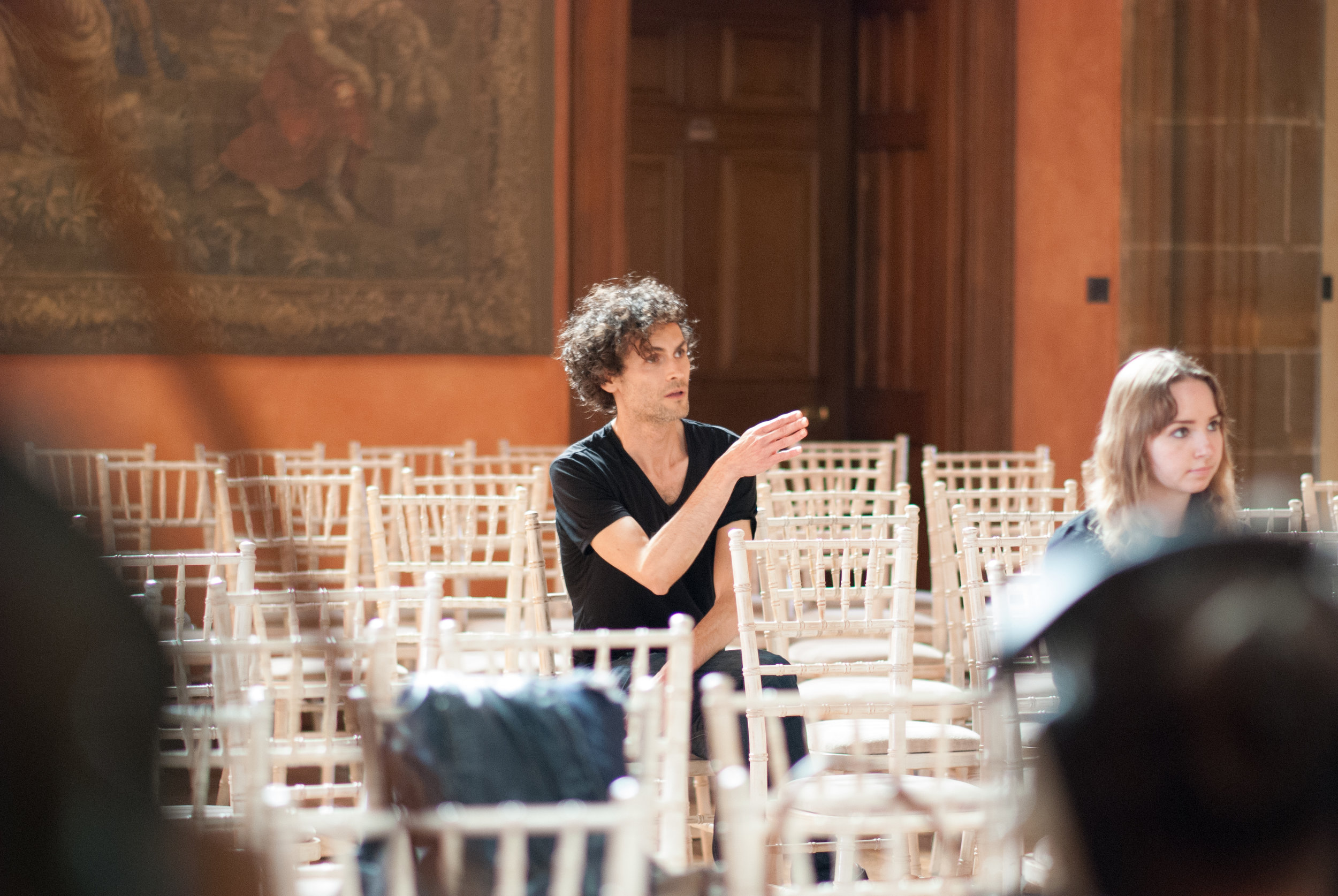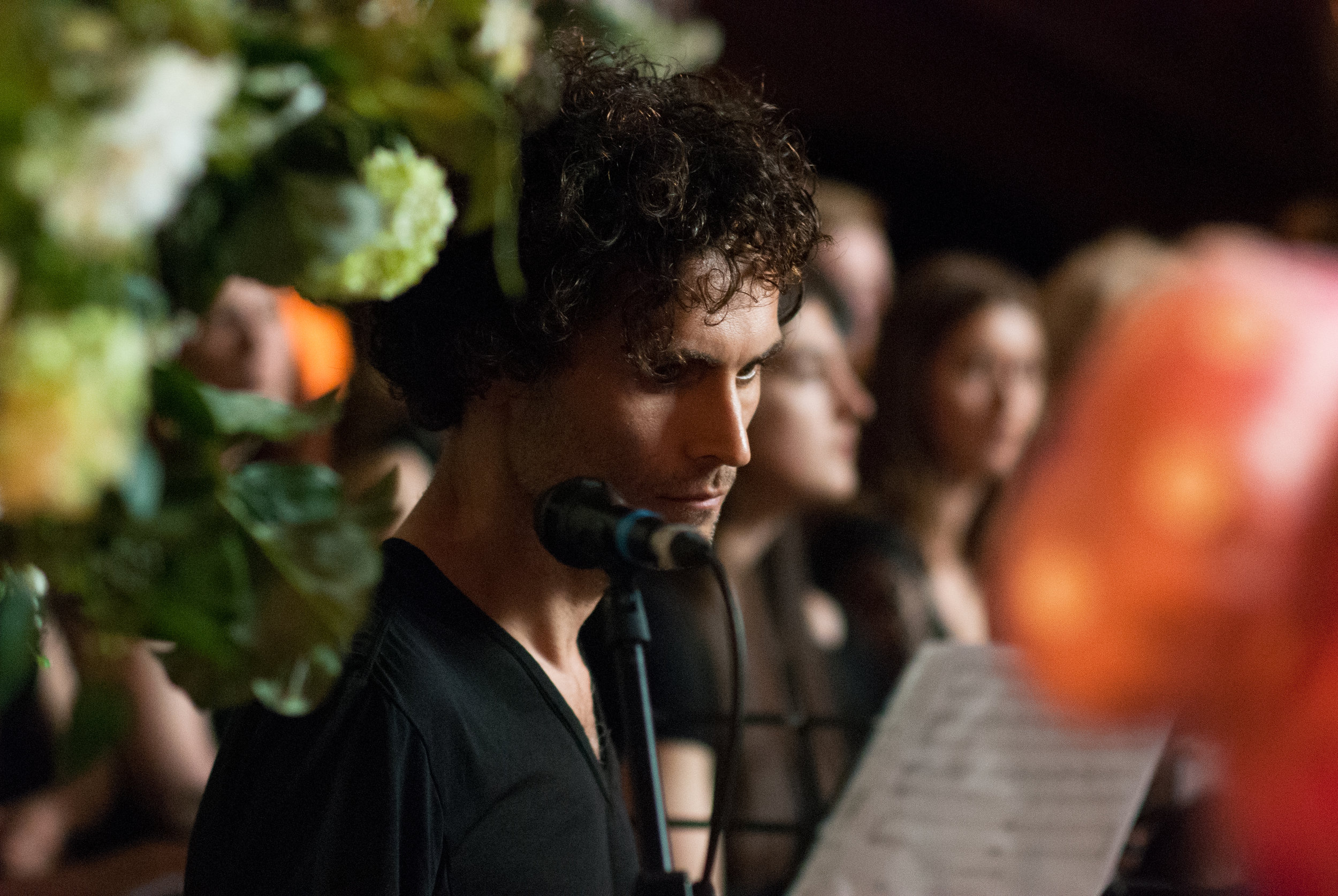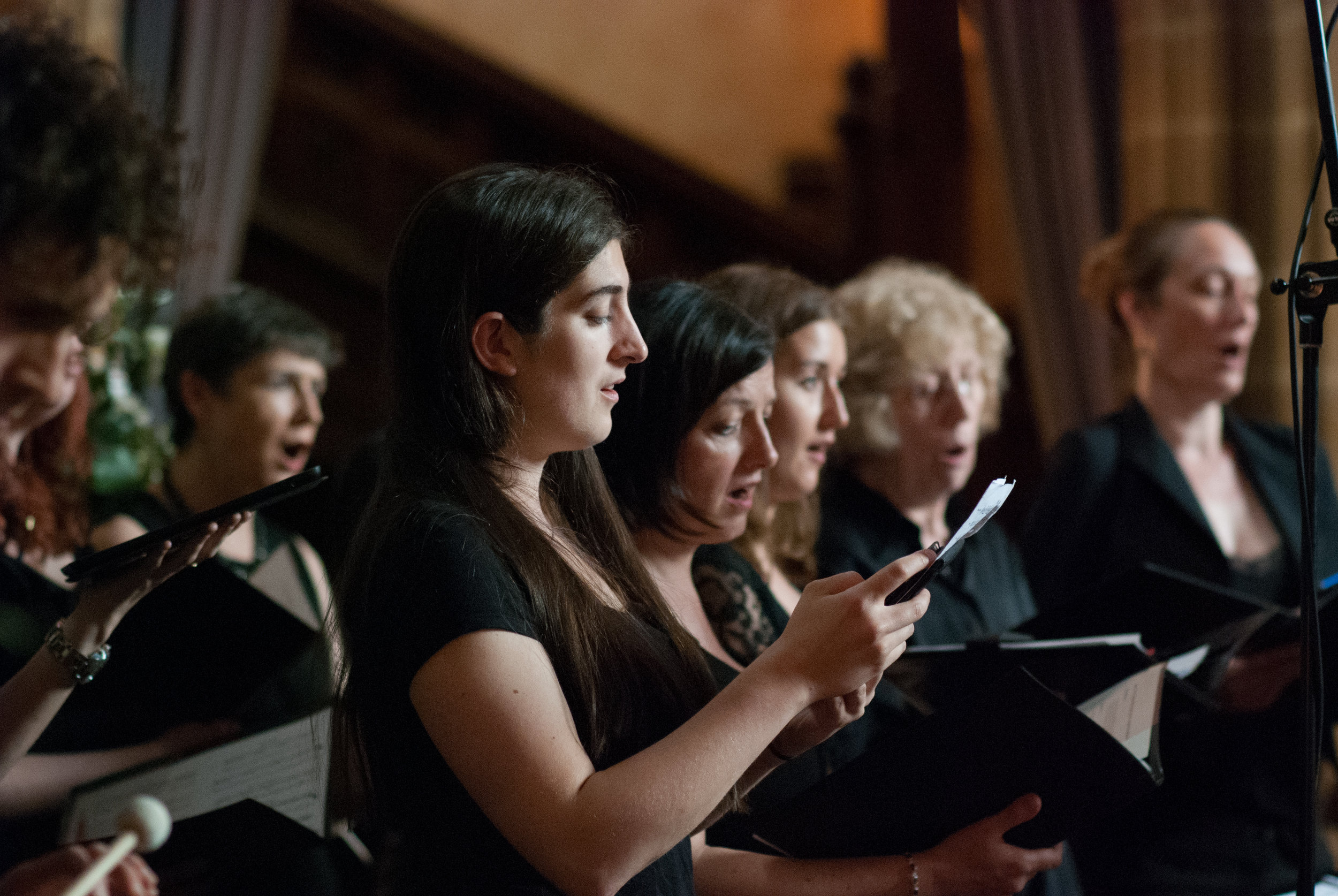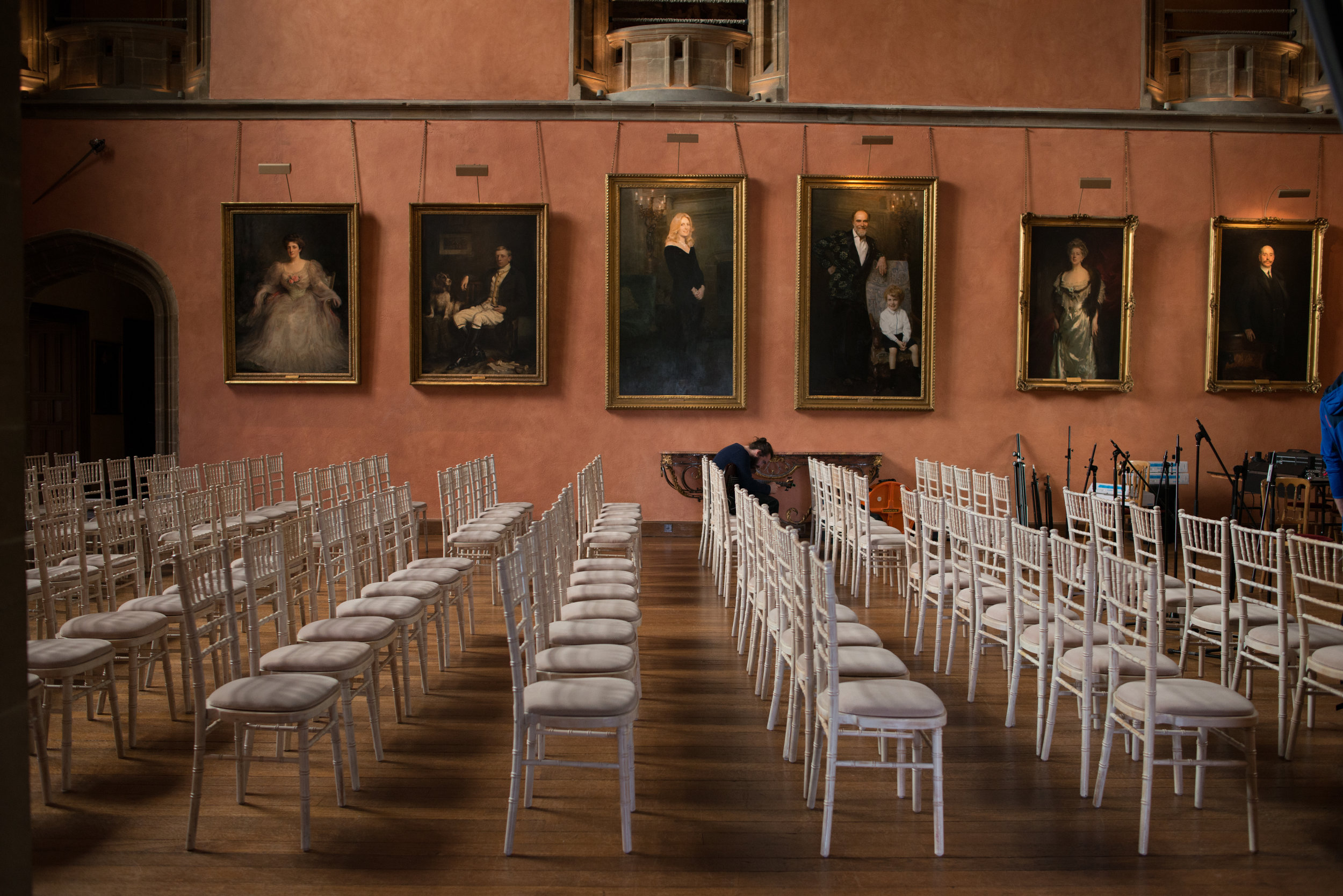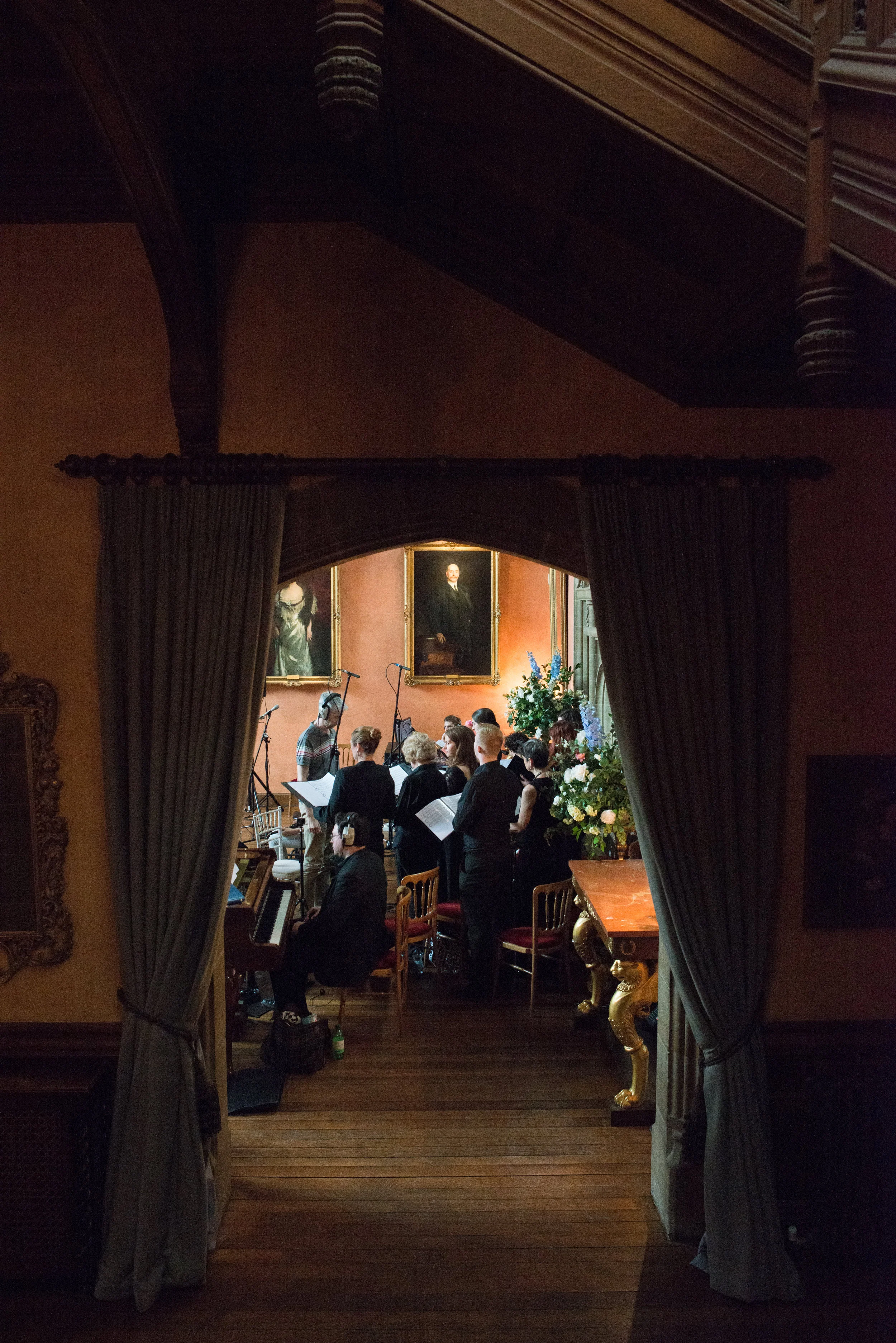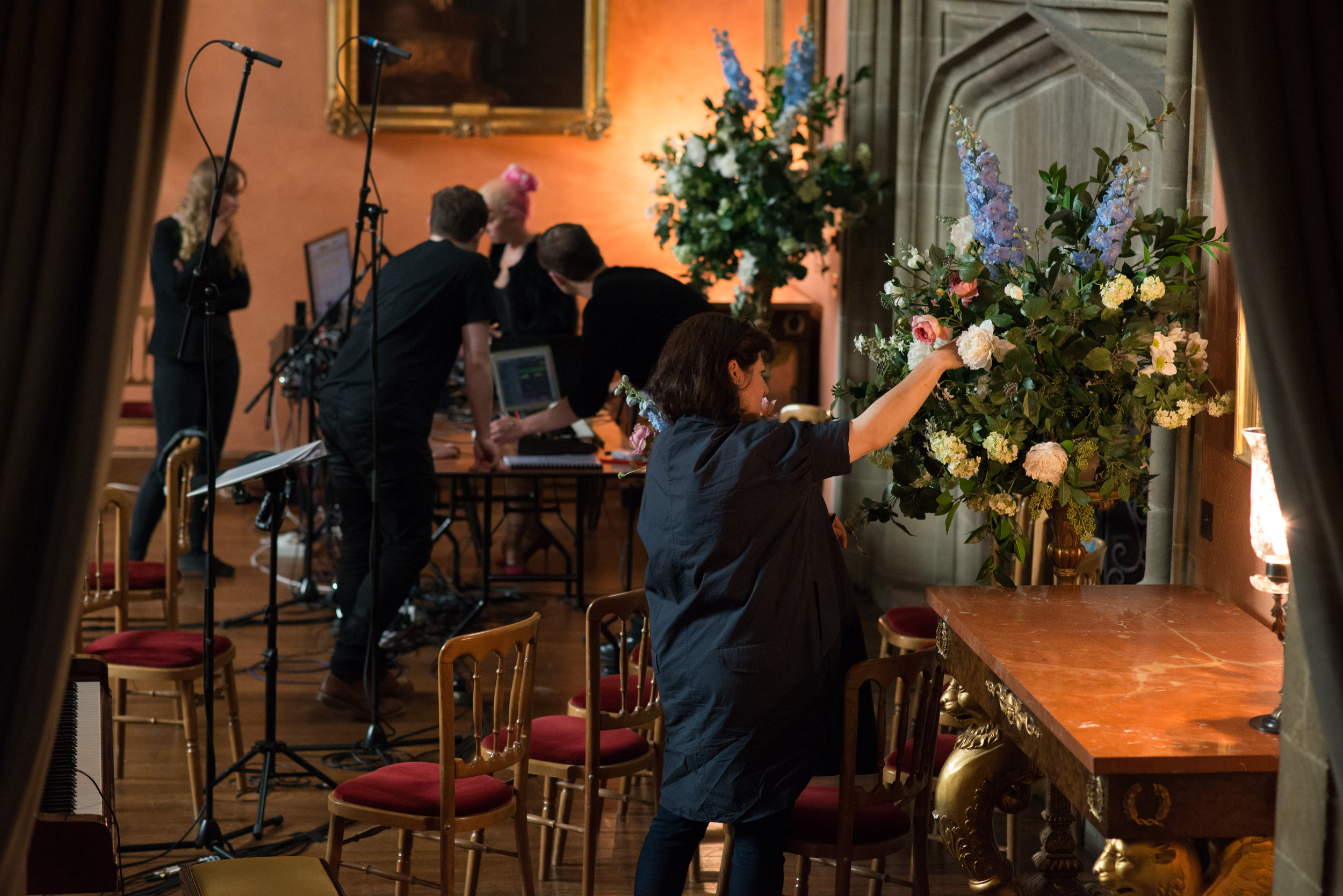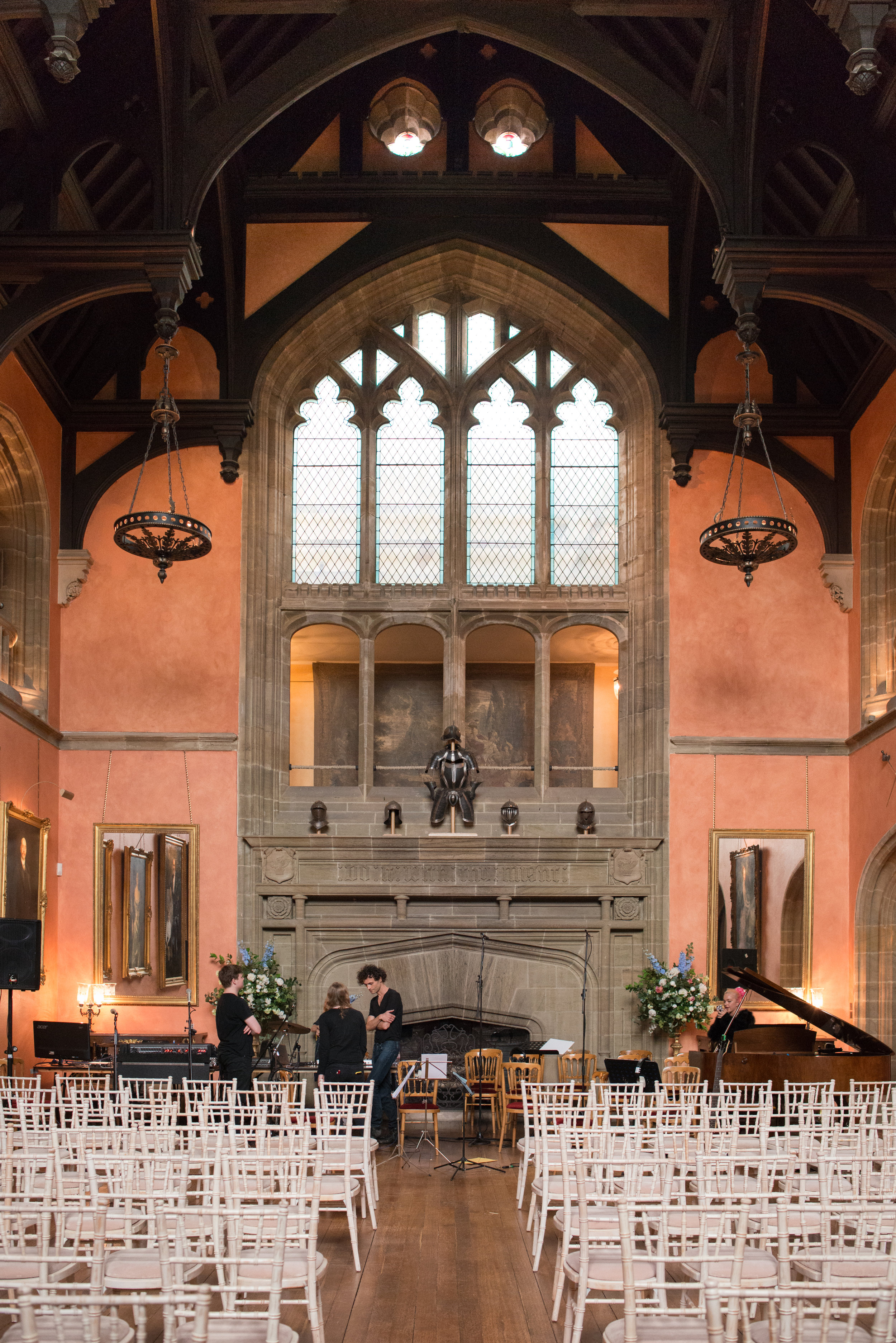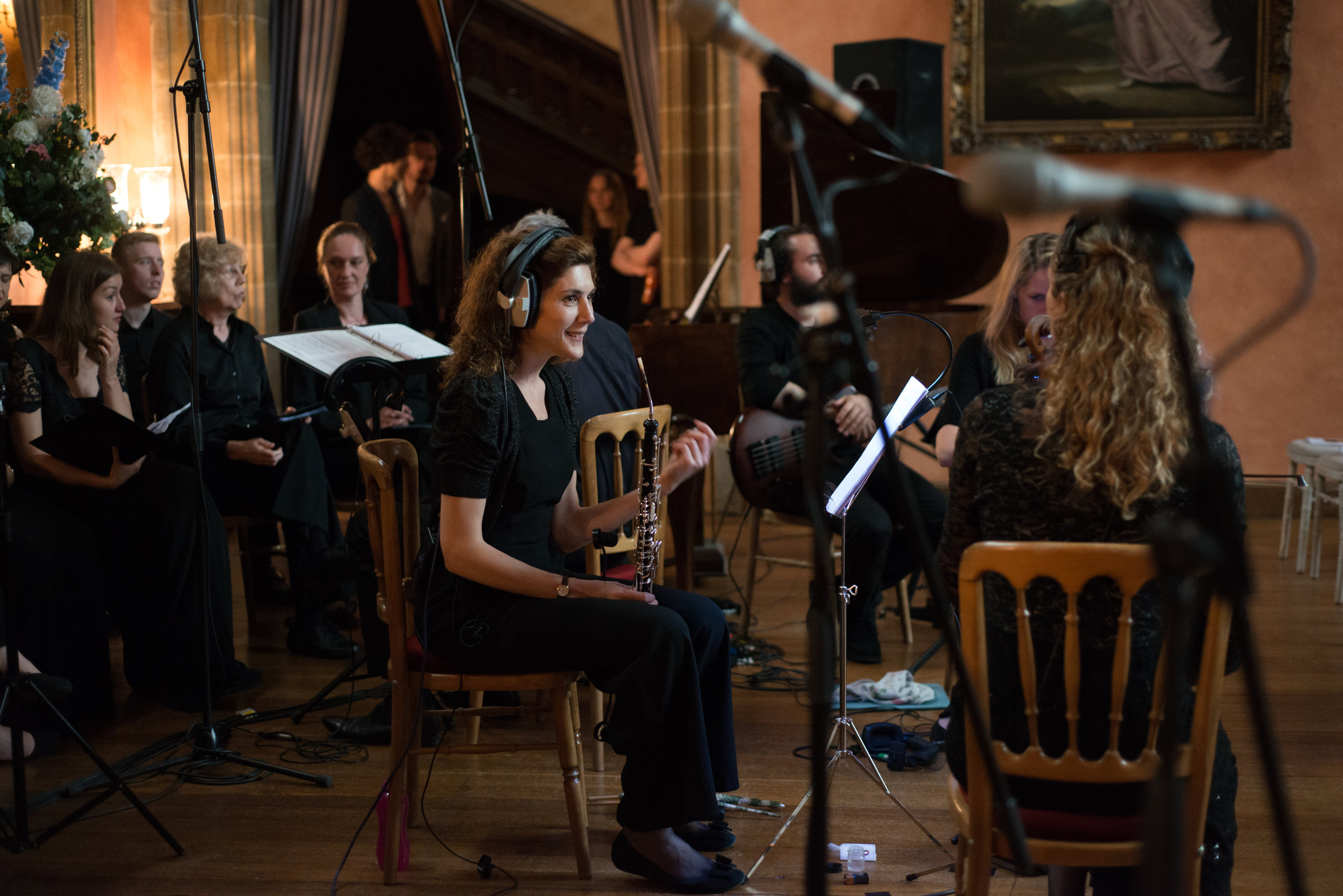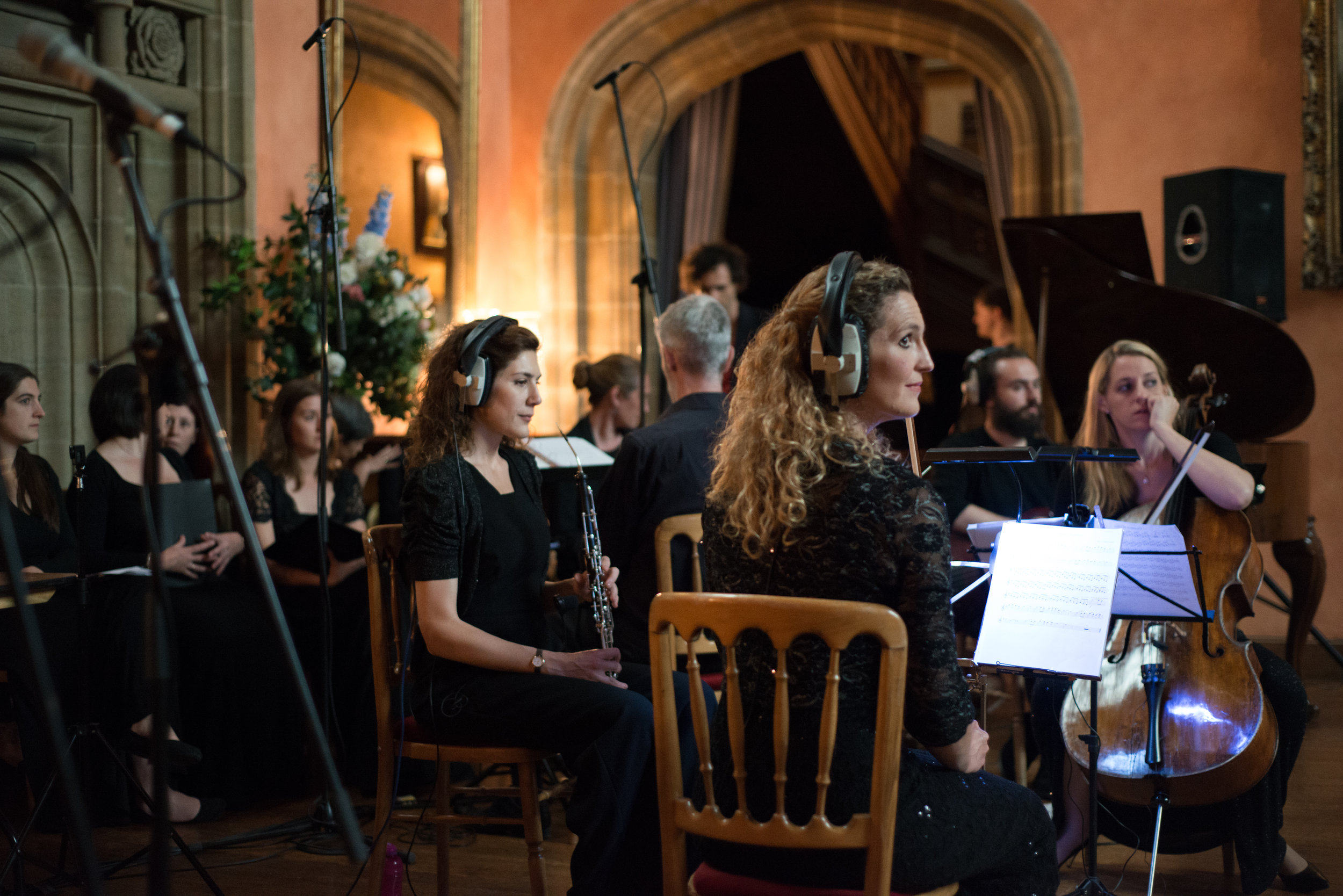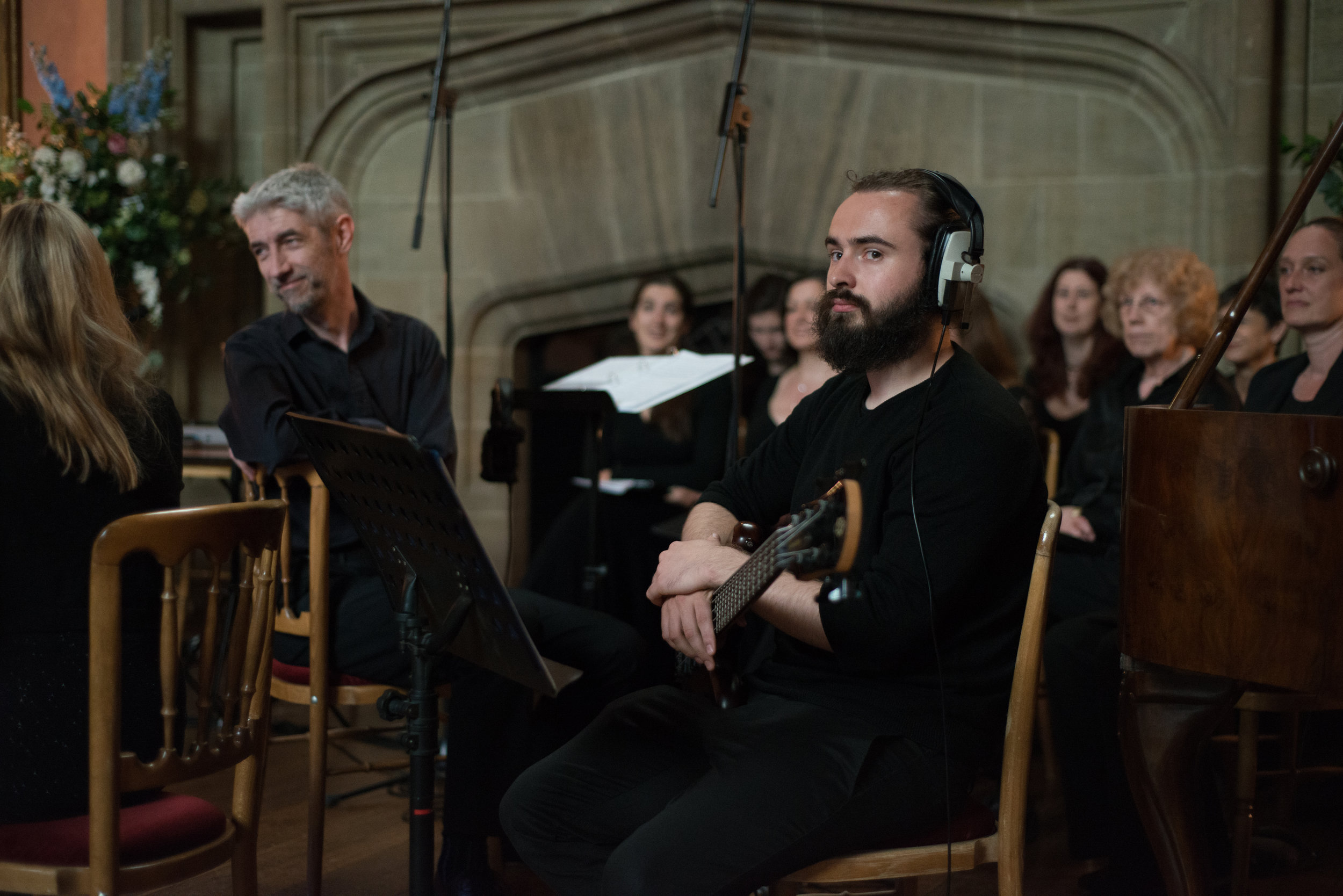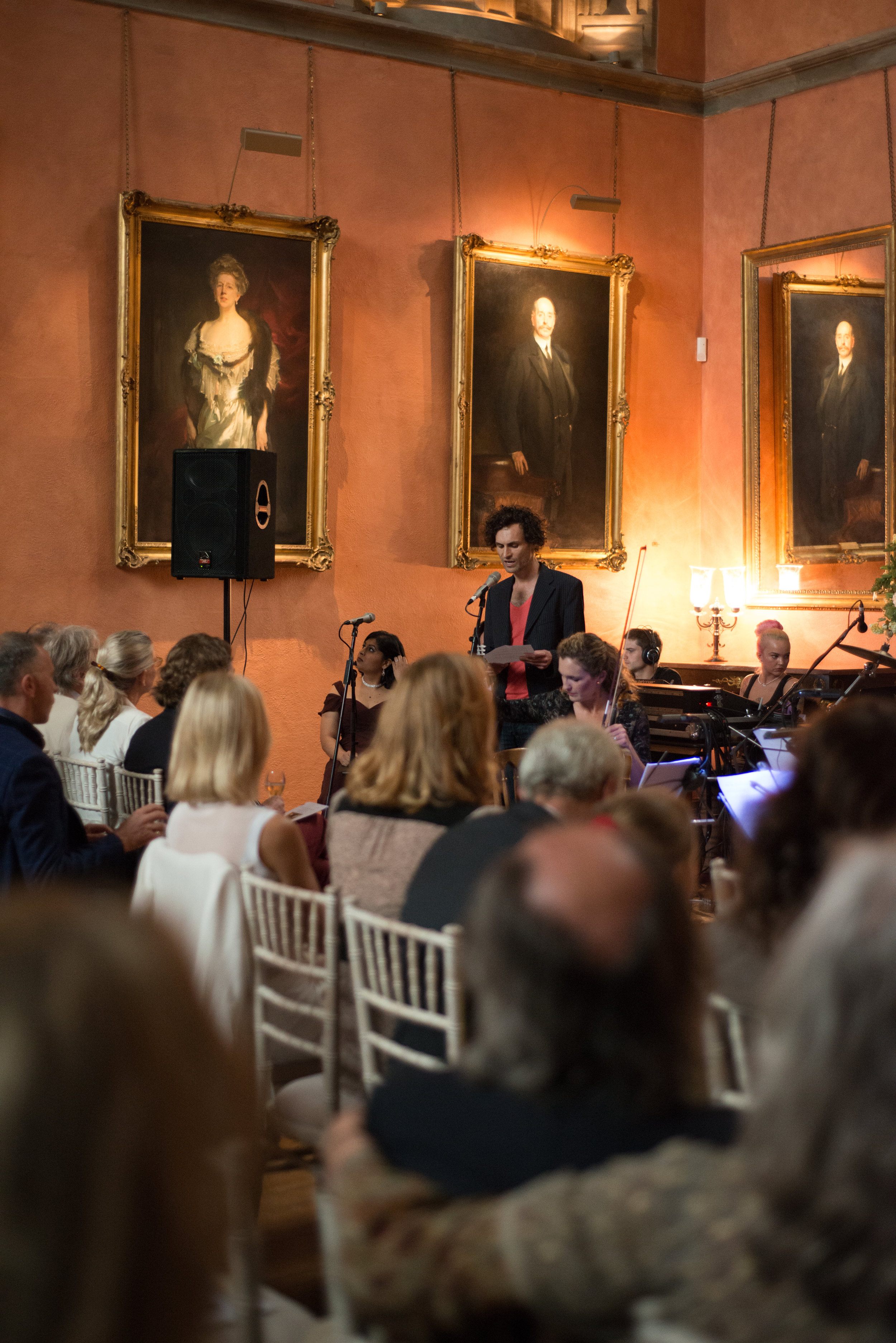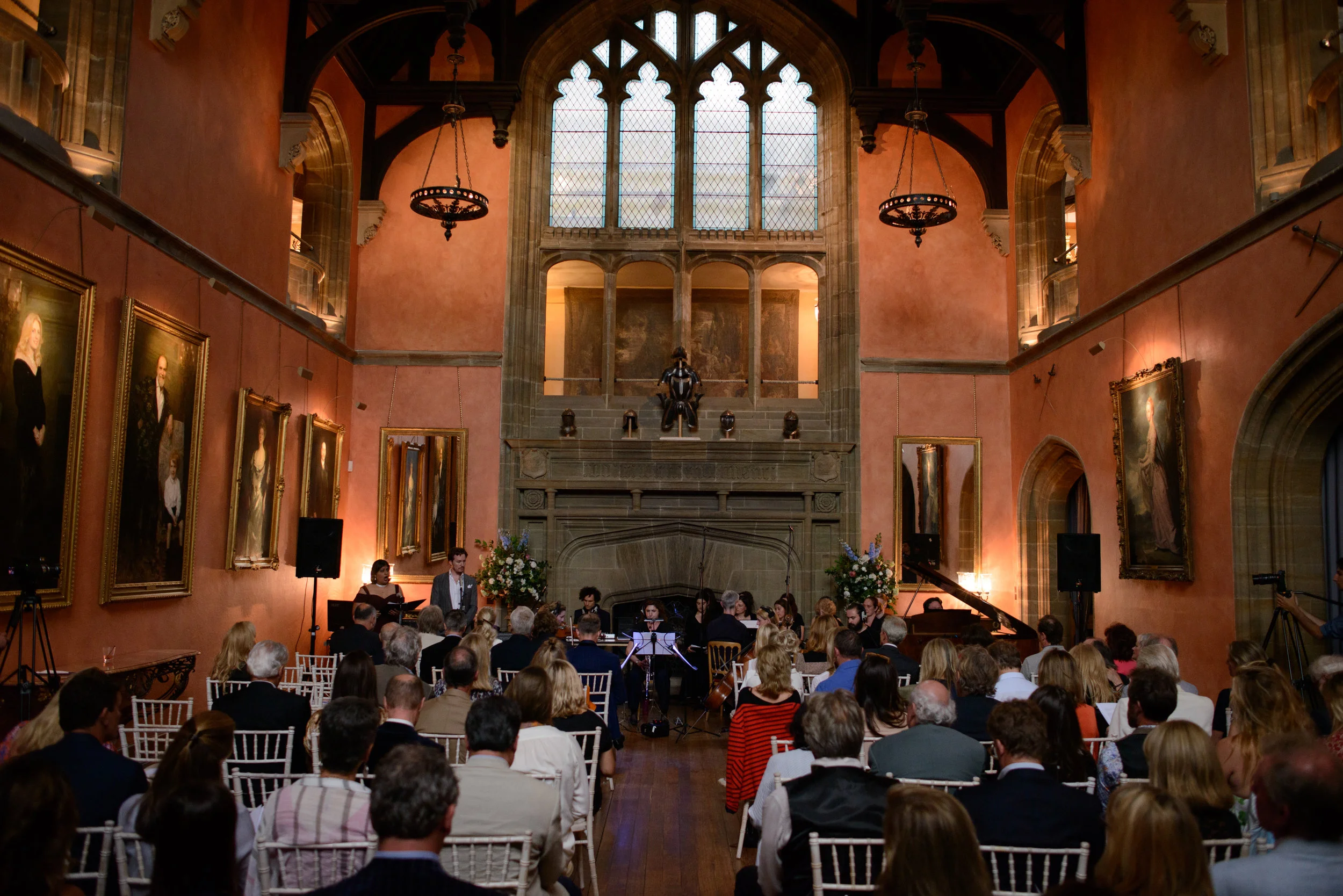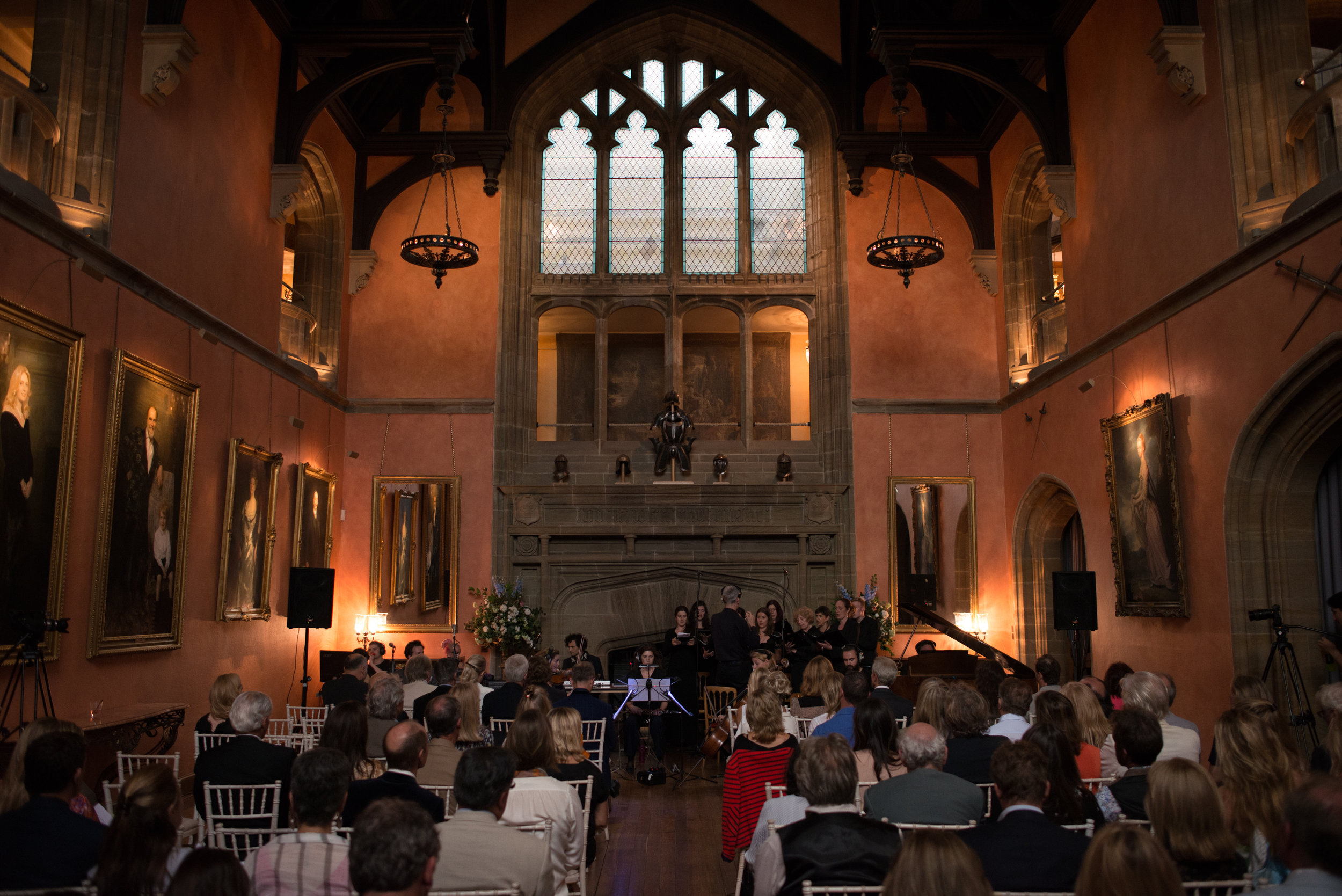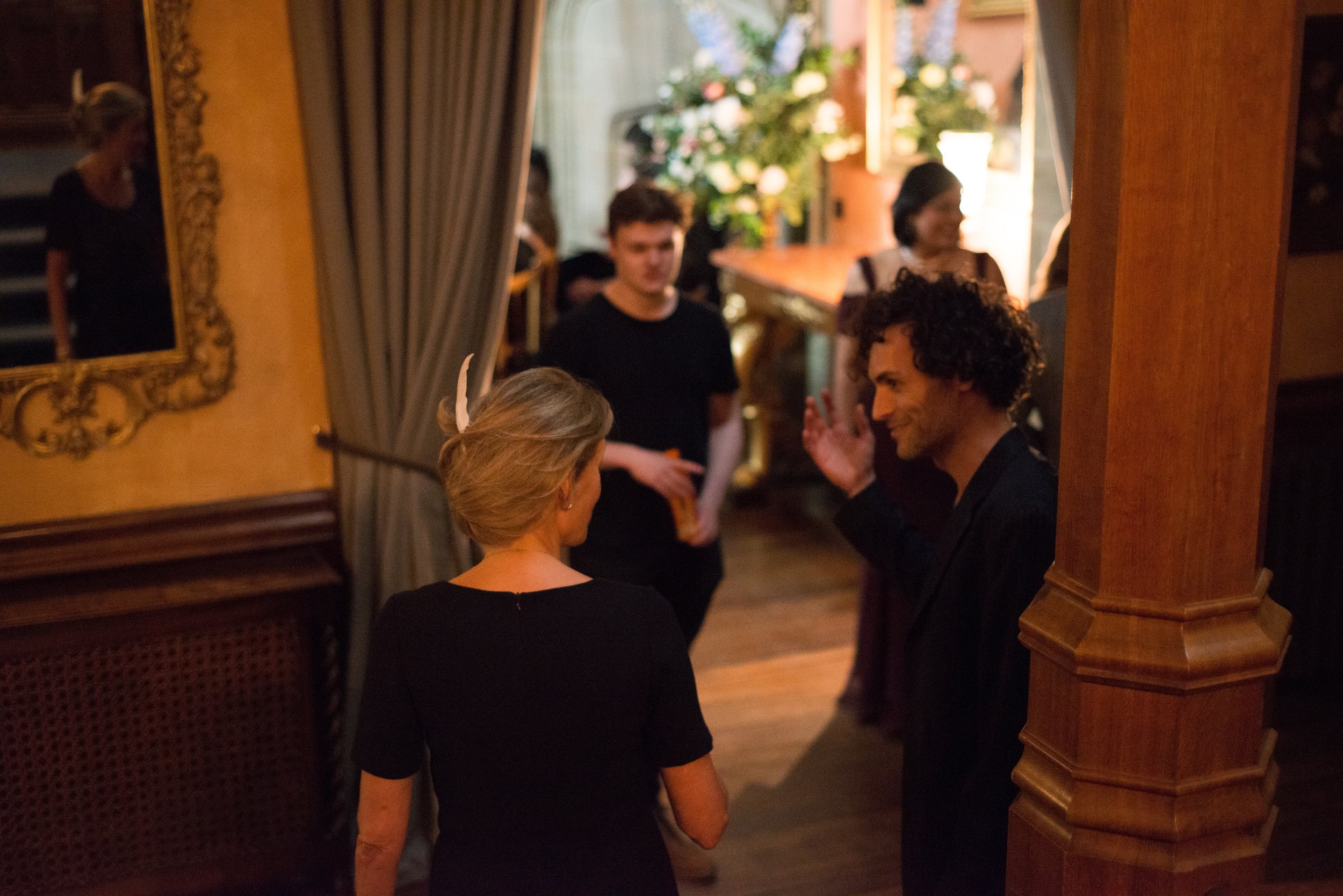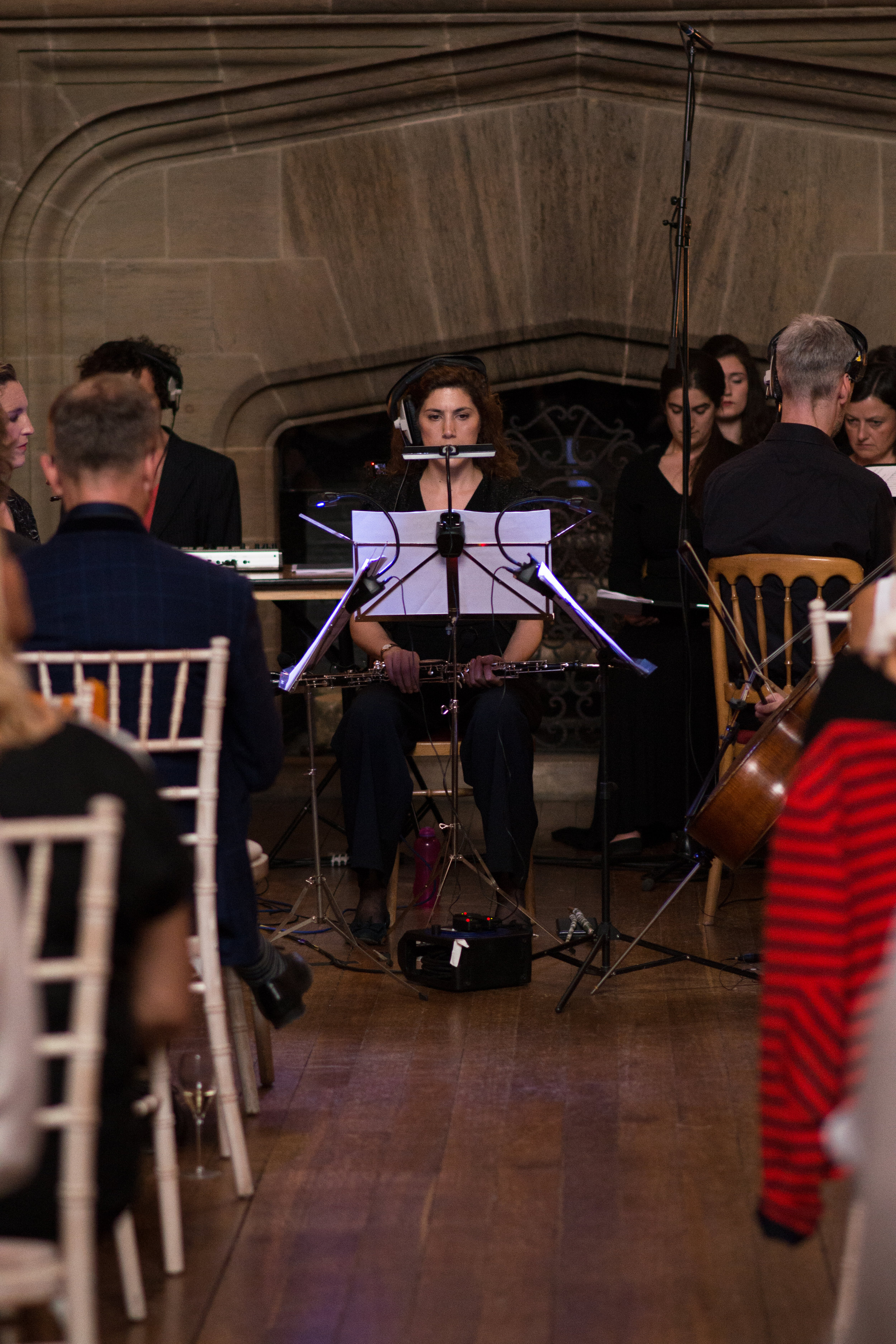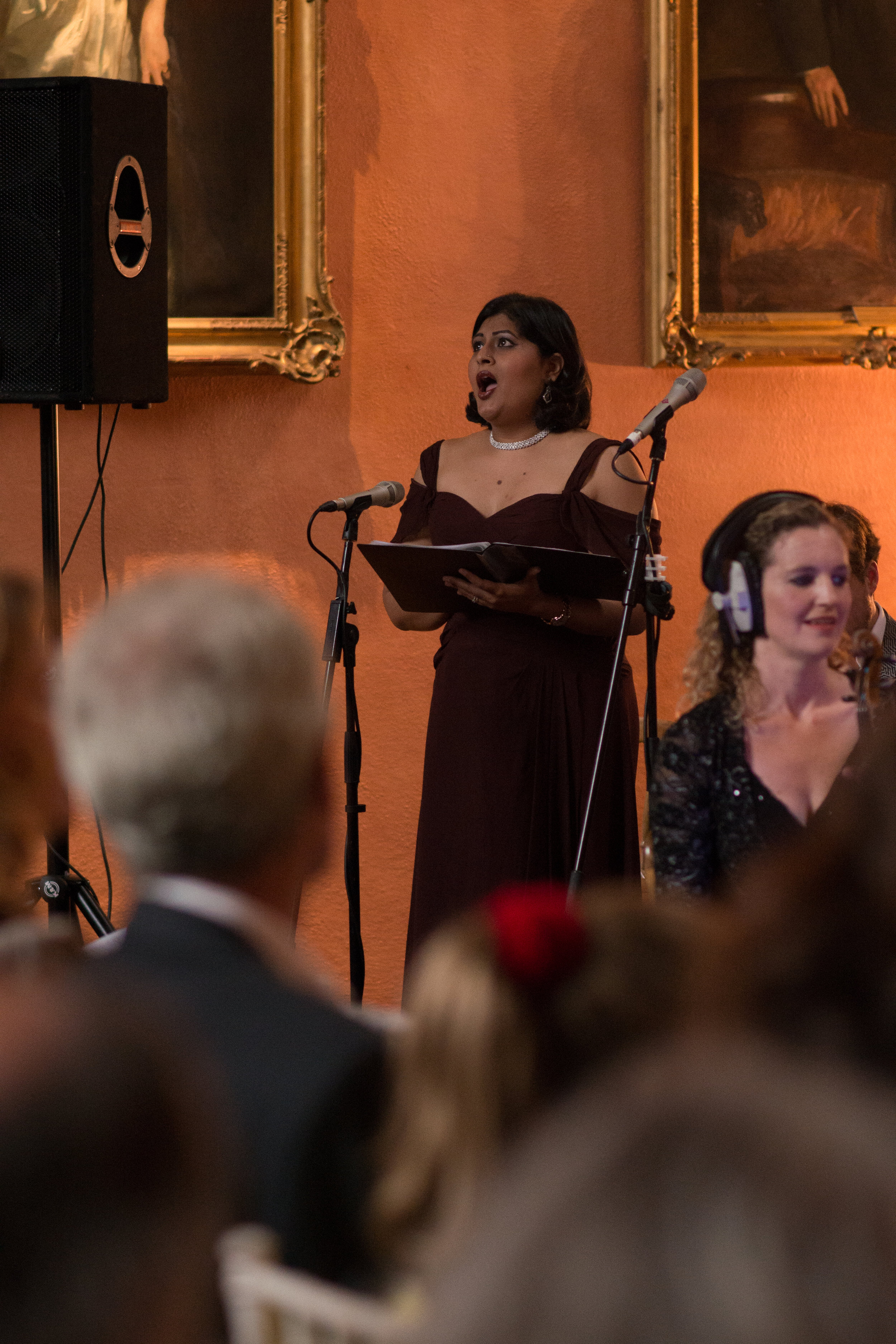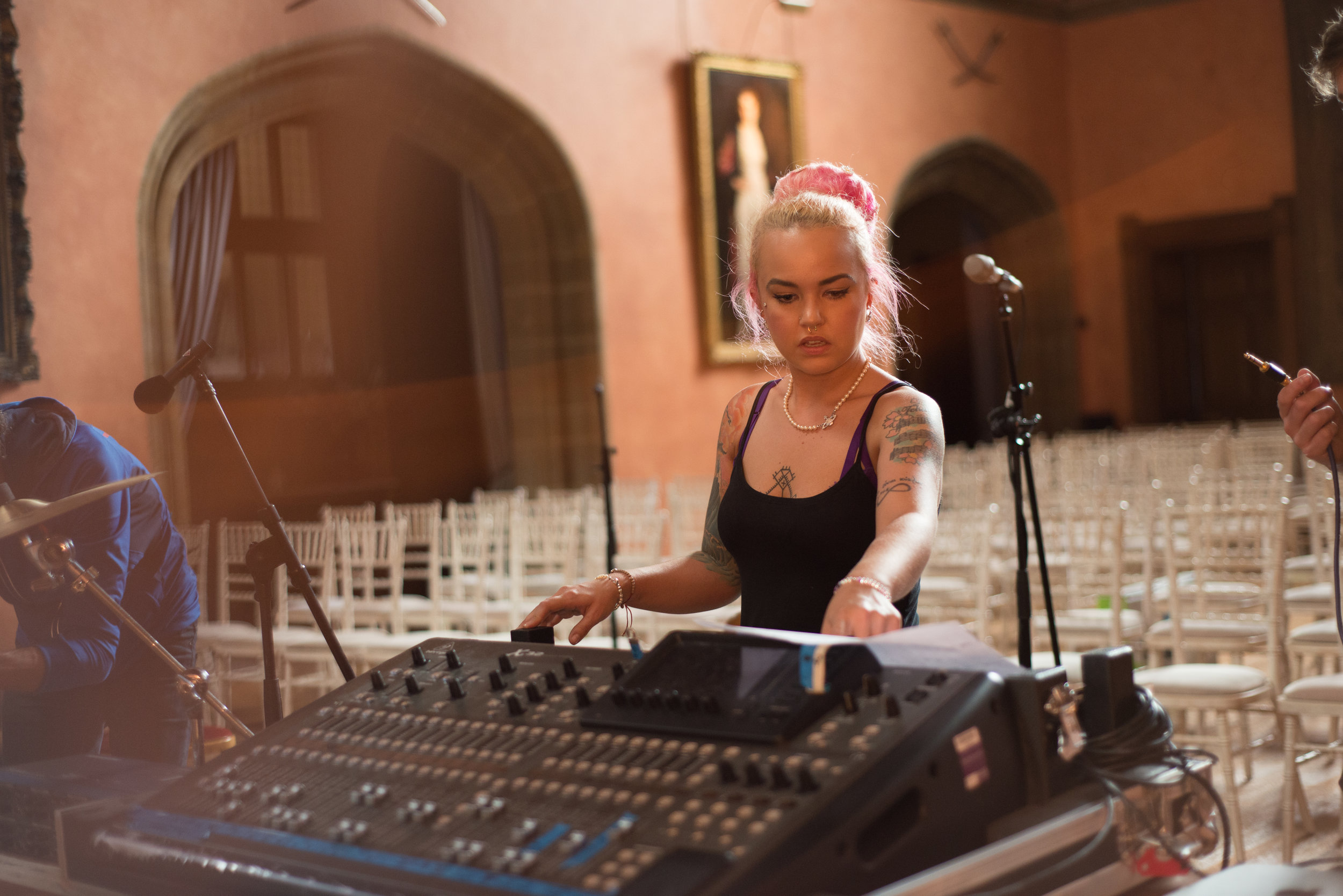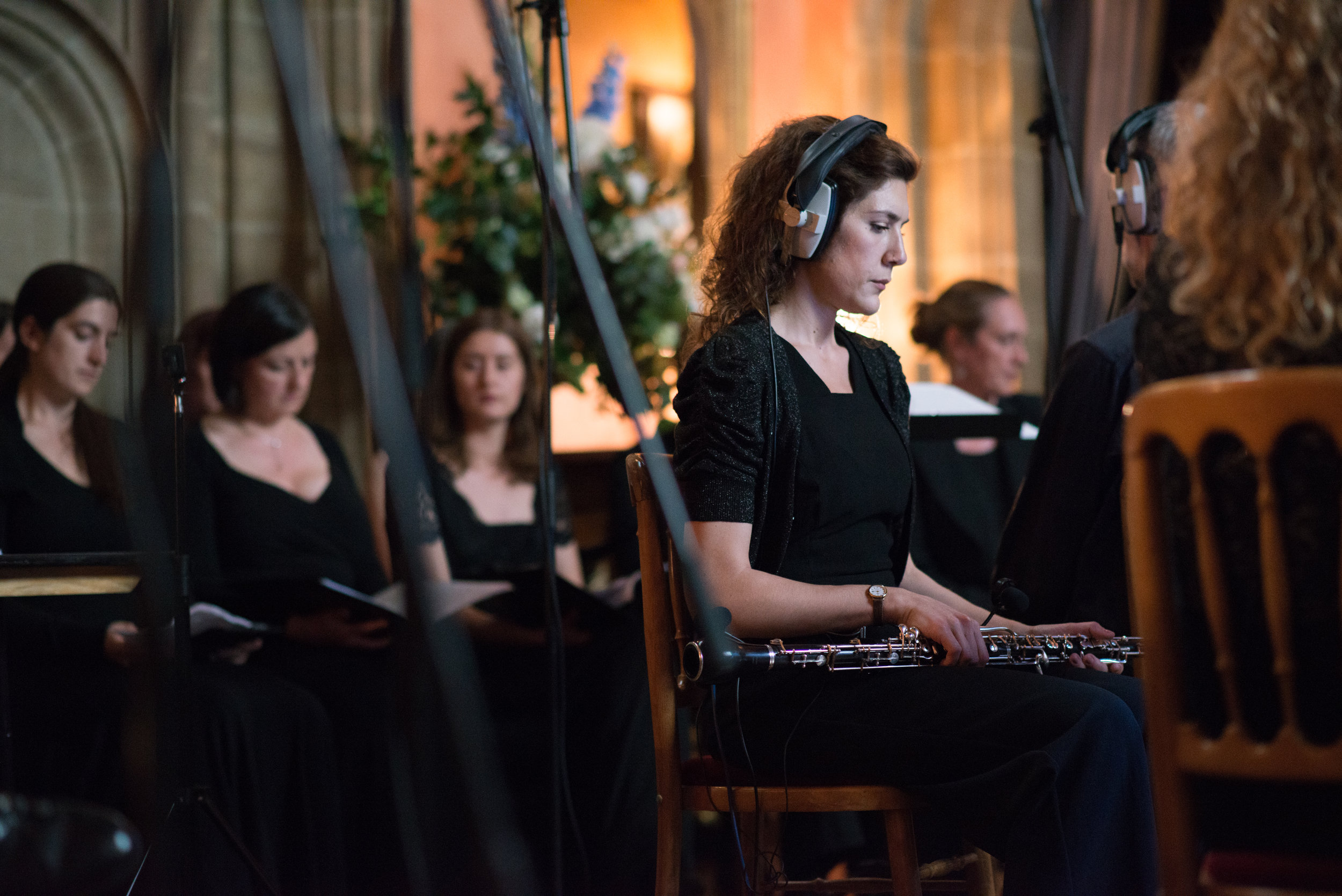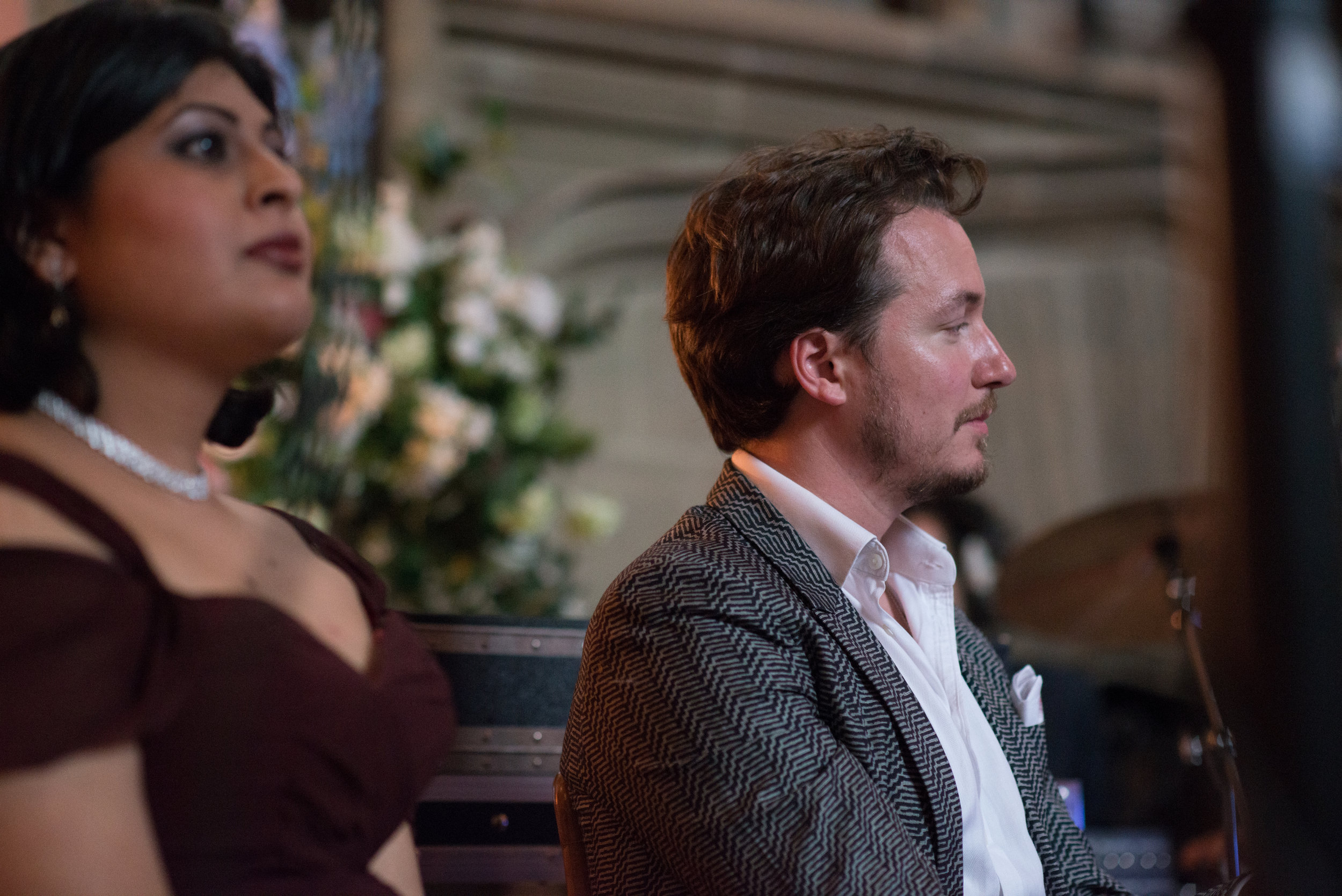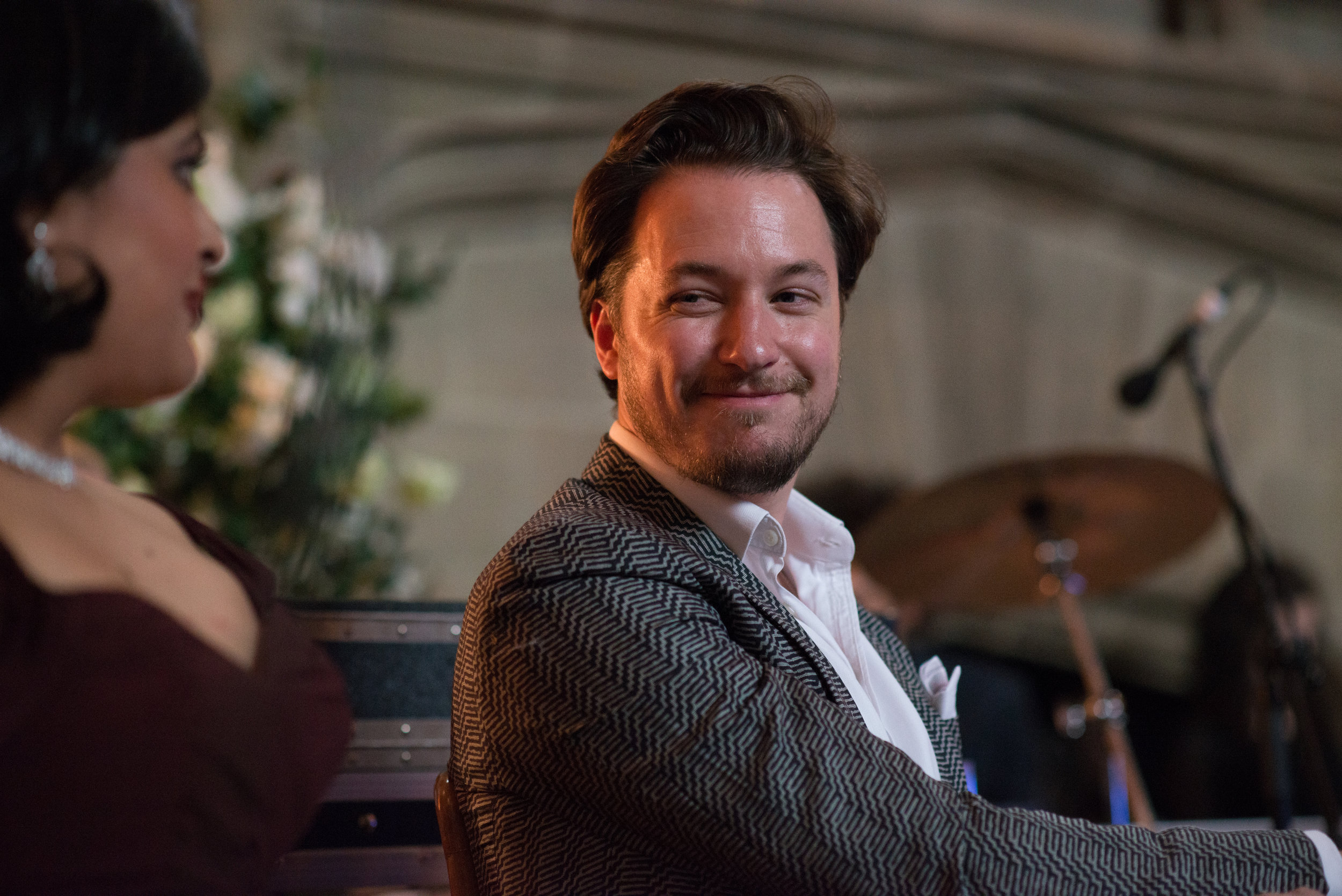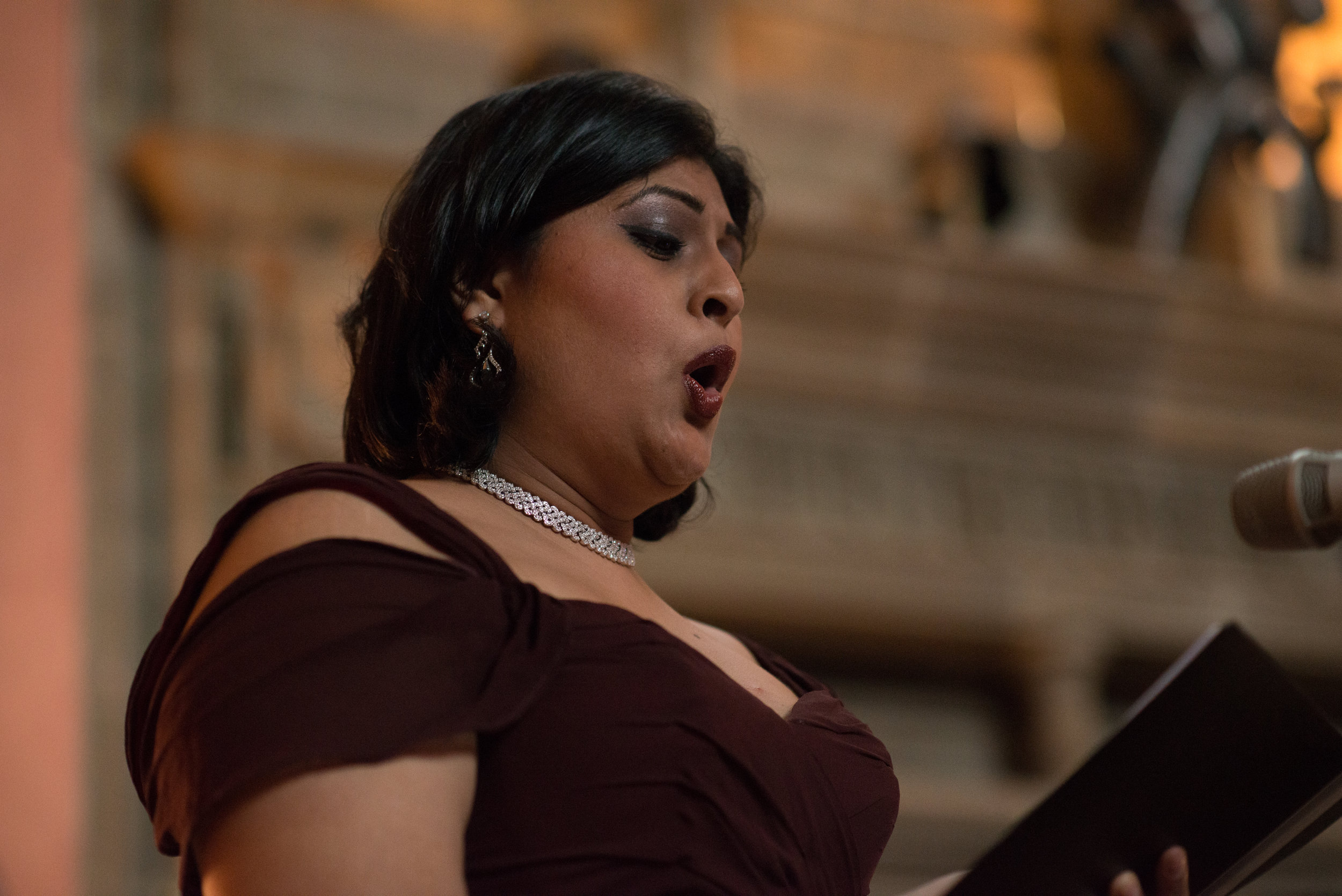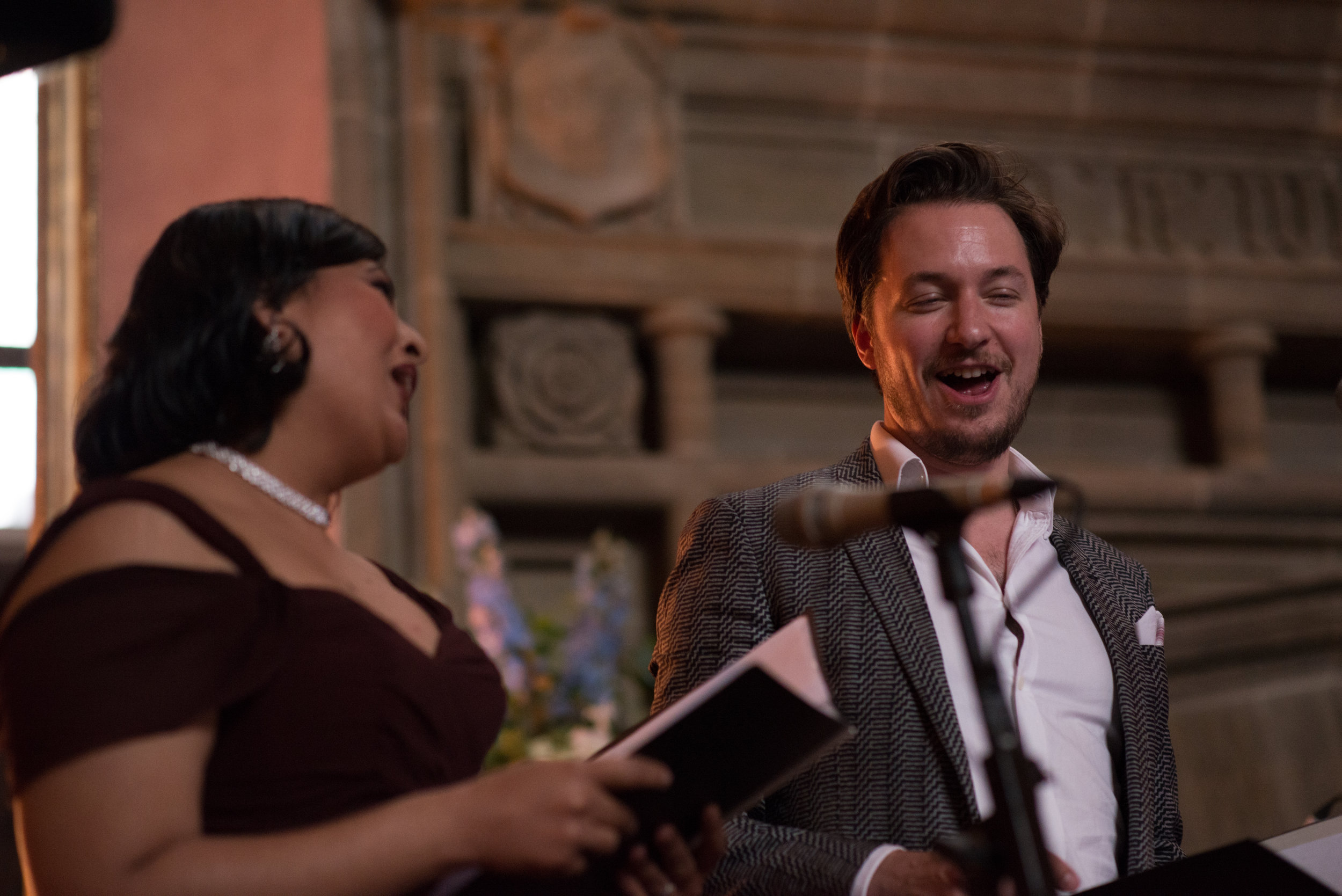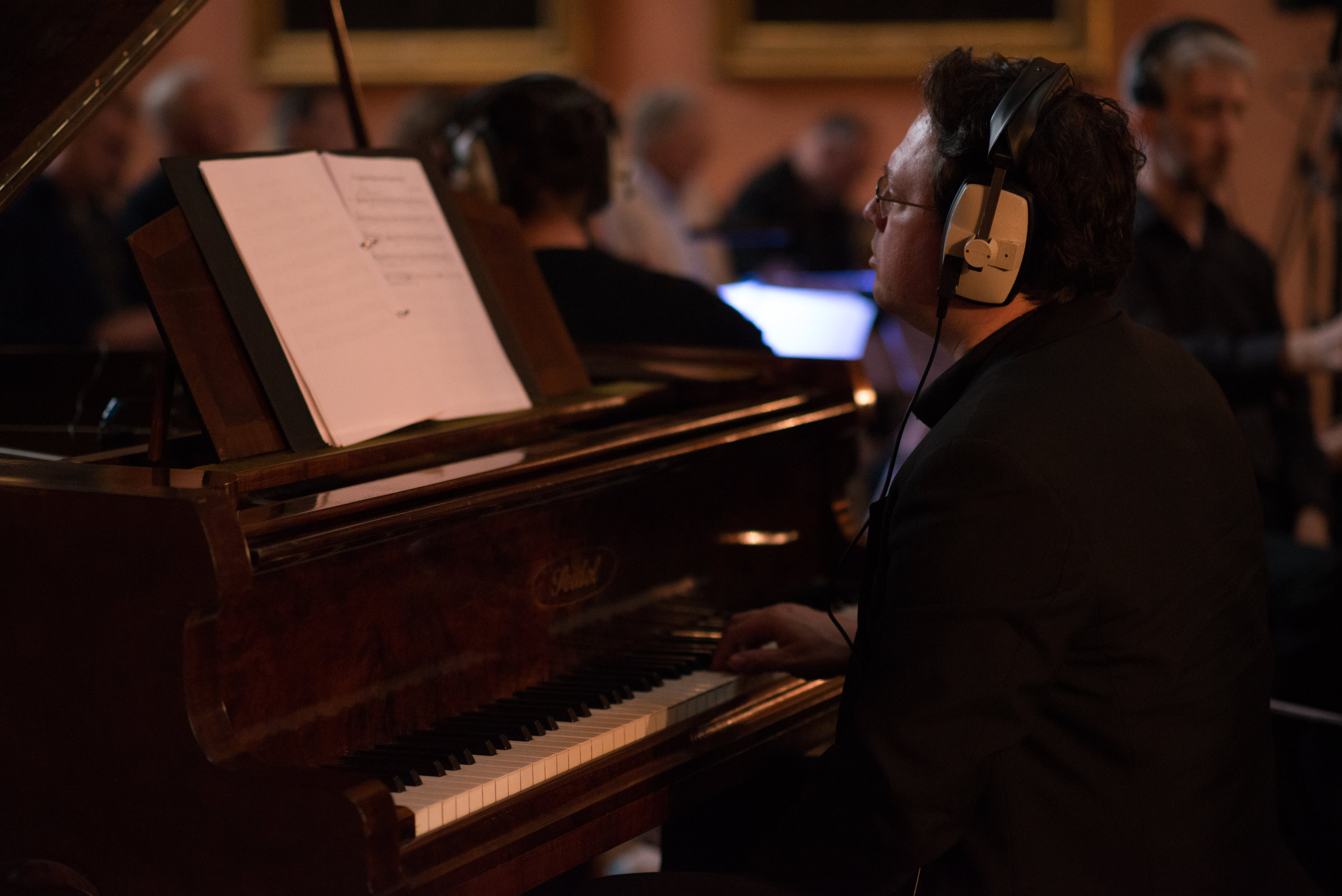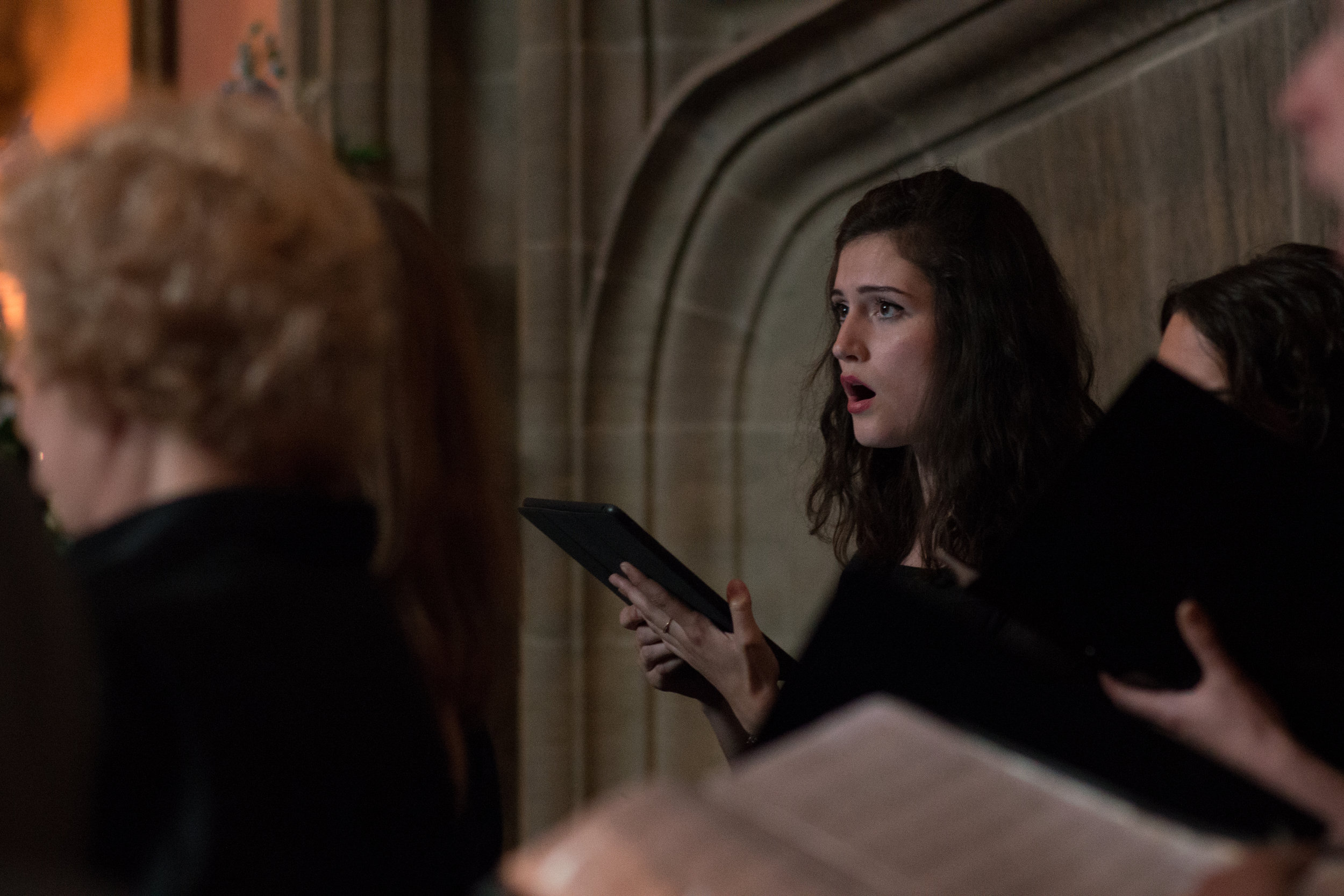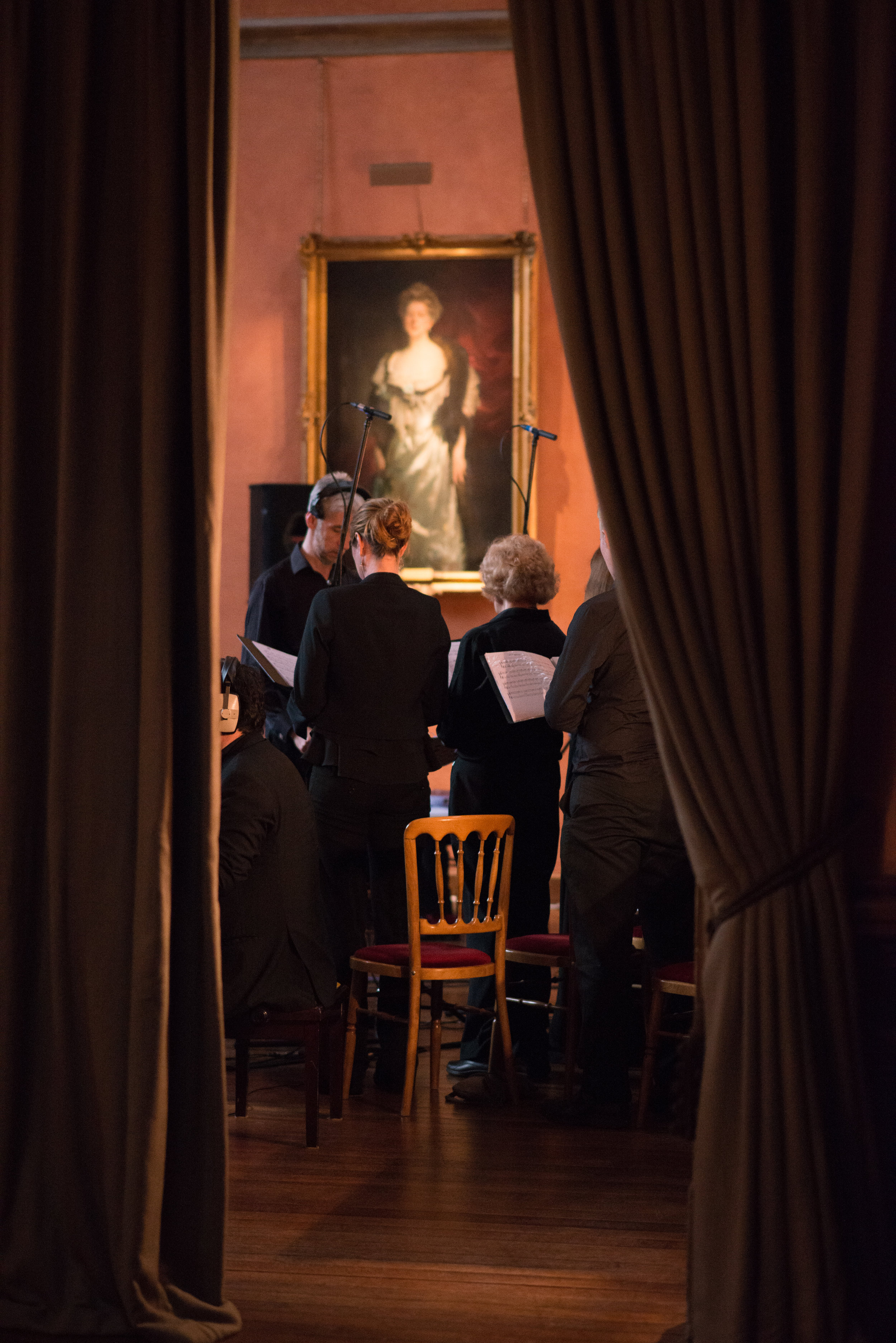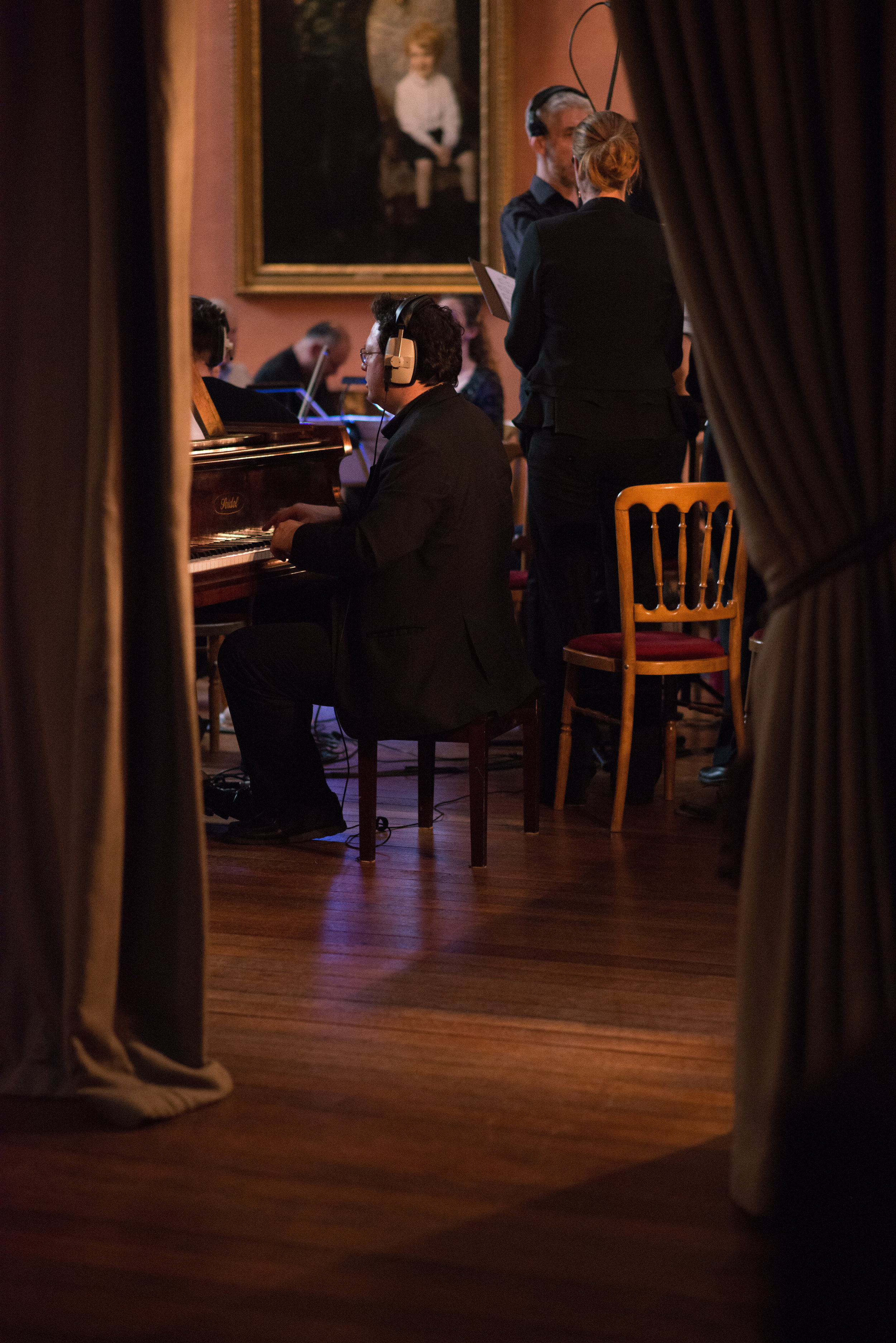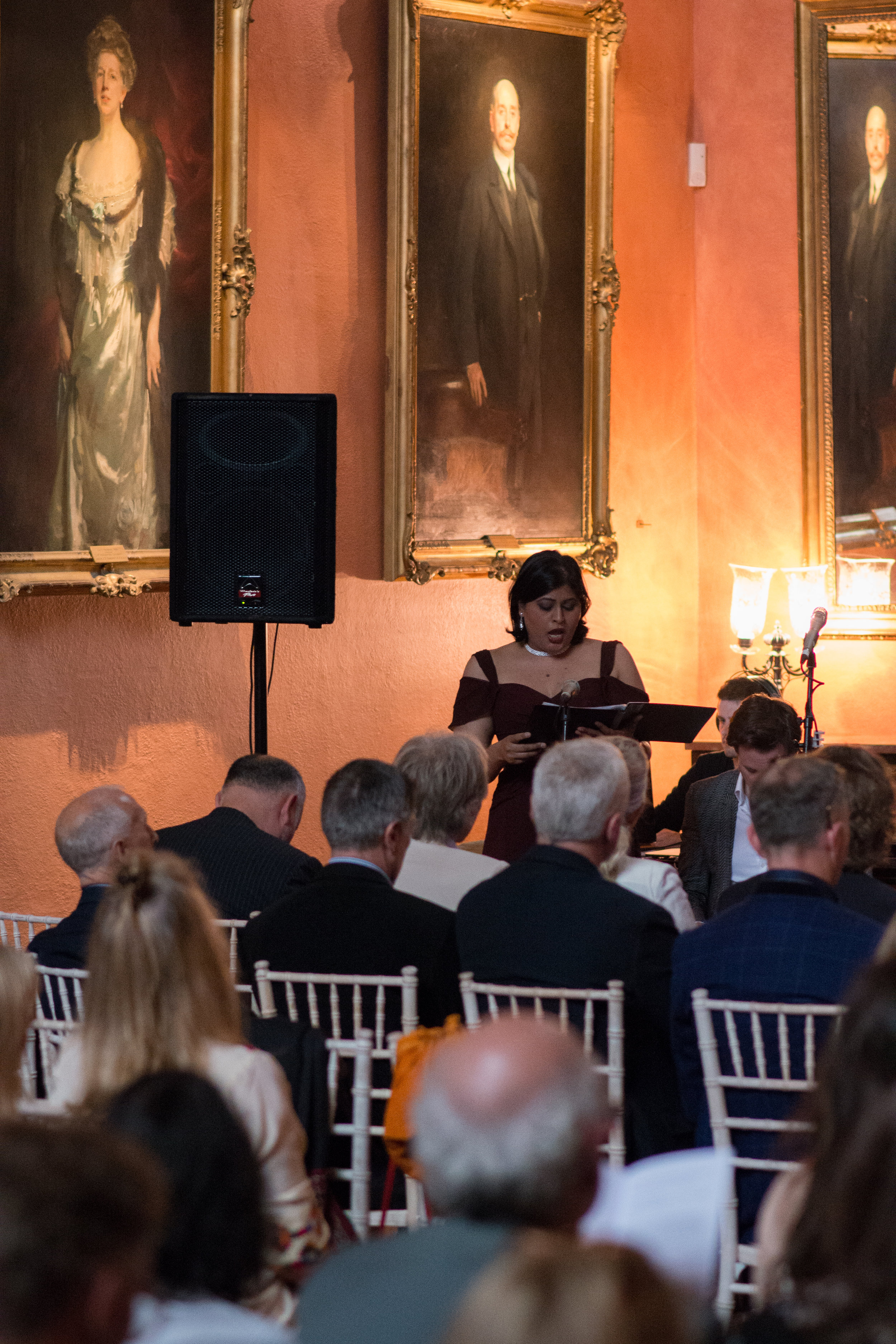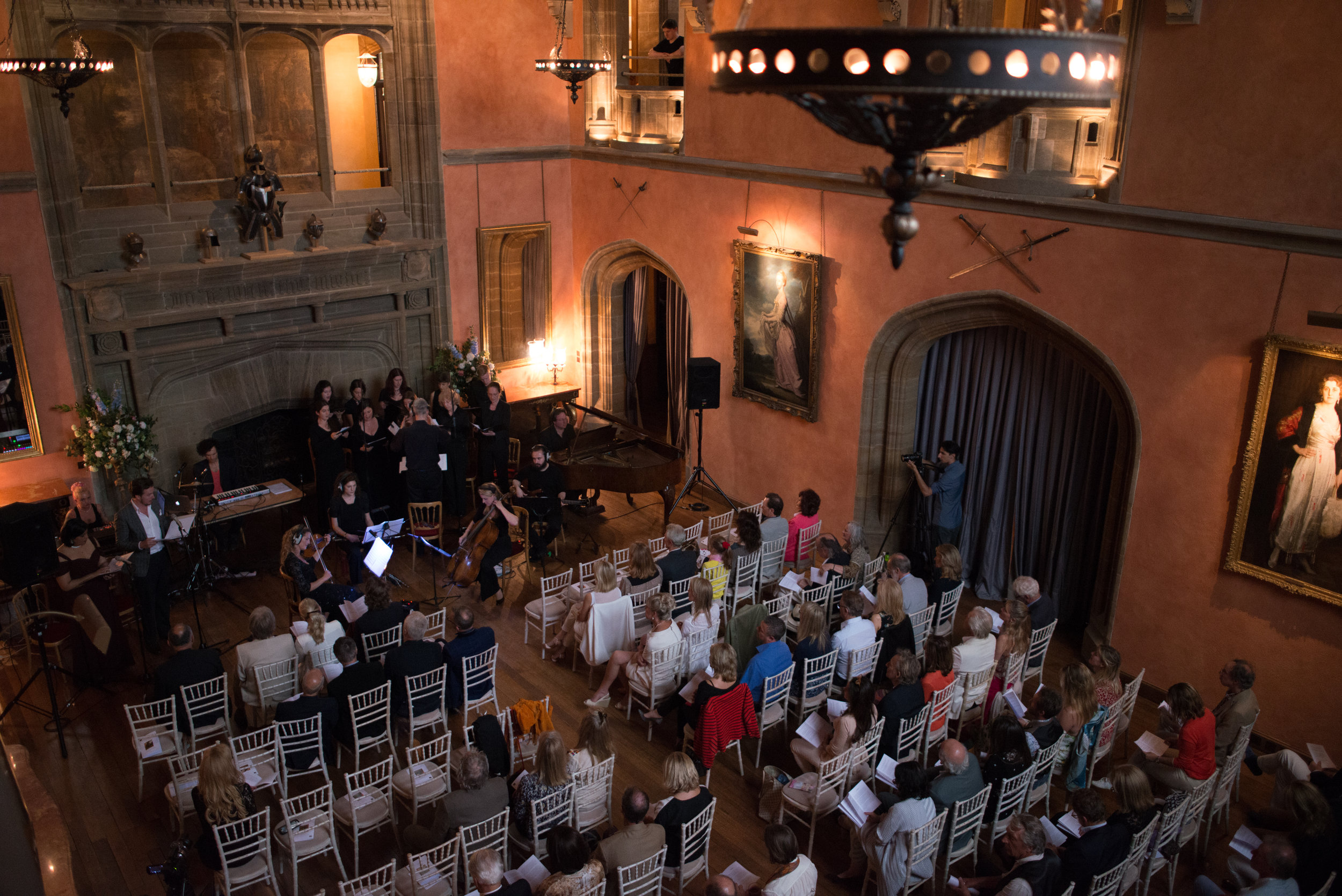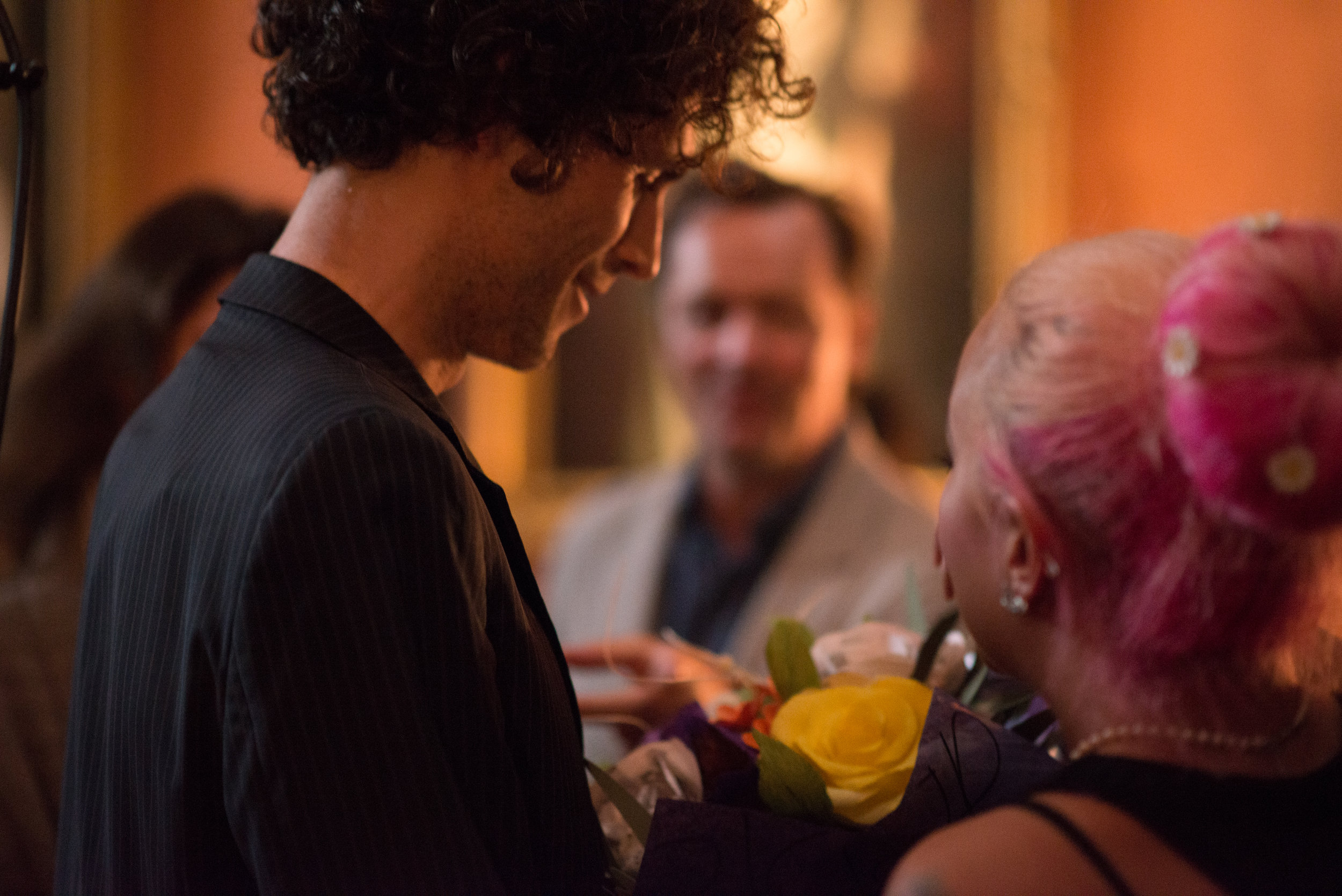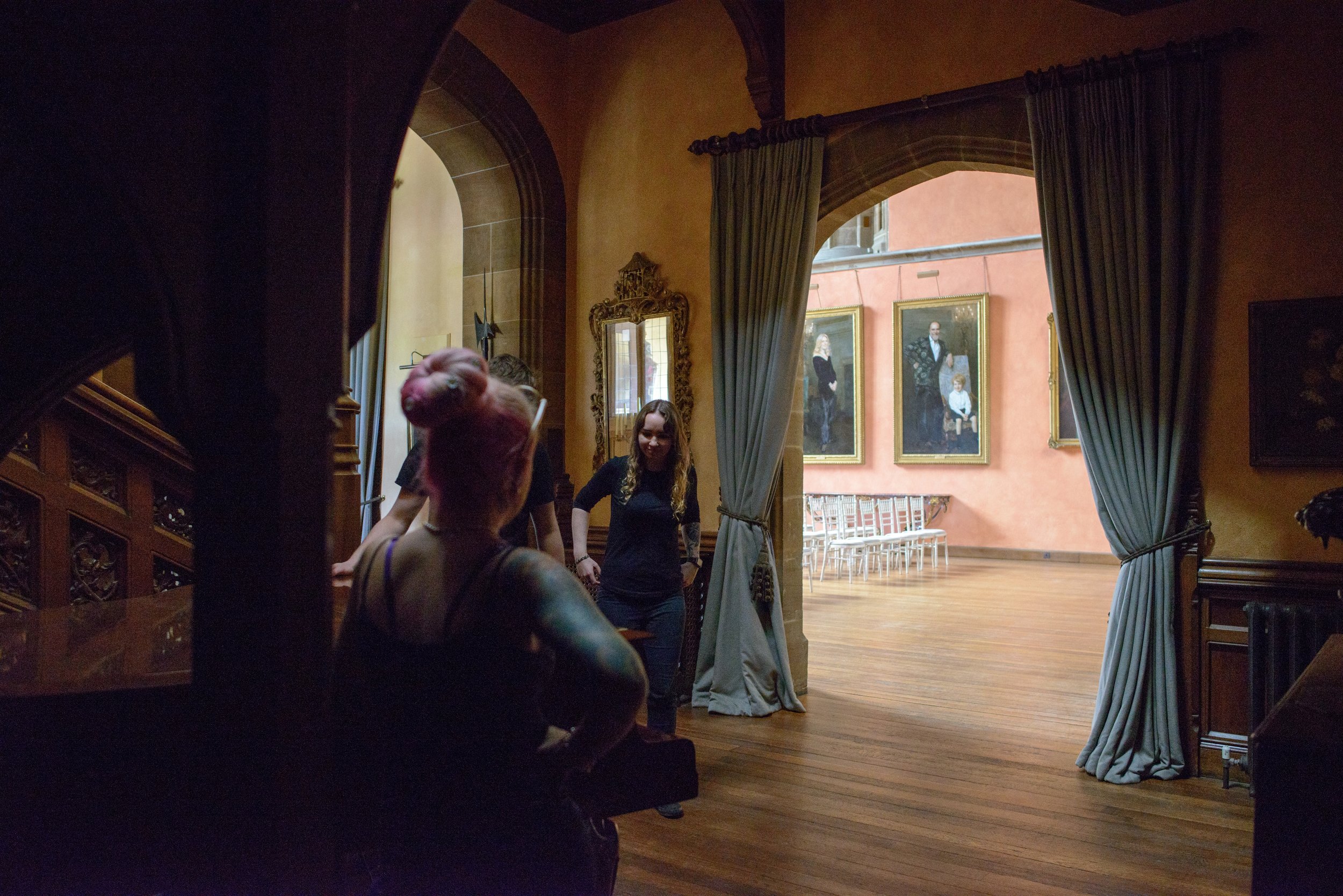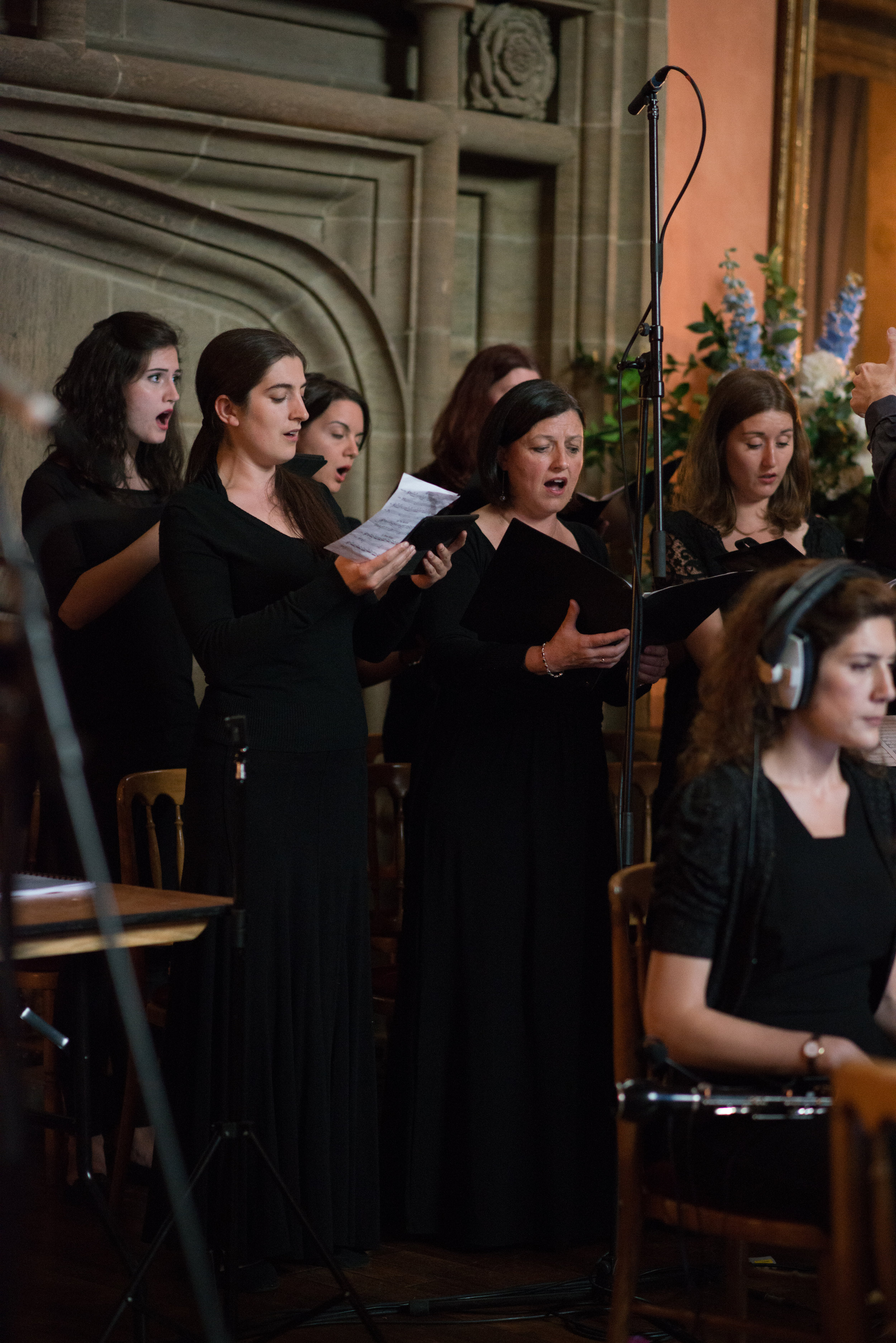inside ‘2045: THE YEAR MAN BECOMES IMMORTAL?’
“The development of full artificial intelligence could spell the end of the human race.”
INCEPTION
The idea of death has always fascinated me. I remember, as a child, wondering what would happen when I died. I don’t know if that’s something that other children thought about too, I never shared these thoughts with anyone, but this is something I would often think about before falling asleep, besides of my desire of becoming a footballer for FC Barcelona. I wondered what would happen to the ‘me’ when I died, whether this ‘me’ would just disappear completely and how that would actually be possible at all.
These thoughts stayed with me throughout my life, and growing up I tried finding some answers by learning and exploring different religious, philosophical, new age and scientific paradigms. This exploration was full of contradictions and paradoxes and, instead of providing any concrete and specific answers, helped to lay the foundations for a lifelong path of spiritual enquiry instead, a path that possibly has given the most meaning and purpose to my life.
I’ve always held the belief that books, articles or any other important sources that would eventually become milestones in my path of spiritual enquiry would always find me, somehow. And that has always been the case until now. I would argue that it has been the same with people.
TIME MAGAZINE + Ray kurzweil
And this is how Lev Grossman’s article ‘2045: The Year Man Becomes Immortal’ came to my attention back in 2015. Technological Singularity - Ray Kurzweil’s prophecy dictated from his Google headquarters in Mountain View, California - offered a new dimension to my spiritual enquiry: conquering death through technology, and offered an interesting prism through which to reflect on the findings of my journey of spiritual enquiry. Kurzweil describes Technological Singularity as a point in time, a point at which new technologies - rather than being developed by humans - would develop themselves at a rate far beyond human comprehension. Our civilisation would be in the hands of cyborgs or genetically enhanced super-beings or something else able to make itself smarter at a tremendous rate. Because the capabilities of such a super-intelligence may be impossible for a human to comprehend, the technological singularity is the point beyond which events may become unpredictable or even unfathomable to human intelligence. Amongst other things, singularity would enable to transfer human consciousness to a support that is nonbiological, therefore doesn’t age, making us effectively immortal.
I’ve always been fascinated by science and technology and how they are rapidly reshaping the world we live in, but at the same time I’ve been very aware of the double edged effects of this process of modernisation. Life from Light (2012) reflected on the fact that humanity’s progress has been possible at the expense of the destruction of the natural world that paradoxically sustains us, the destruction of one of the most incredible miracles in the known universe, Planet Earth. Stephen Hawking’s stark warning on the advent of artificial intelligence came to mind soon after reading Lev Grossman’s article: “The development of full artificial intelligence could spell the end of the human race.” So I found it timely to explore death through that paradigm of the future in which humanity could finally overcome death, paradoxically again at the expense of ending the human race as we know it in the process. Death, of all things, is what makes us more human and what unites us all. It is the only certainty we all have, that one day we will die, such is the natural cycle of life. And it’s interesting that in our attempt to conquer it, we might destroy precisely what makes us human.
ALAN WATTS
As much as I felt challenged by the Ray Kurzweil’s views of the future, I was also growing increasingly inspired by the teachings of Alan Watts. Watts was a British-American philosopher, author and speaker who became a pioneer in translating Eastern wisdom and philosophies for a Western audience. He rose to prominence thanks to the counterculture movement of the 1960s, who adopted him as a spiritual spokesperson, and offered views diametrically opposed to the ones Kurzweil would present 45 years later. The interesting thing is that those ideals of the counterculture movement seem somehow forgotten, out of fashion, and voices like Kurzweil’s are gaining prominence in a world where technology dominating paradigm.
I found it interesting to recover the voice of Alan Watts decades later and juxtapose it to the one of Kurzweil, an impossible dialog but one I think is of extreme necessity. Alan Watts’ views on death can be summed up in this extract of one of his famous lectures at UCLA. His words seem like a premonition and seem to talk directly at Kurzweil, challenging his paradigm:
“So therefore in the course of nature once we have ceased to see magic in the world anymore, we are no longer fulfilling nature’s game of being aware of itself. There's no point in it anymore, and so we die, and so something else comes to birth which gets an entirely new view. It is therefore not natural for us to wish to prolong life indefinitely. But we live in a culture where it has been rubbed into us, in every conceivable way, that to die is a terrible thing. And that is a tremendous disease from which our culture in particular suffers.”
Watts is telling Kurzweil that it’s not natural to want to prolong life indefinitely, that there is a purpose to dying, that there is a purpose to the natural cycles of life. Is precisely the fact that we’ll die that makes life so precious, a life that needs to be experienced with wonder. Once this wonder is gone, there’s no purpose to life any longer.
So ‘2045: The Year Man Becomes Immortal’ reflects this personal journey of mine that started as a child. The piece was transformative and in a way made me overcome my fear of dying. This transformation cannot be explained at a rational level alone using my Western Scientific hat, it needs further layers of understanding that occur more at an intuitive and emotional level. These levels are the ones I tried to reflect into the music and the piece, therefore a piece that cannot be understood at a rational level alone. It has to be felt, not thought.
“It is quite impossible for a thinking being to imagine nonbeing, a cessation of thought and life, in this sense, everyone carries the proof of his own immortality within himself.”
STRUCTURE - 5 stages of a life cycle
Some interesting details of the piece: it is structured in 5 sections mirroring the five stages of a fruit tree, a metaphor of the cyclic nature of time and life. The first three sections (block 1) represent the process from life to death, the last two (block 2) open to door to immortality taking the cycle back to life again. All the individual segments that constitute the blocks follow the timings of the Fibonacci Sequence (0 1 1 2 3 5 8 13 21 34 45 55), imitating the way nature creates its structures using Fibonacci based sequences. The piece is exactly 55min long, with the two main blocks separated at the Golden Ratio at 34min.
KORG R3 / MS2K
The synthesiser Korg R3, using both his own engine and the one of the MS2K, was an integral part of the sound of 2045. It normally comes last, once everything has been written for the acoustic ensemble and I need to find something to finish to glue together the entire piece. The following compositional notes detail the way in which I create these parts, using a mixture of text and hand made scores and lots of hand written notes. There will evolve quite a lot during the process and more and more text and ideas are added. I will use this same version as my score during the performance.
Compositional Notes 1
Compositional Notes 2
Compositional Notes 3
live performance Tech specs
The live performance of 2045 involved some technical challenges. Here we can see a first draft of the floor plan for the premiere at St James’s Piccadilly. The staging comprised 4 different sonic layers: the one of the ensemble (piano, violin, cello, Cor Anglais), the one of the singers (countertenor and soprano), the one of the electric/electronic instruments (electric bass, Korg R3, backing track and FX), and the one of the choir. There were arranged in this particular order, with the soloists splitting the acoustic and electric/electronic ensembles and acting as a bridge between them. I decided to place the FOH control also within the ensemble in an attempt to control - form within the ensemble - the sound as intended by the ensemble, not the FOH engineer.
2045 - St James’s Piccadilly - Stage Plan
In traditional acoustic ensembles, the conductor or ensemble lead (for smaller ensembles) will control the balance of the ensemble, being this the most important role within the ensemble as it will determine how the audience perceives what’s being performed. Traditional ensemble formats also have evolved to be self-balanced: from a string quartet to a symphony orchestra, the instruments are arranged in a way that allows the between the different sections of the ensemble to balance naturally based on timbre, volume, frequency range and stereo positioning. That makes the job of the conductor or ensemble leader much easier.
Compared to traditional ensembles, my ensembles have four major new characteristics. First, that they are not conventional ensembles in terms of instrumentation. Second, that there’s the presence of powerful electric/electronic instruments that need to balance themselves with the weaker acoustic instruments. Third, that there are sonic elements that are part of a backing track which needs to be in sync with the live performance. And fourth, that acoustic and electronic instruments merge with the use of real-time effects, in particular, the tape delay.
2045 Stage Plan
These 4 characteristics make the live performances of my work not straightforward, especially if the final intention is to give the illusion of a self-balancing ‘acoustic’ ensemble where all sections and forces balance themselves naturally. One of the key players in delivering such critical illusion is the FOH engineer that - unless is part of the team in regular tours - has little or no knowledge of the music/repertoire being performed. In an attempt to overcome this, I decided to place the FOH control inside the ensemble and create a basic balance during soundcheck. There’s obviously an advantage to having an audience vantage point to fine tune the balance during the performance, but I wanted to align myself with the ethos of the sound being created from within, not decided by a person alien to the ensemble.
First draft of tech spec on my Moleskine
2045 Tech Stage Plan
Rehearsal in Vestry Hall, Ealing, view from the third layer with FOH controls integrated within the ensemble.
Rehearsal with the Aquinas Piano Trio
The Aquinas Piano Trio (Ruth Rogers - violin, Katherine Jenkins - cello, Martin Cousin - piano)
ST JAMES’S PICCADILLY GALLERY - 6th July 2016
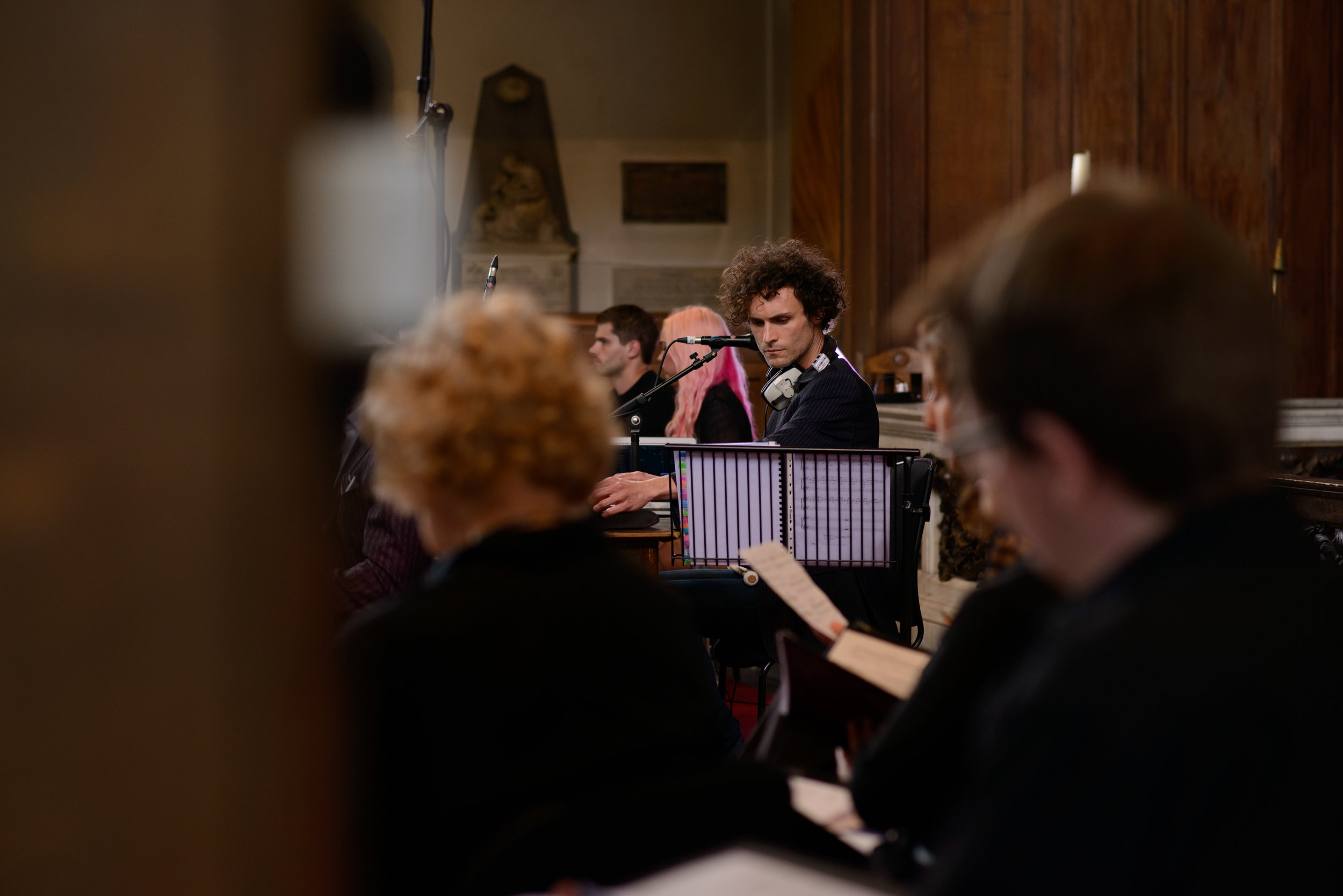
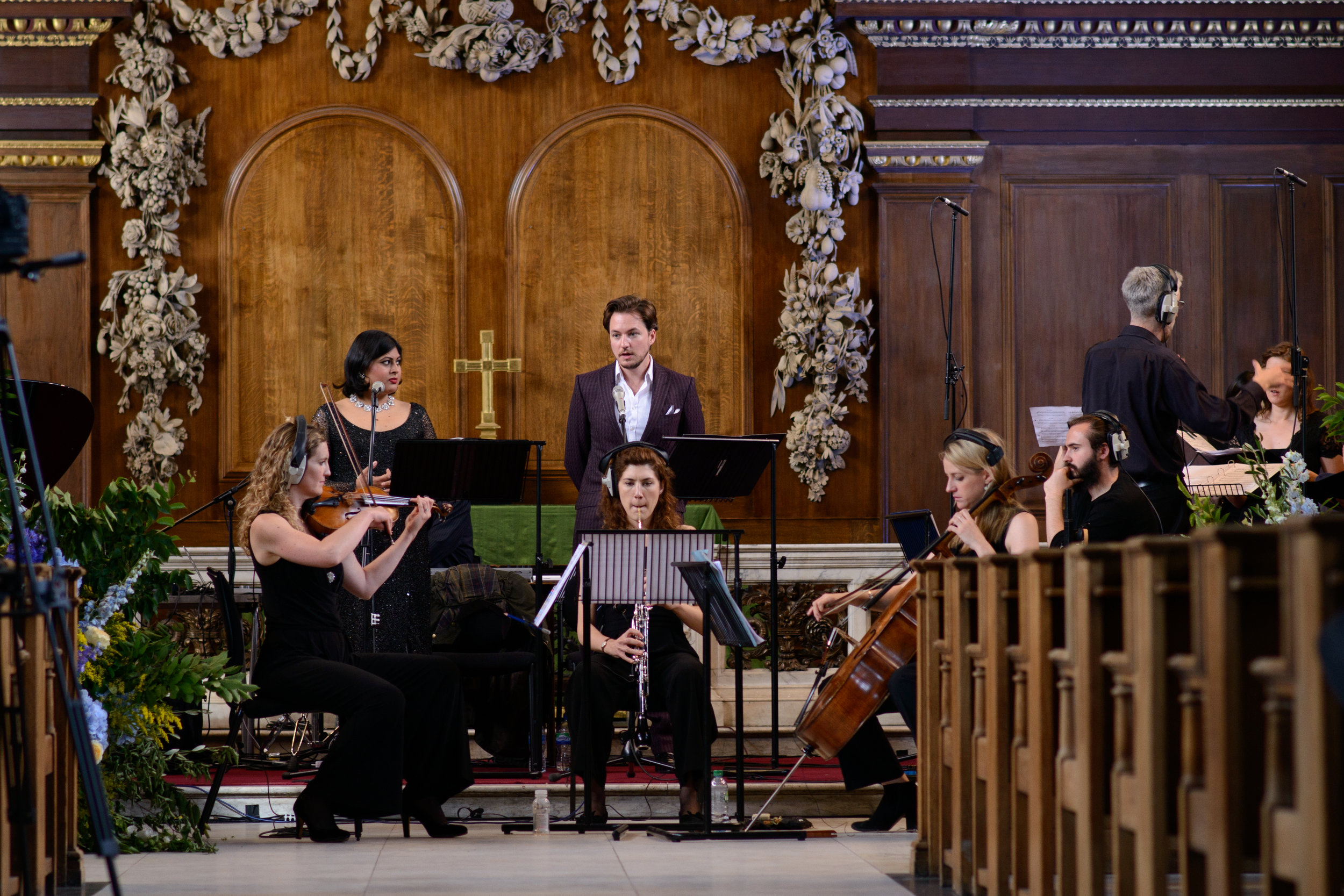
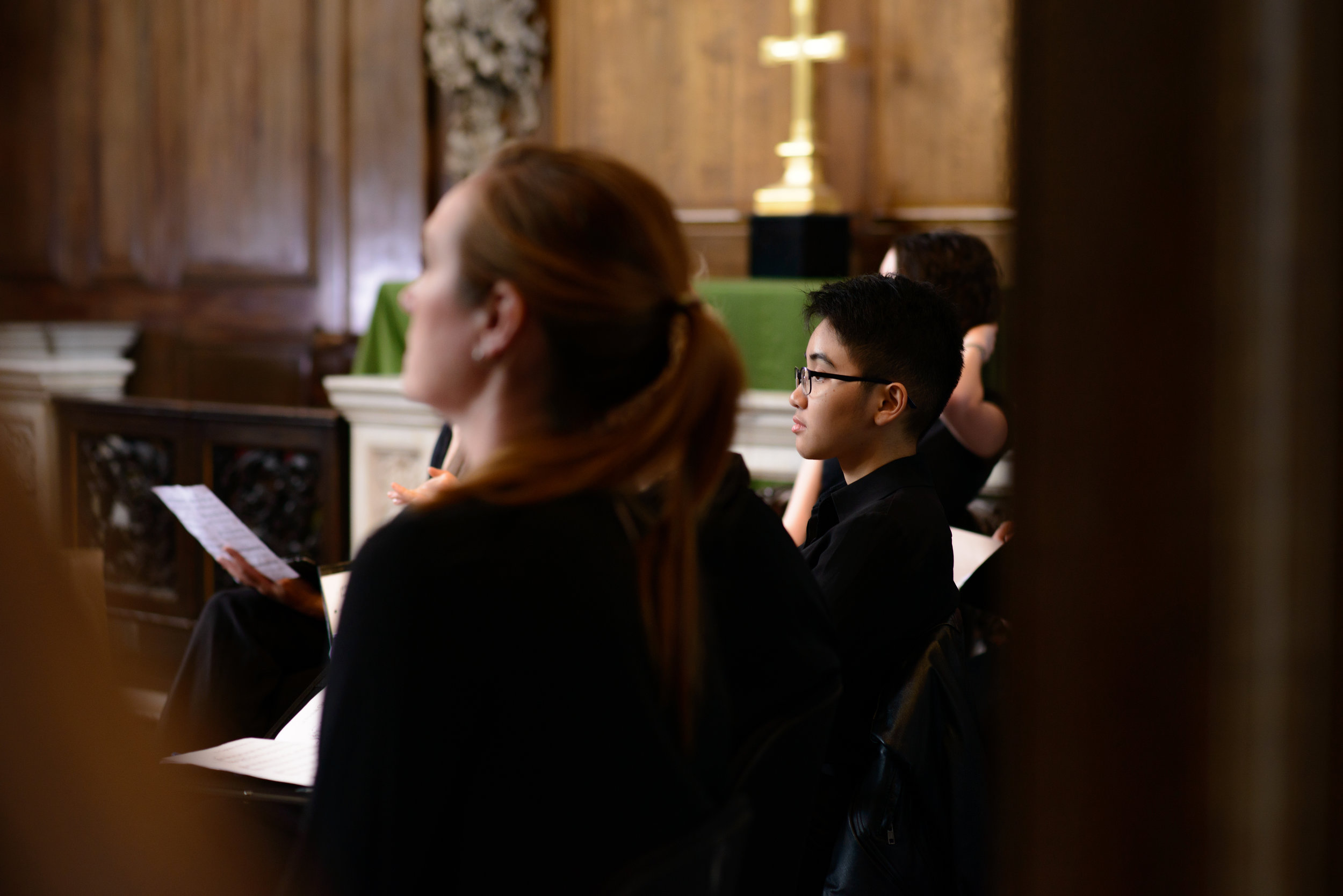

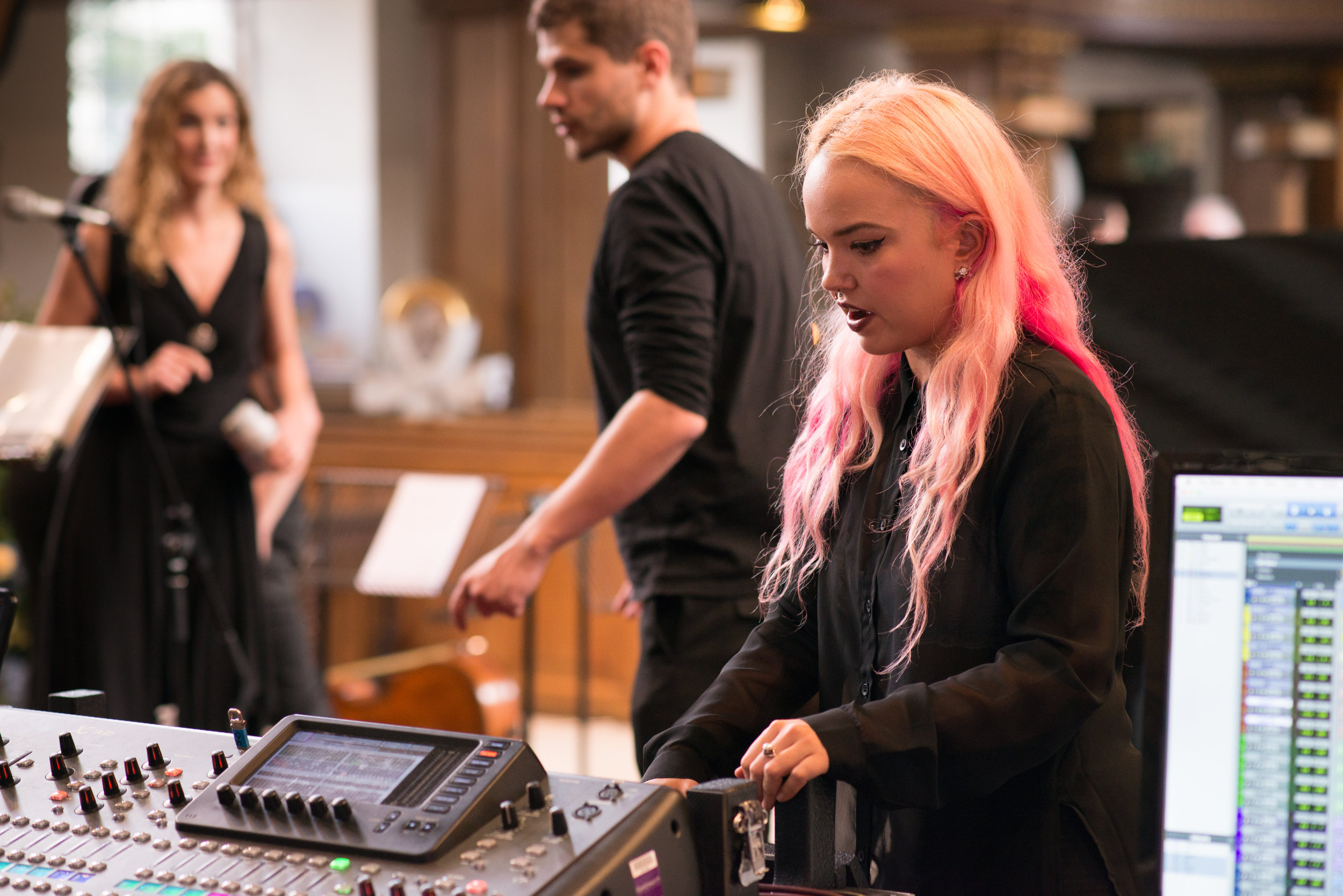
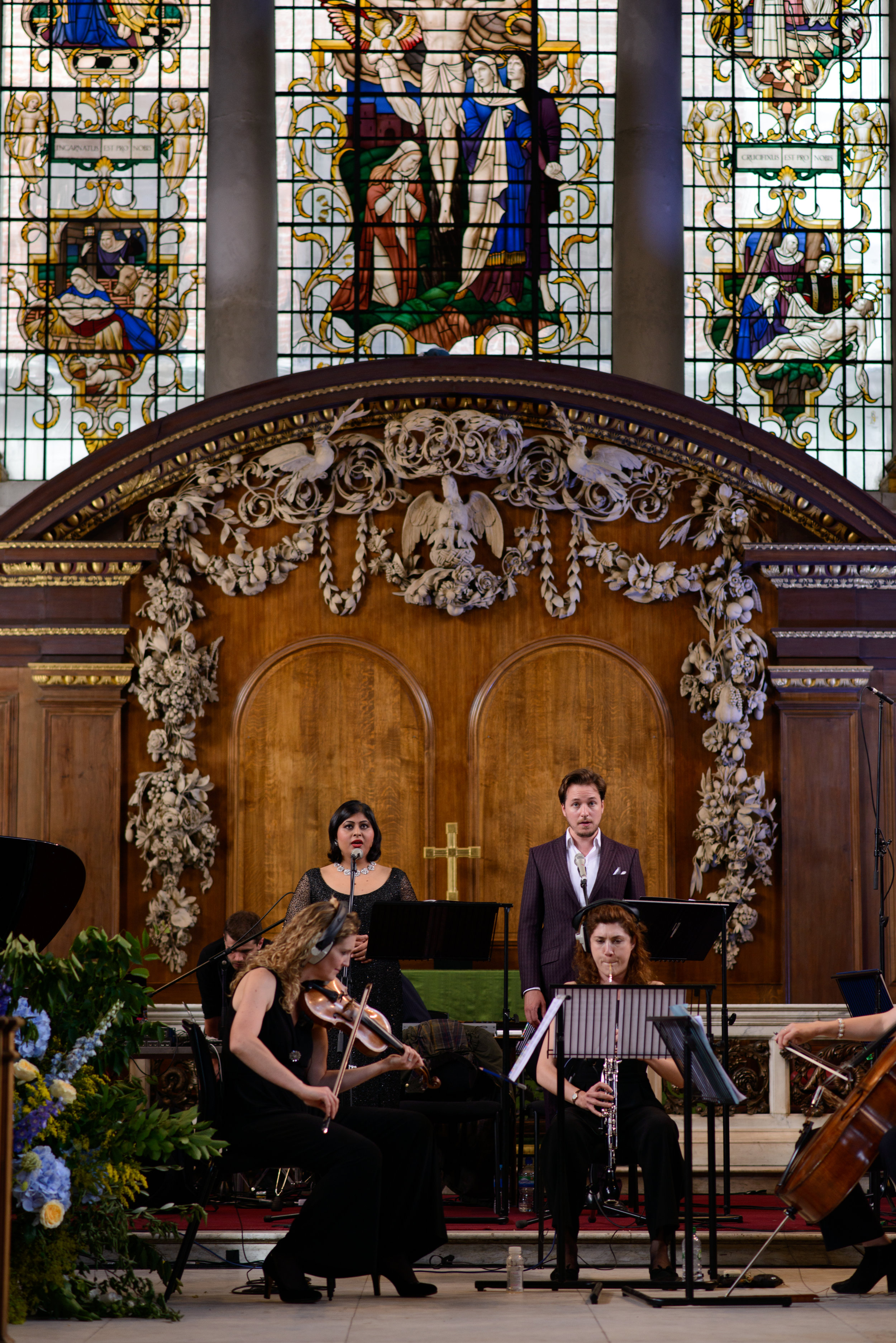
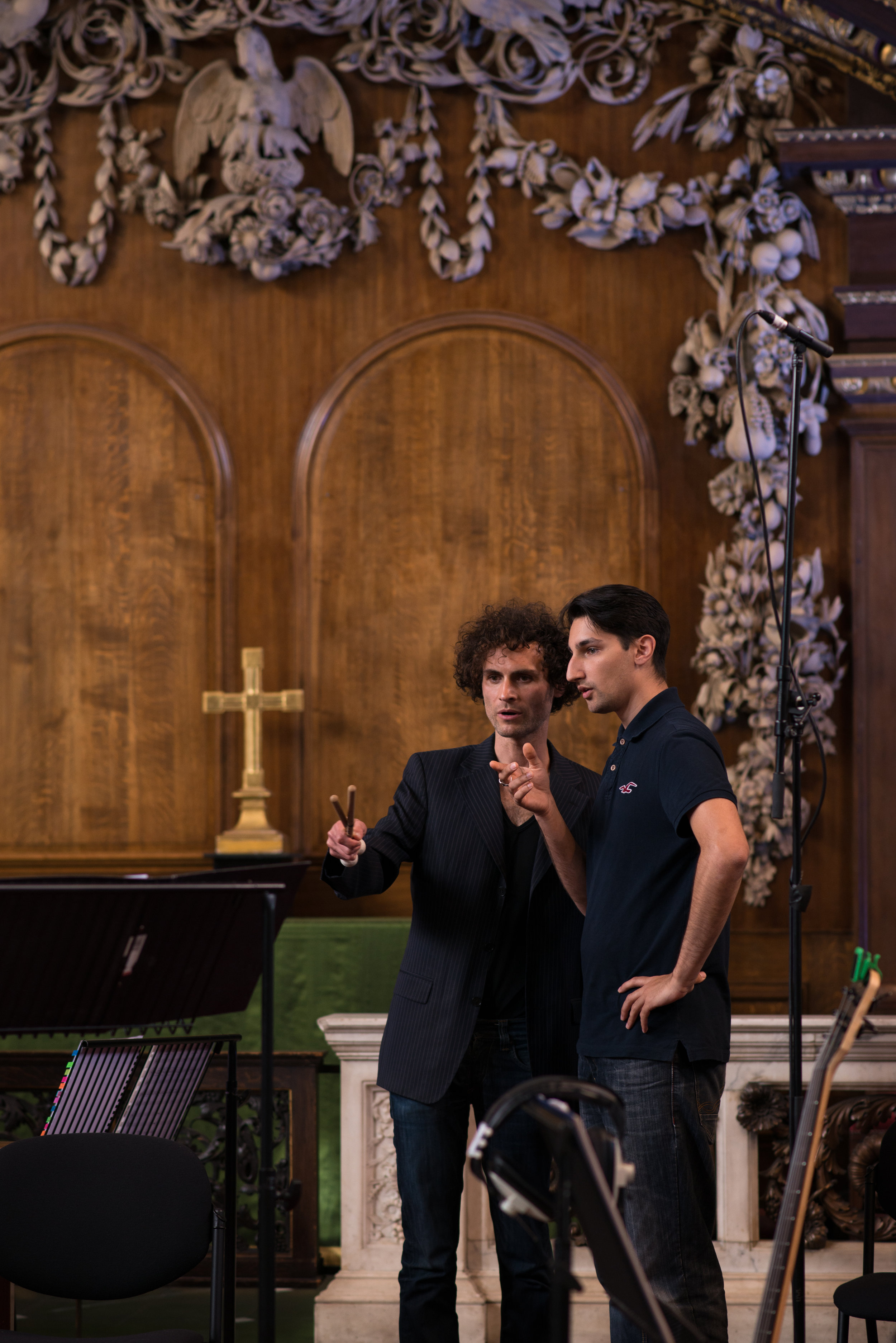
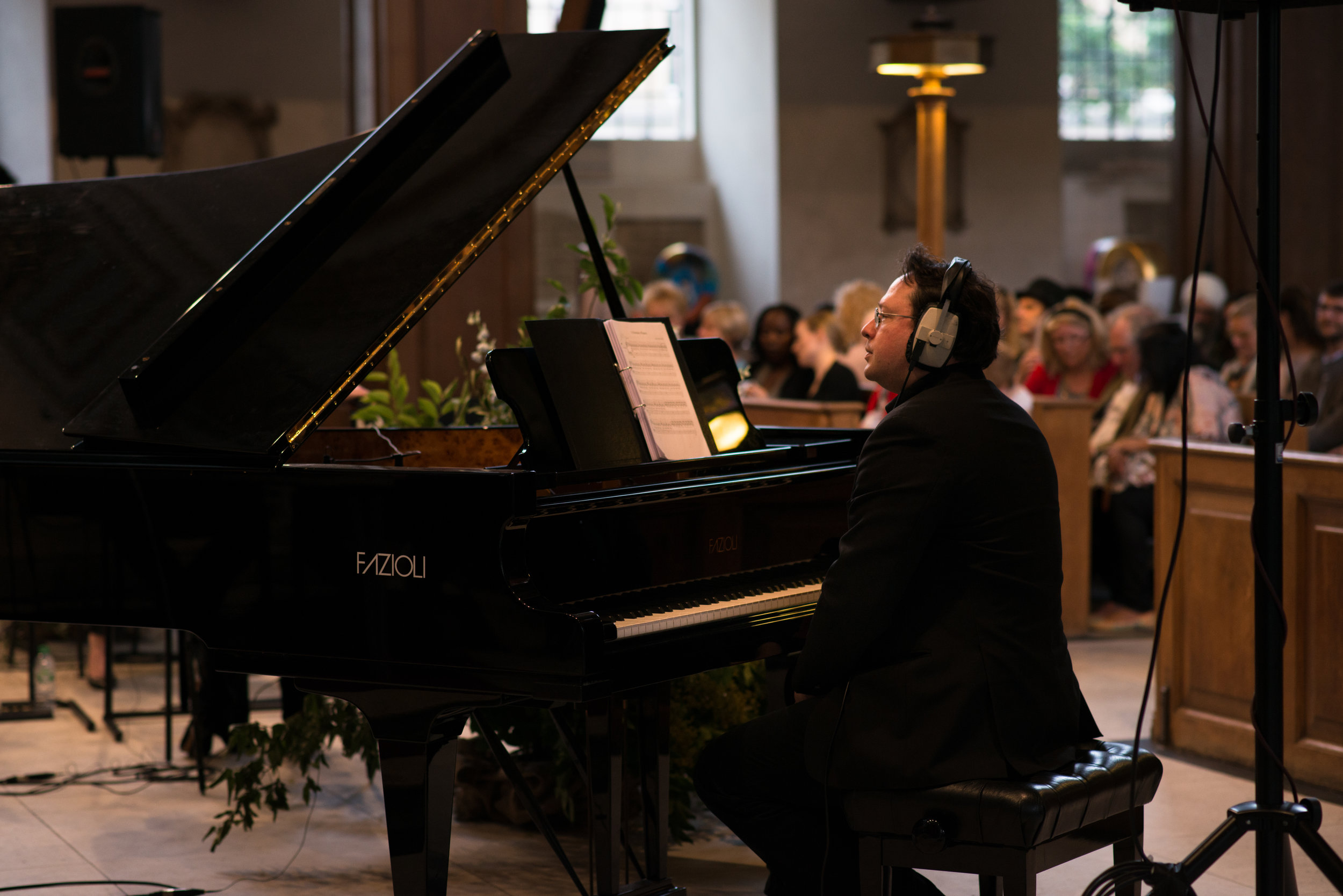
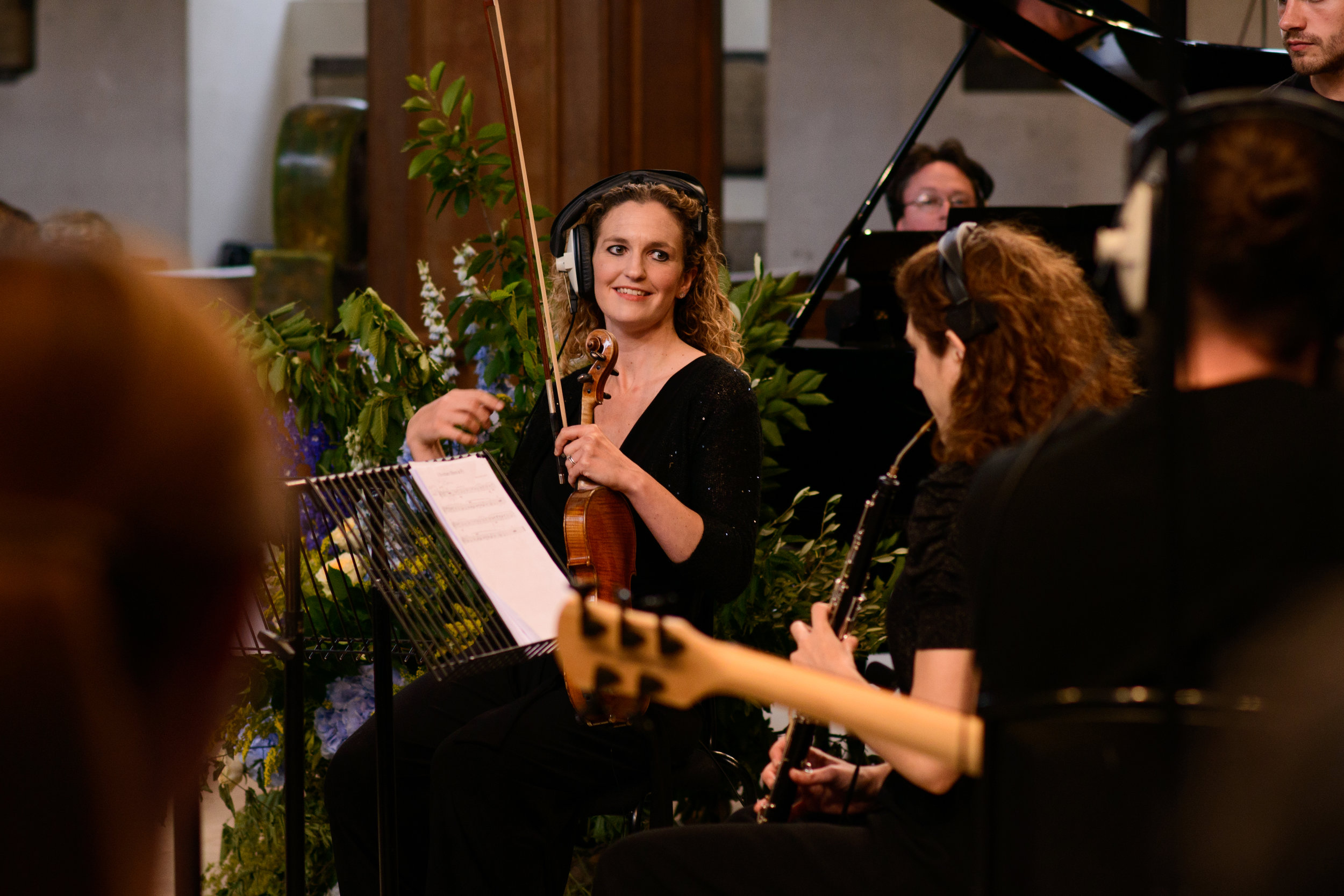
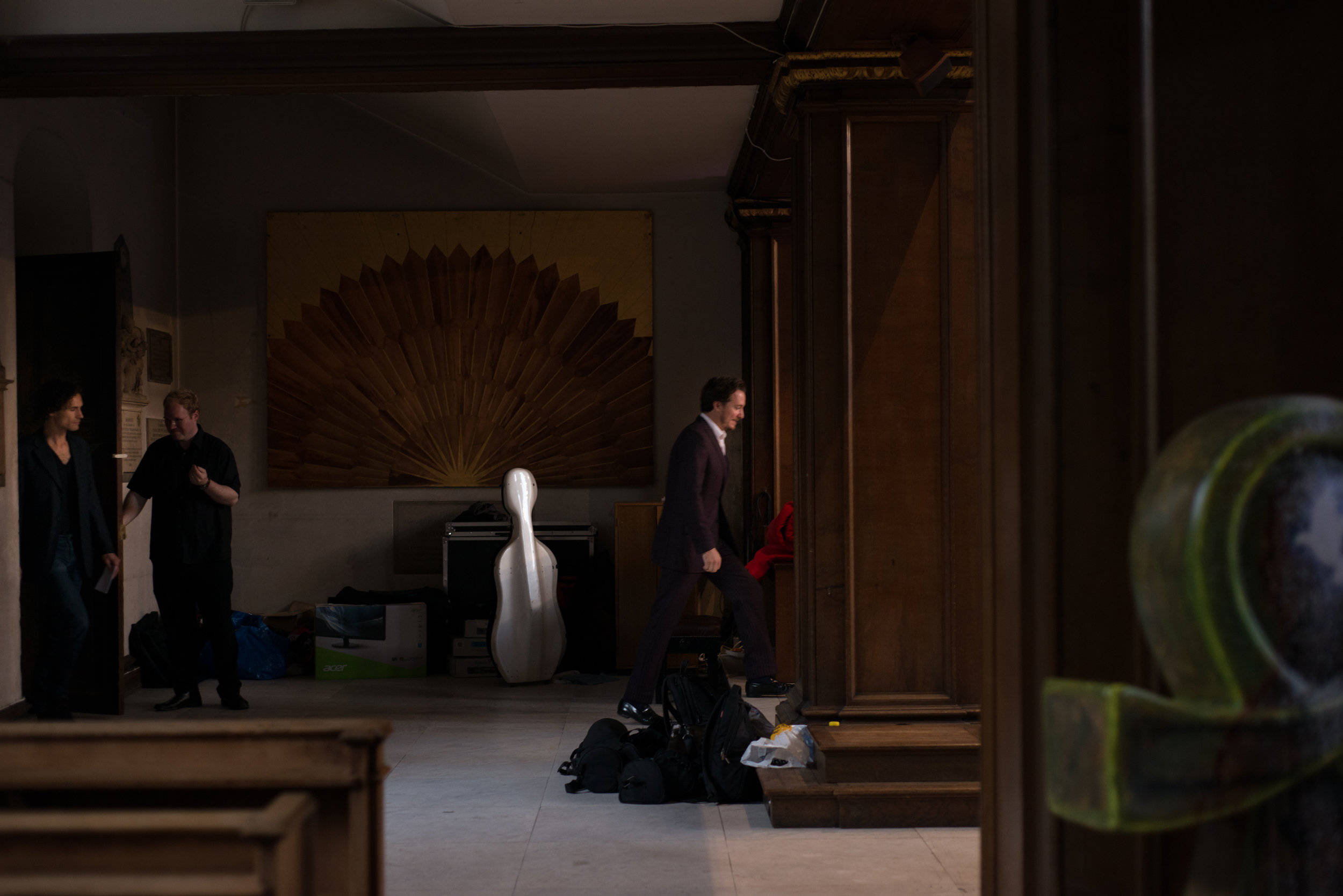
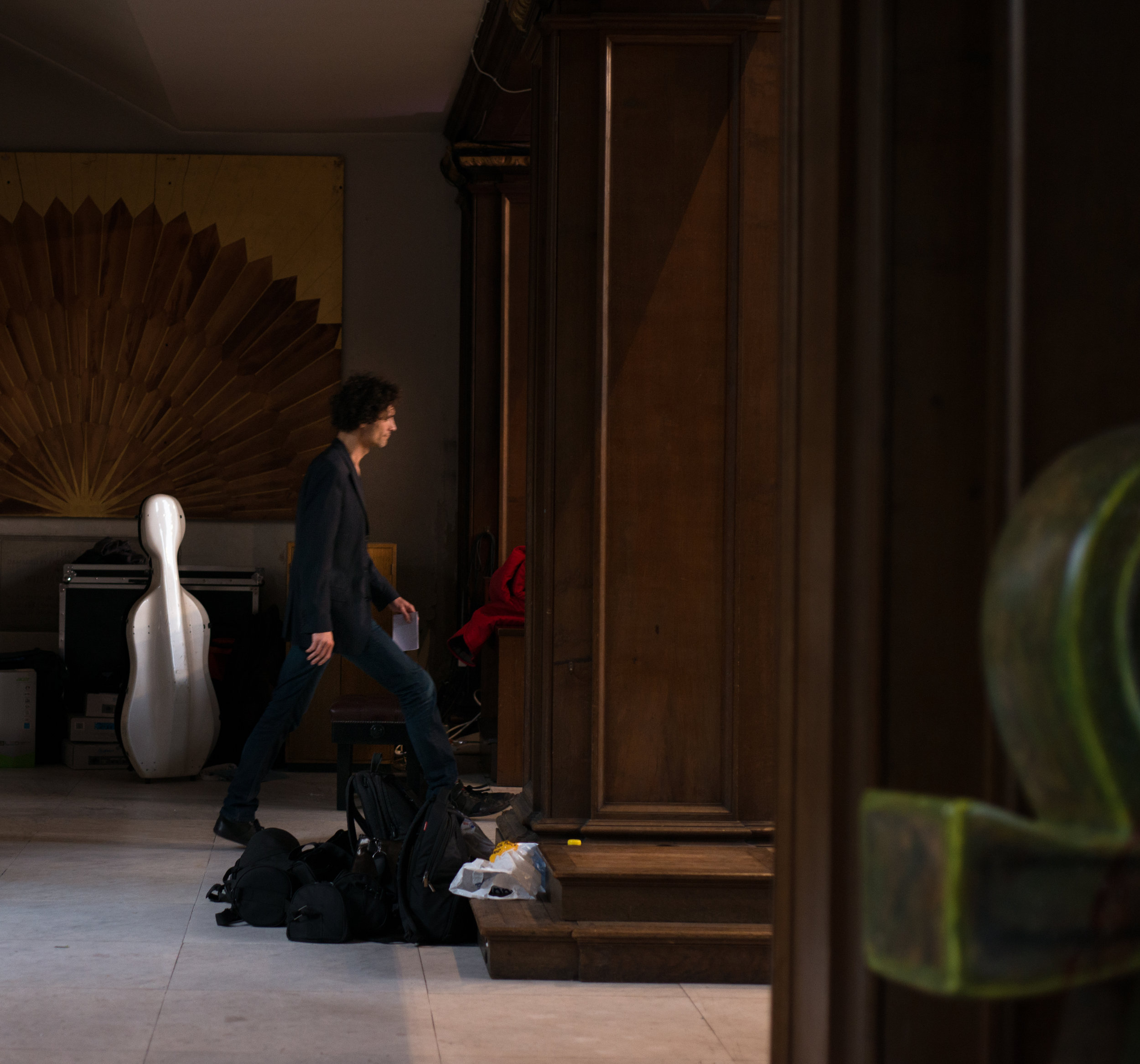
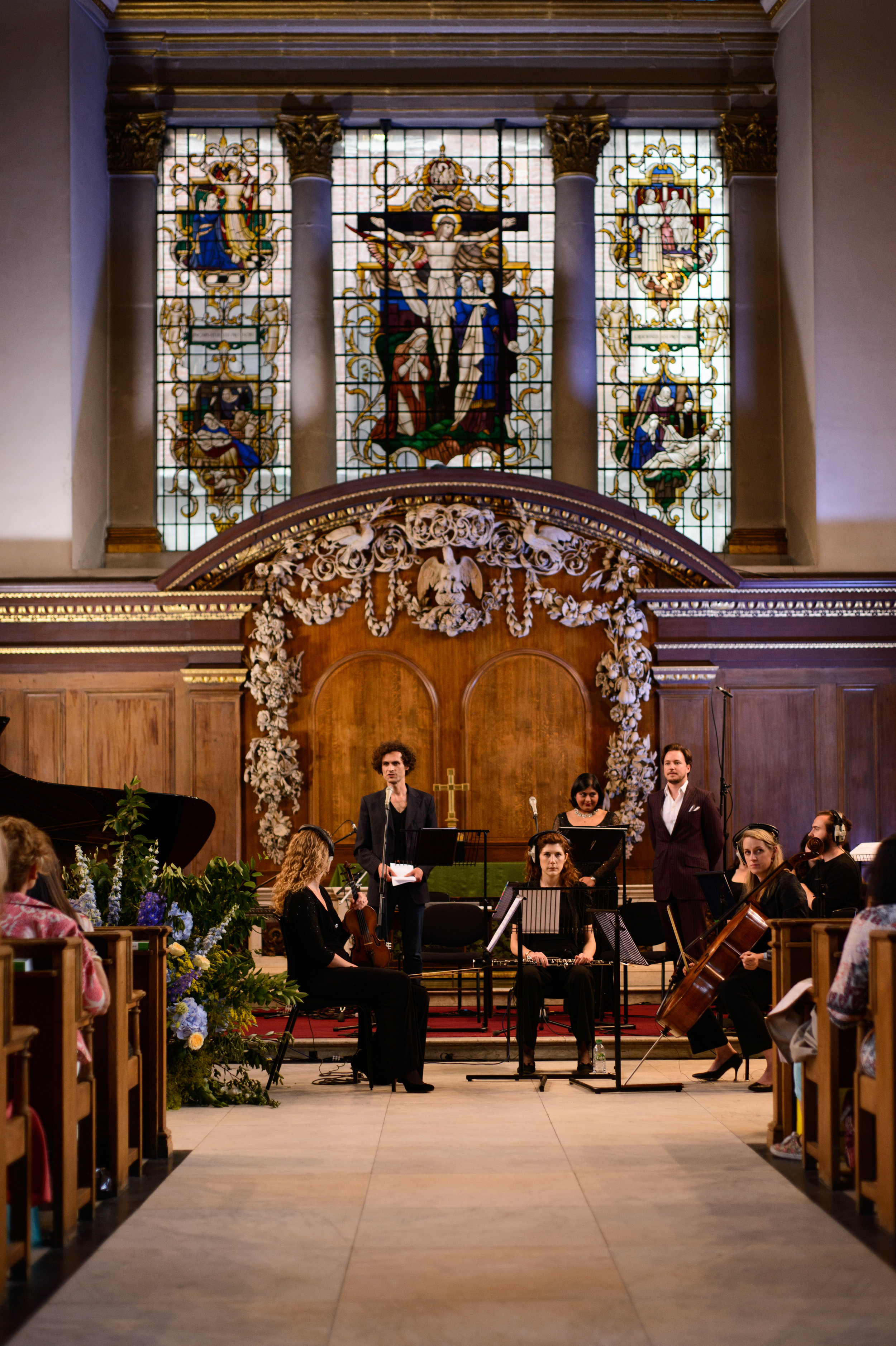
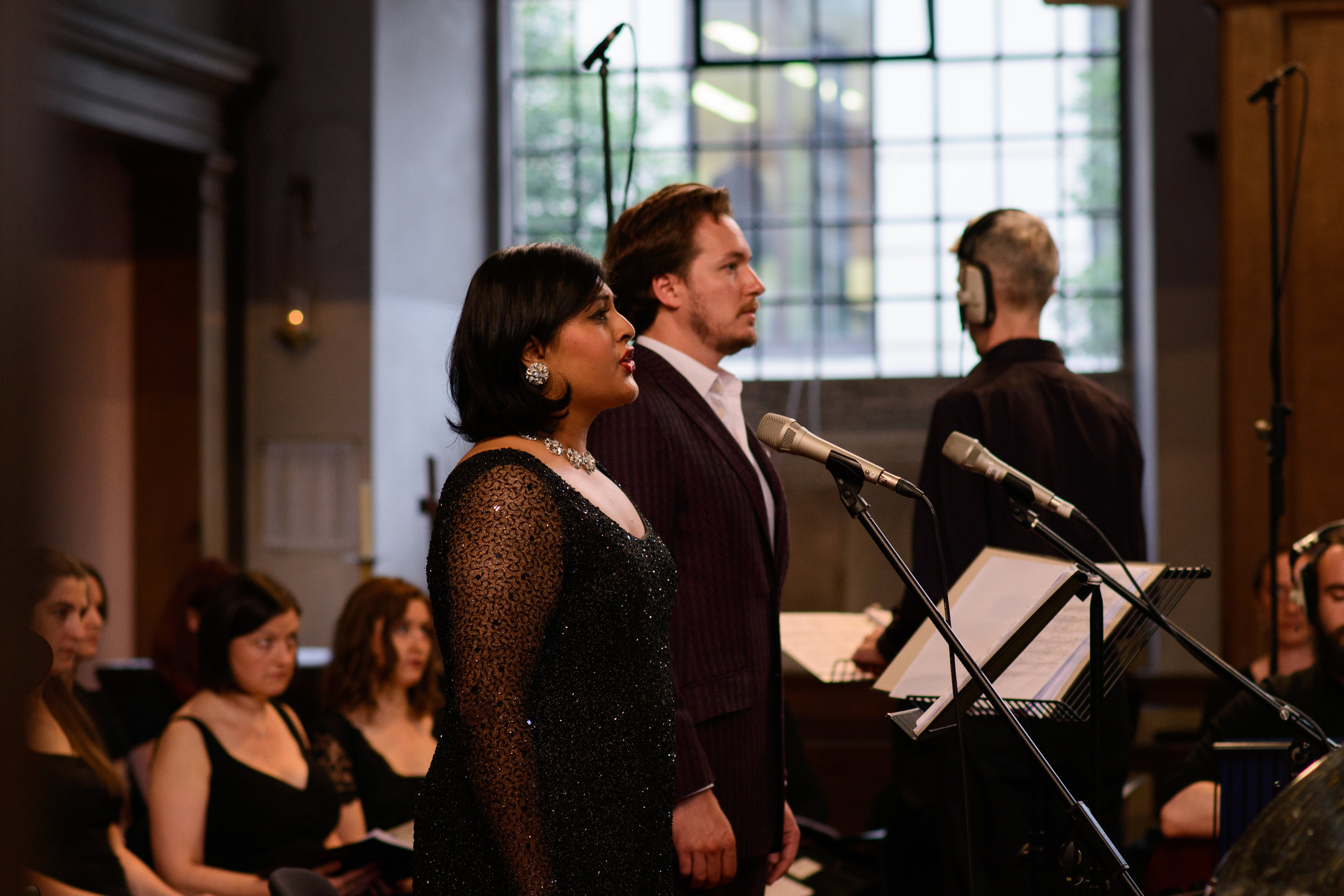

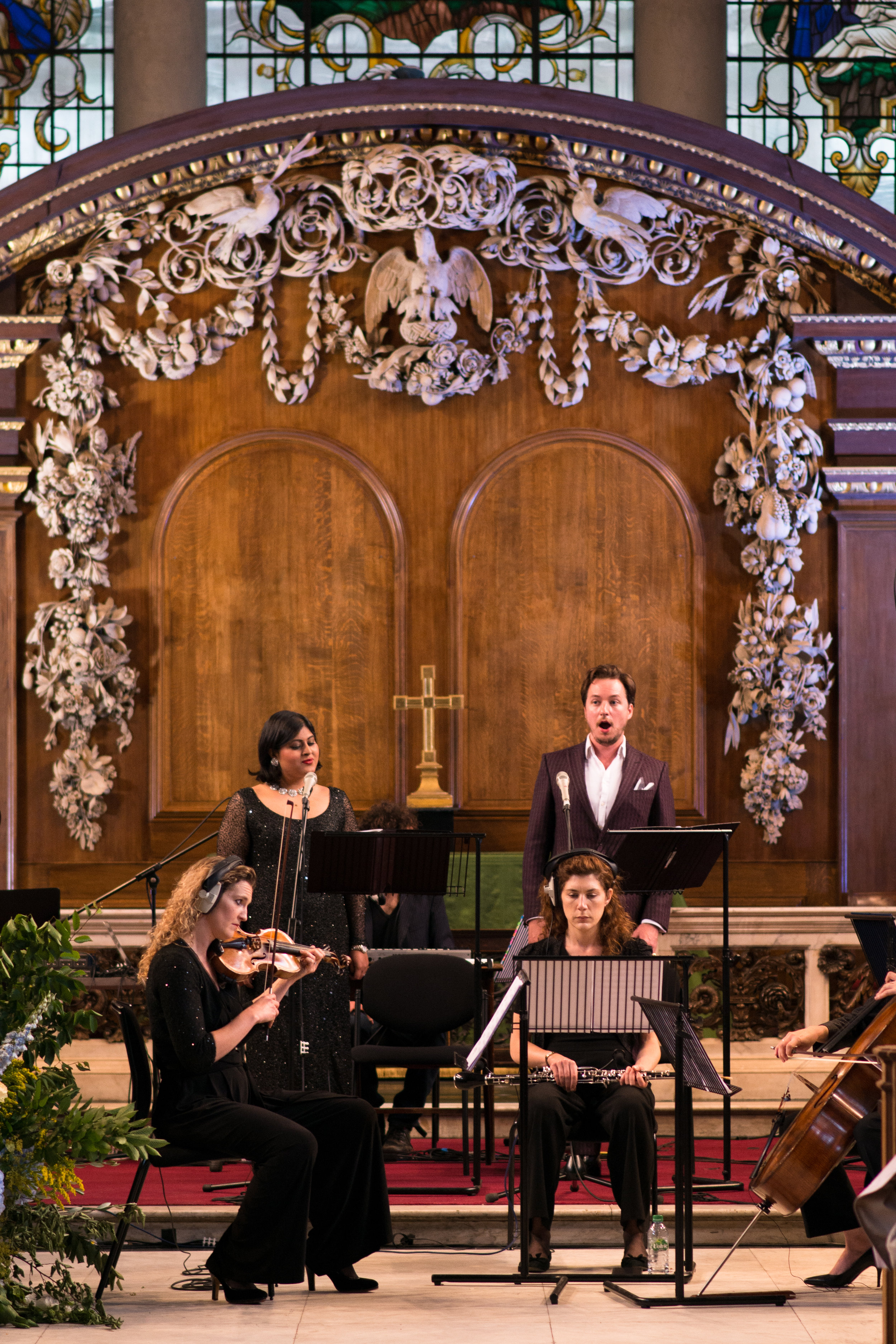
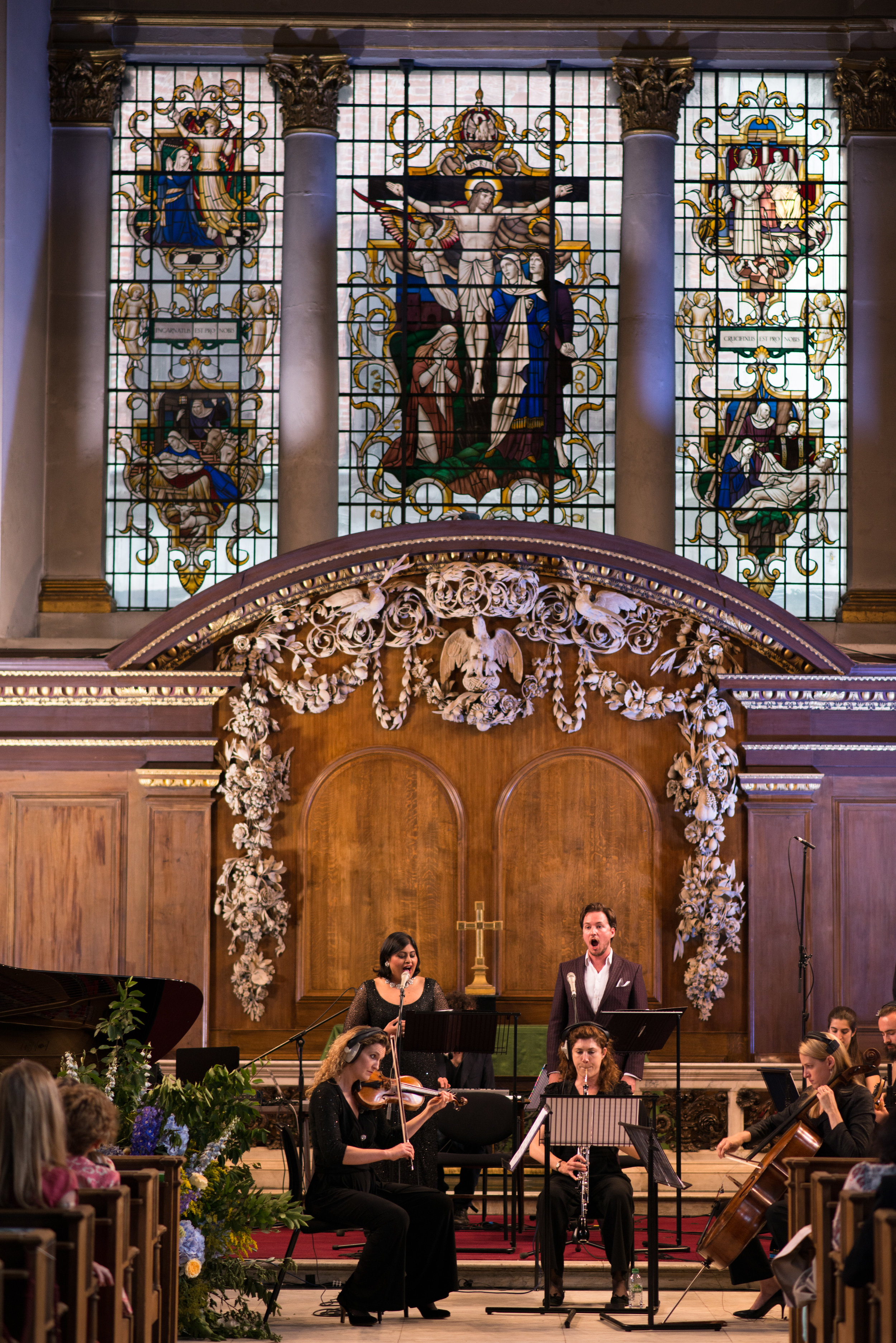
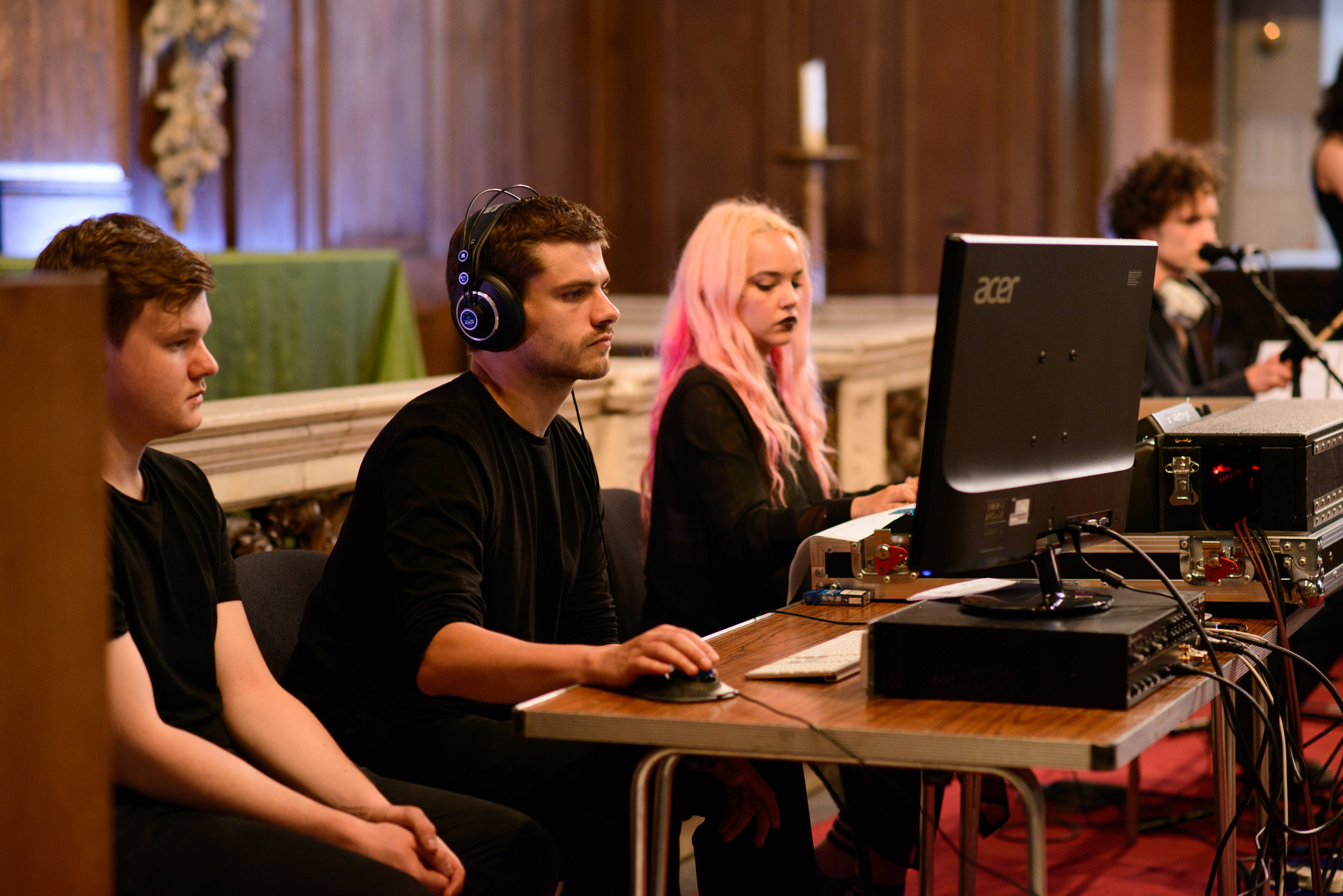
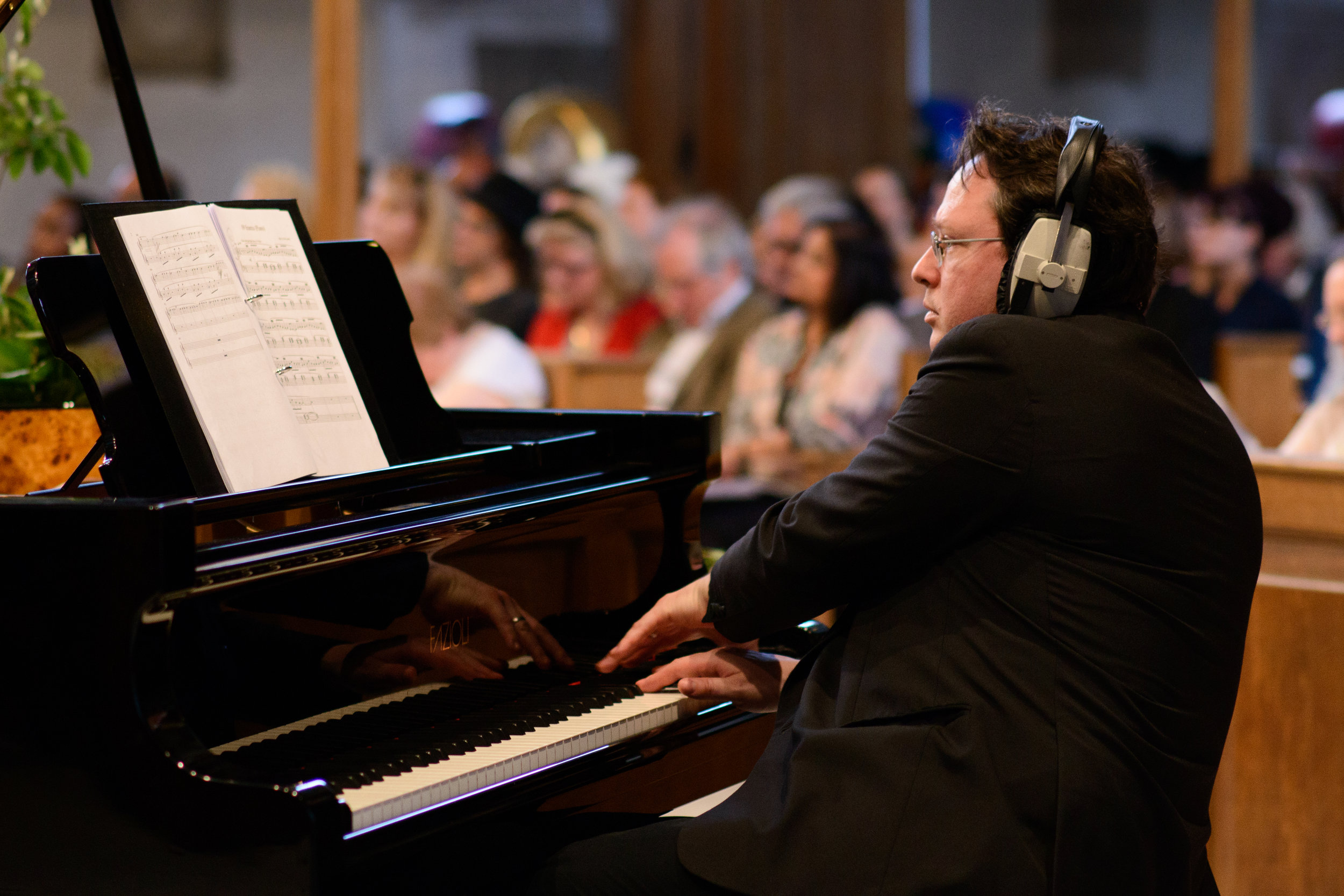
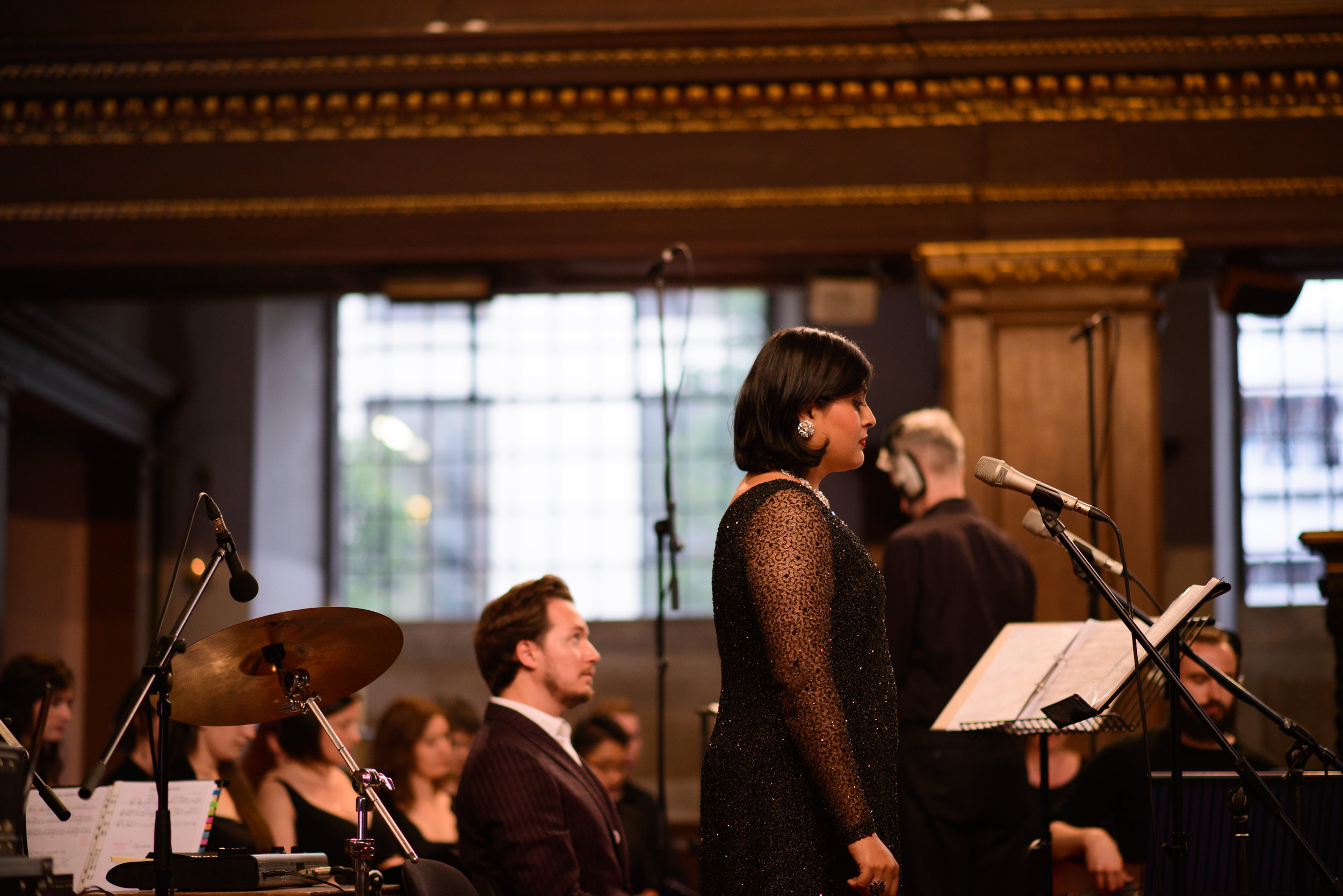
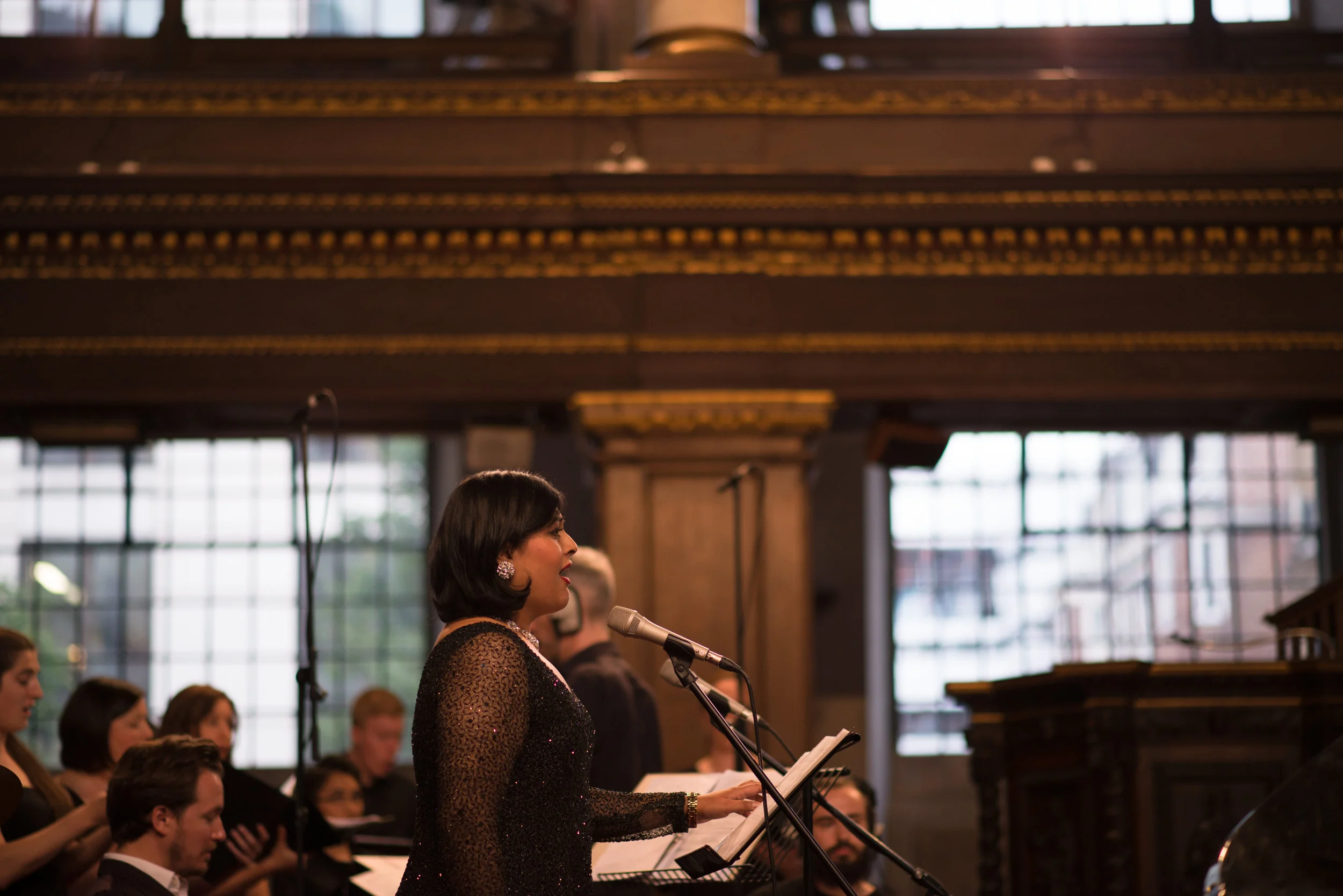

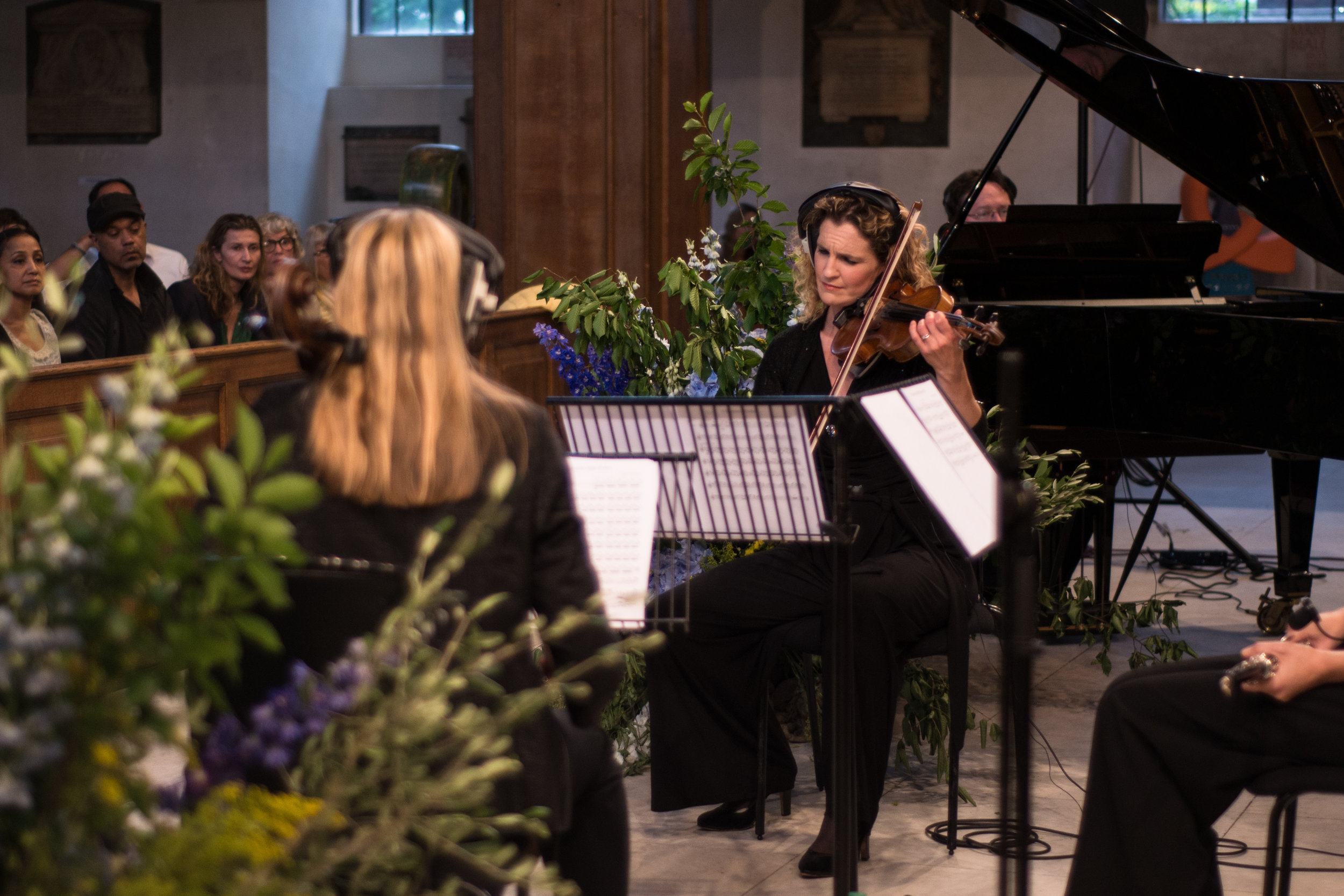
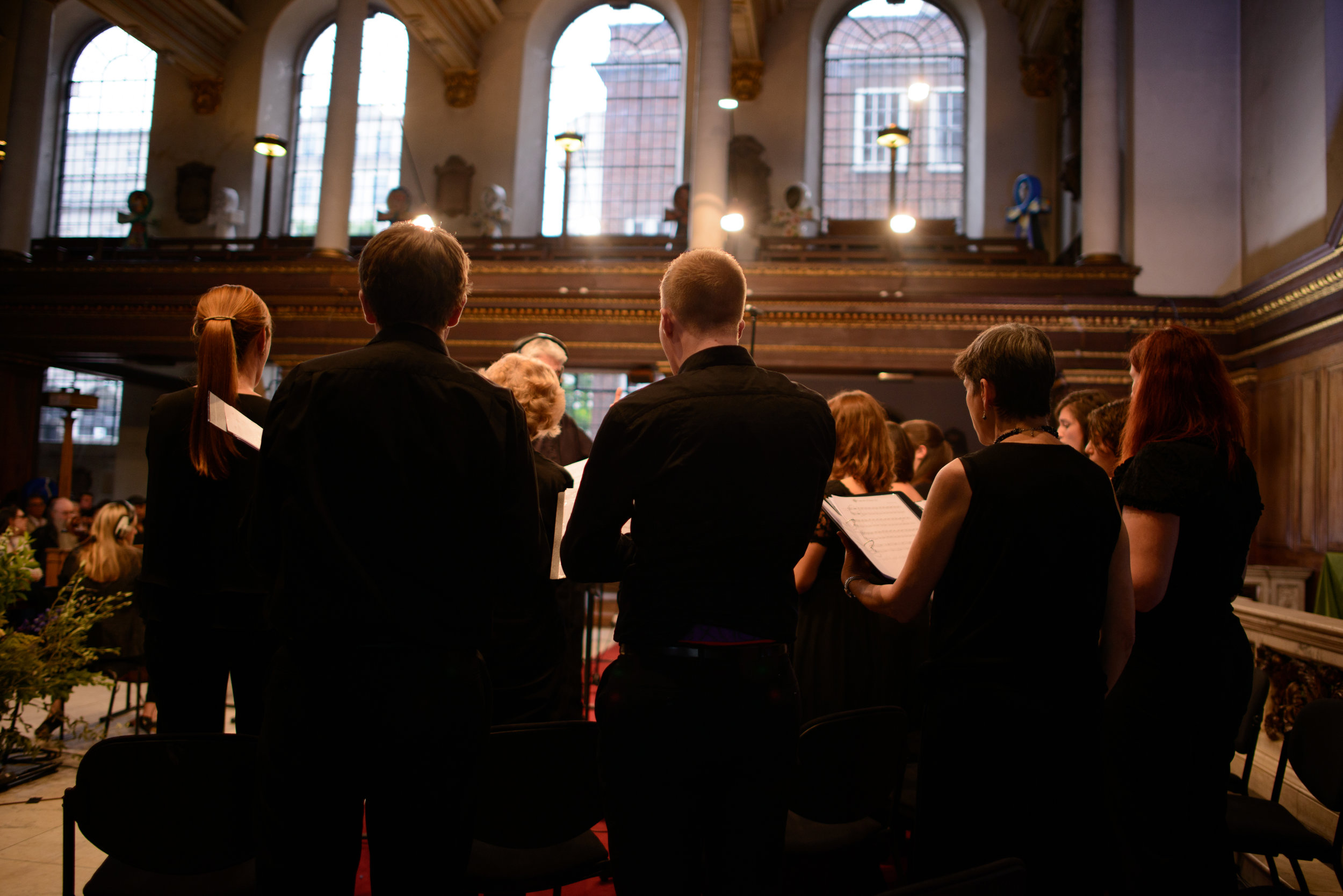
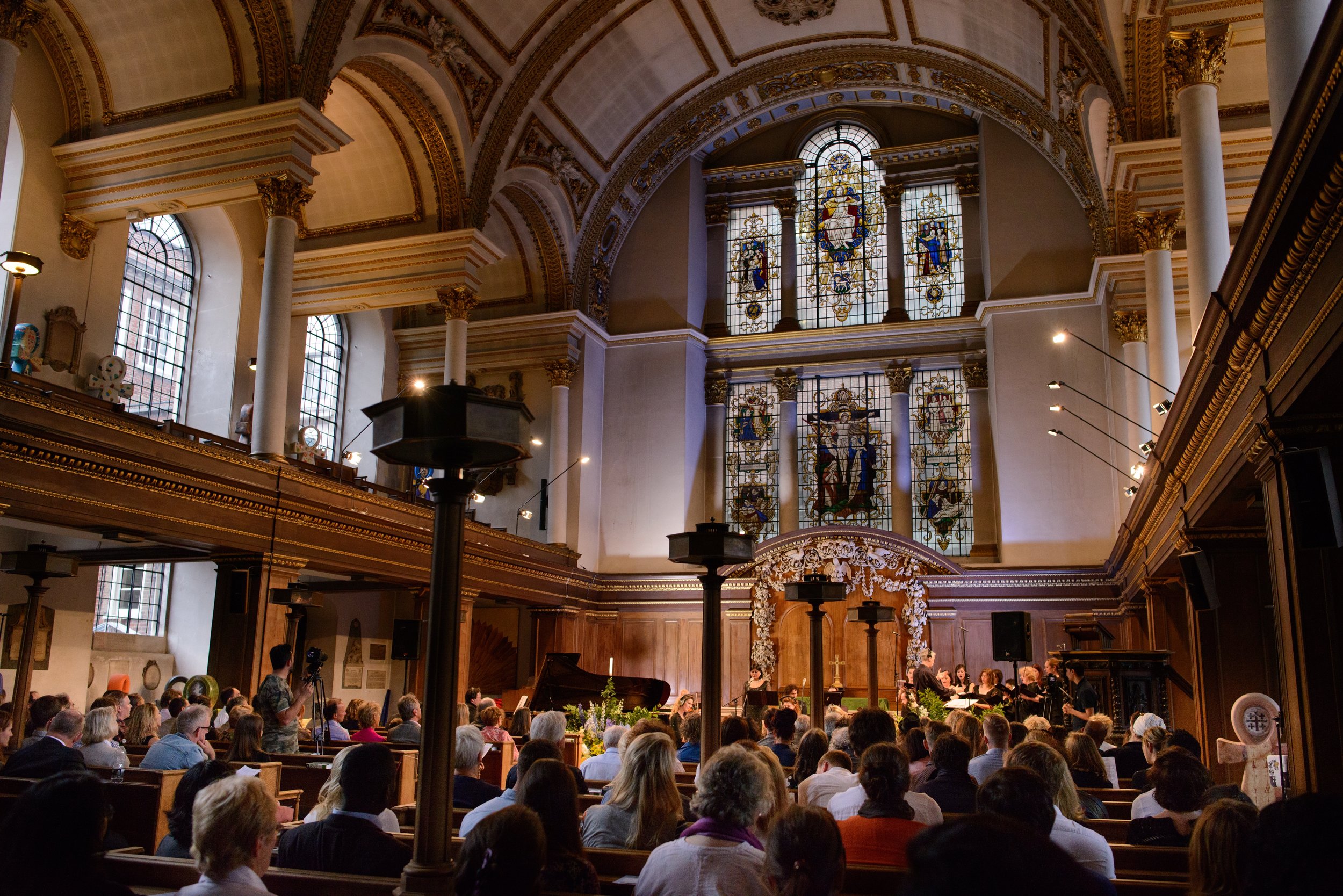
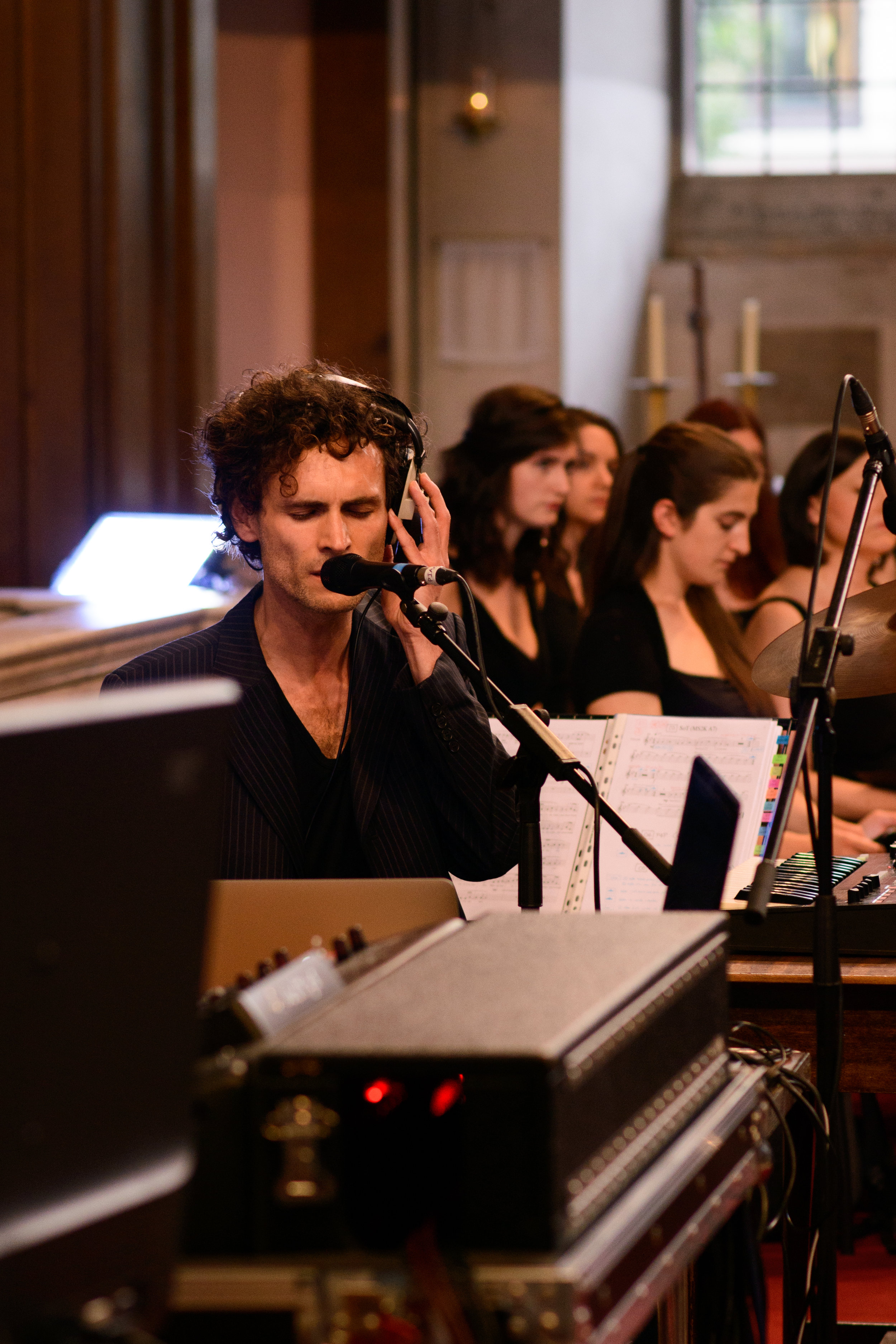

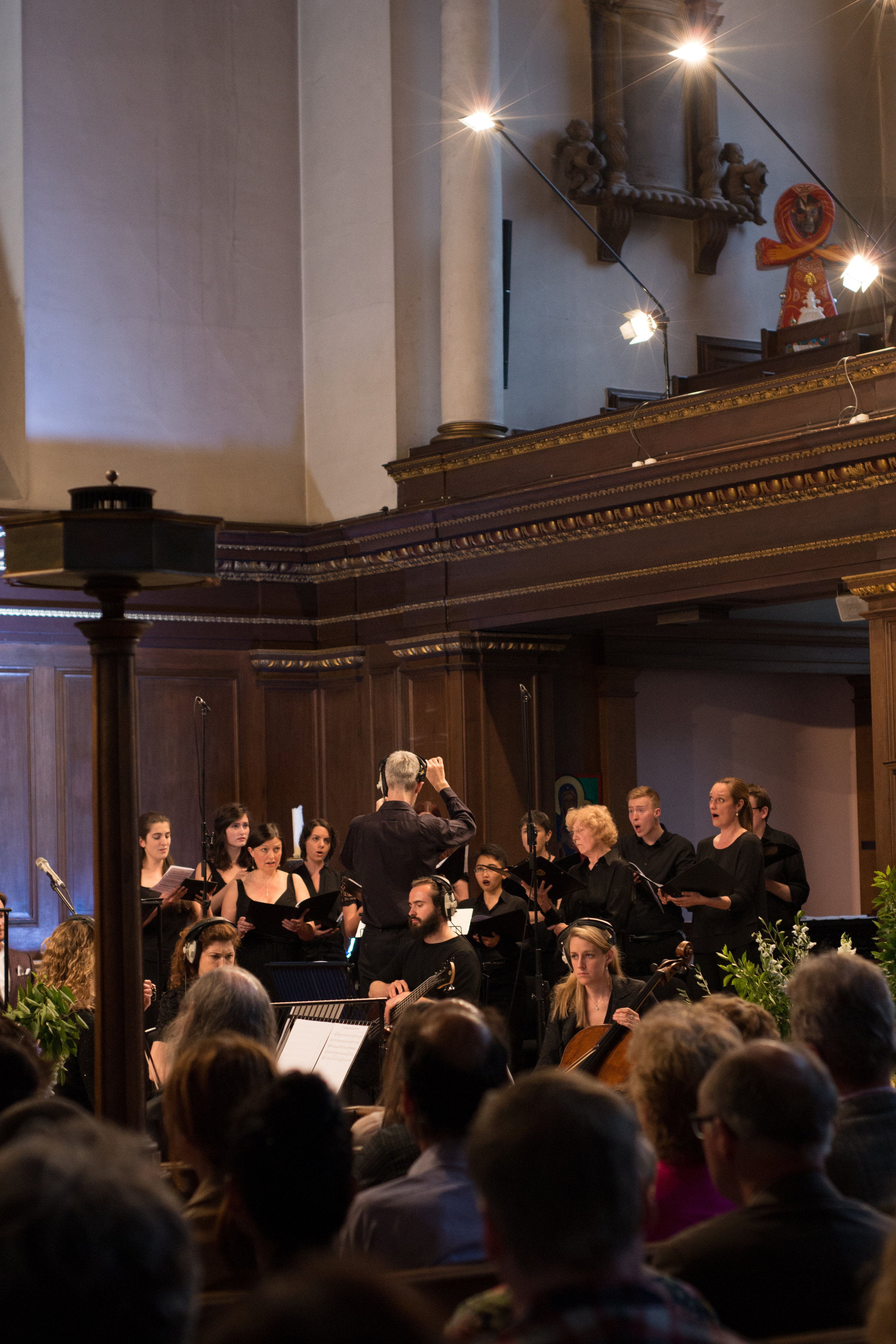

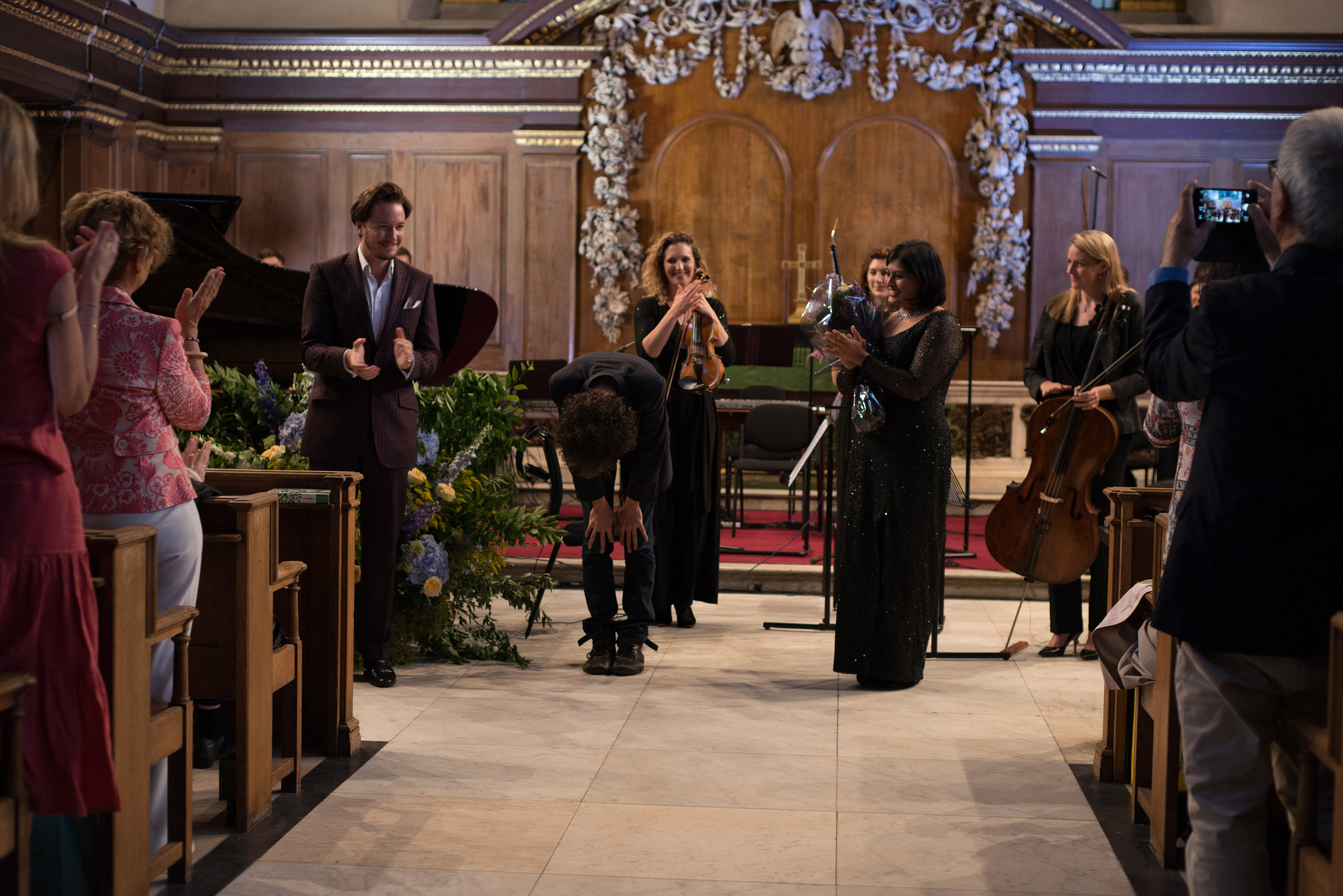
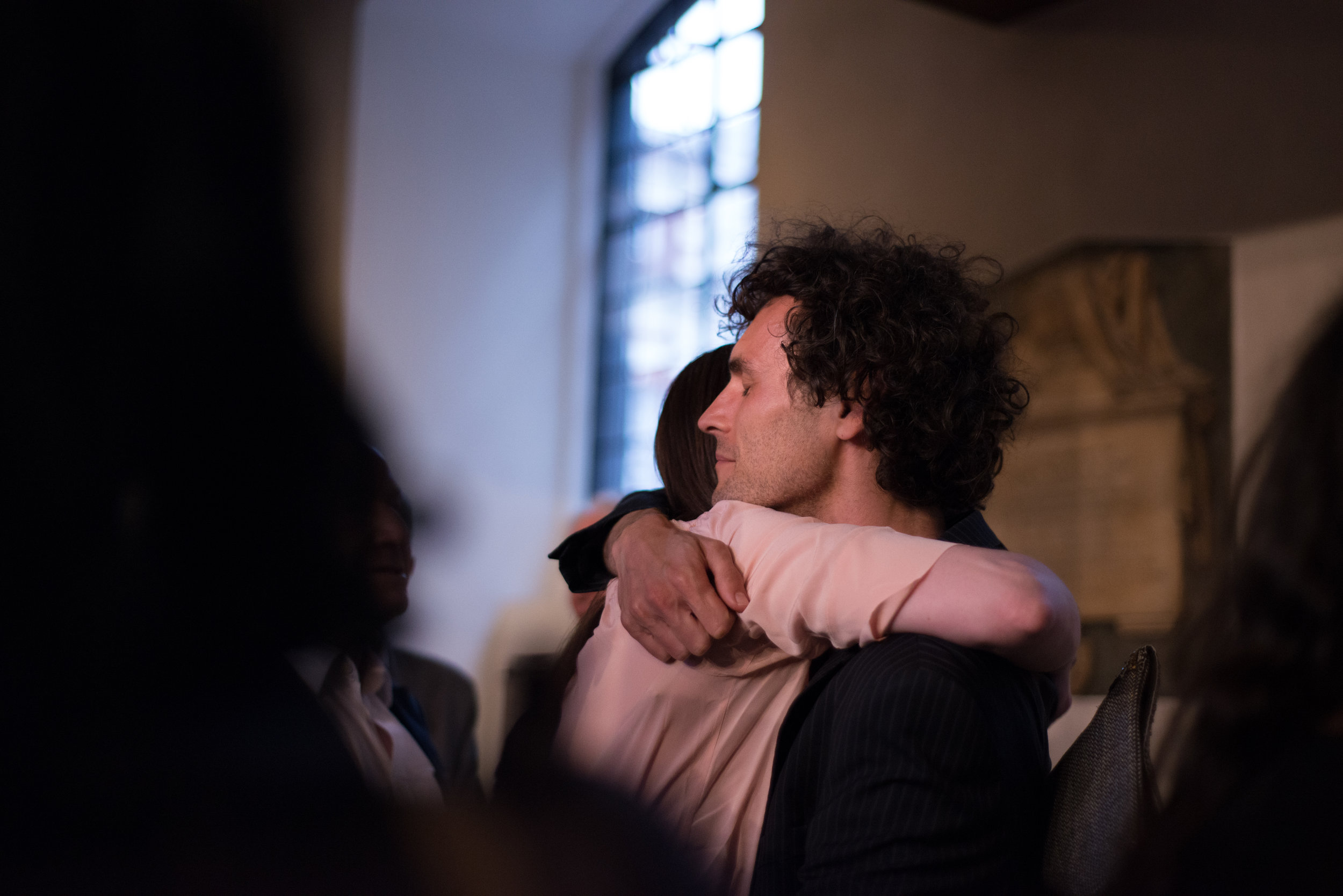
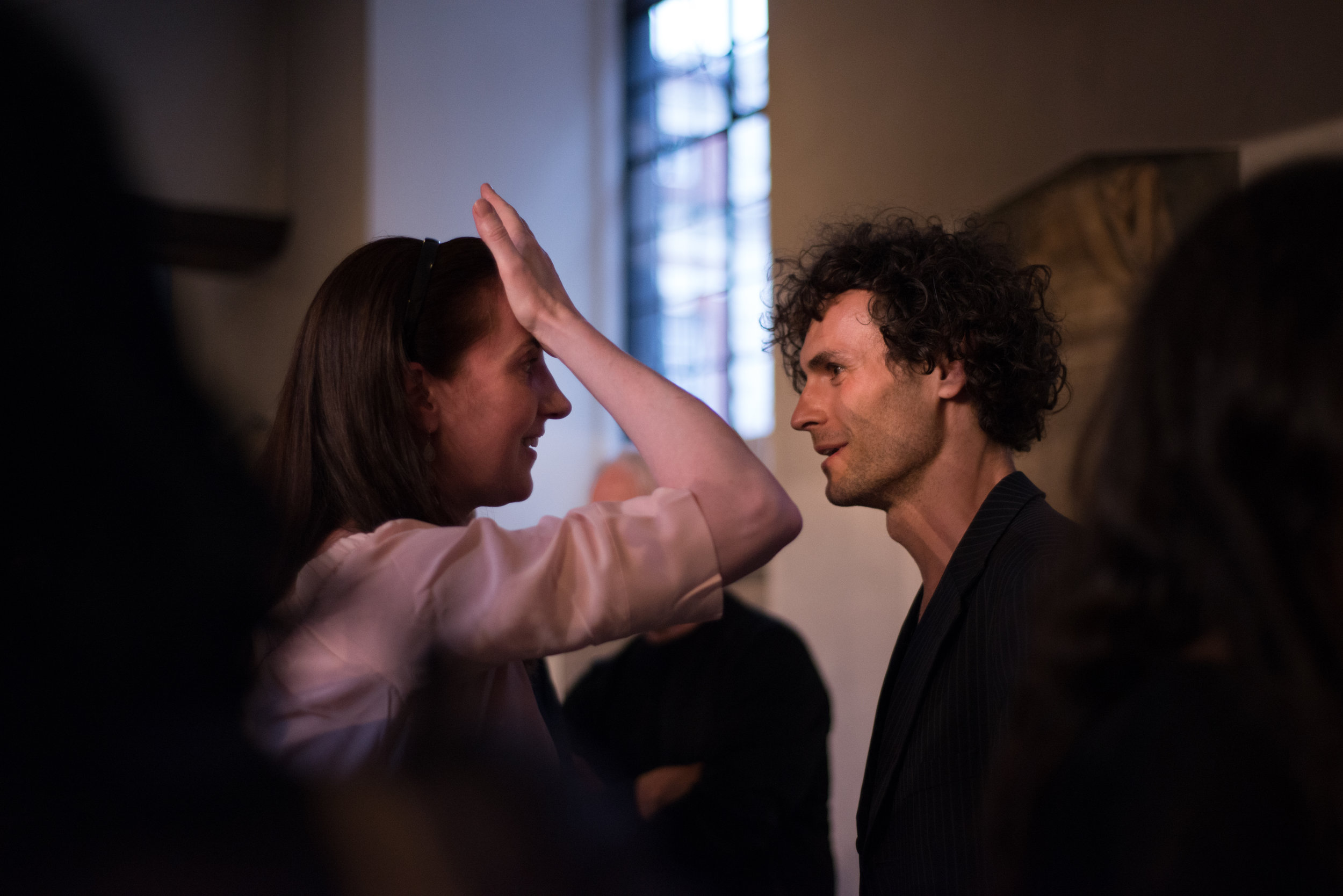
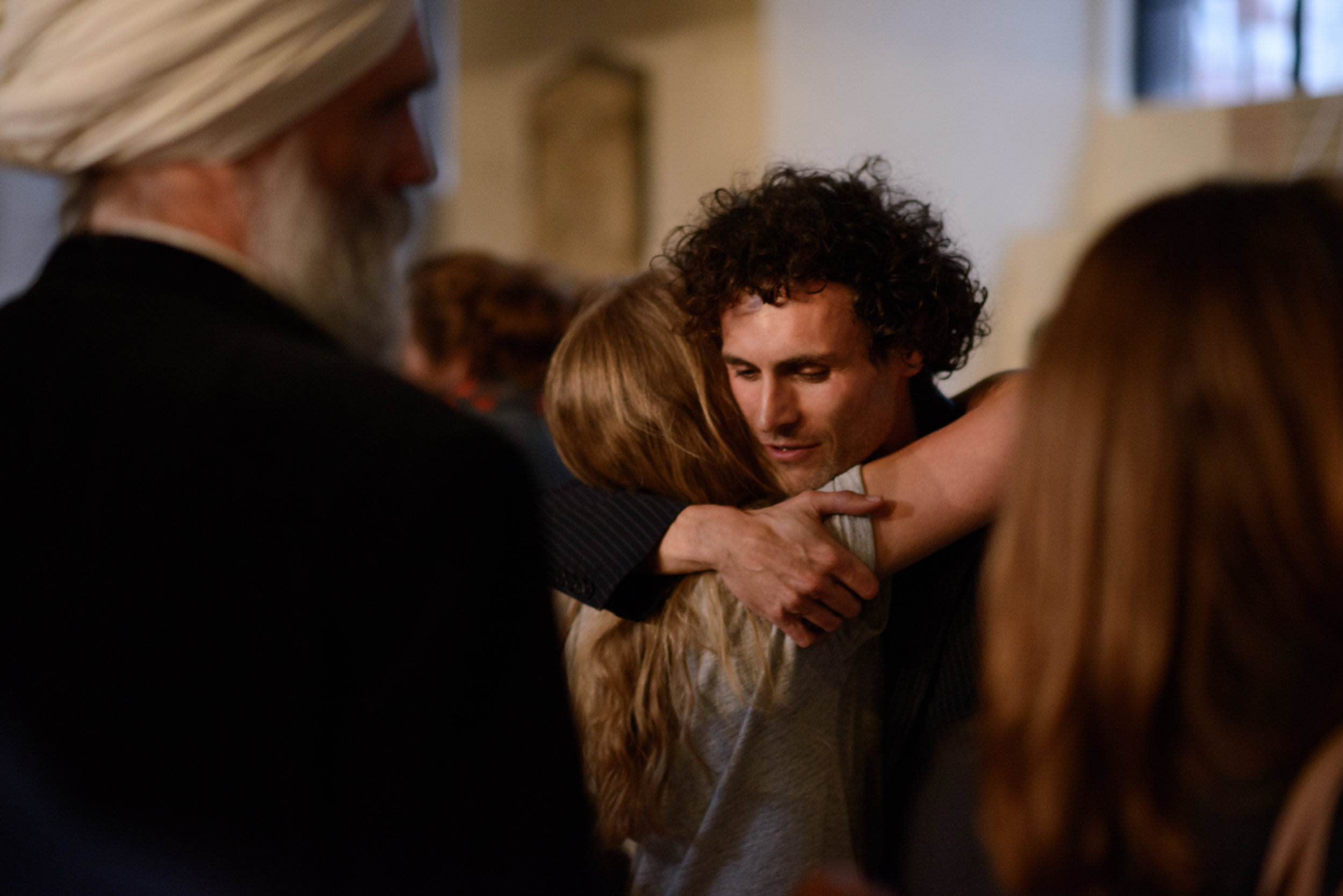
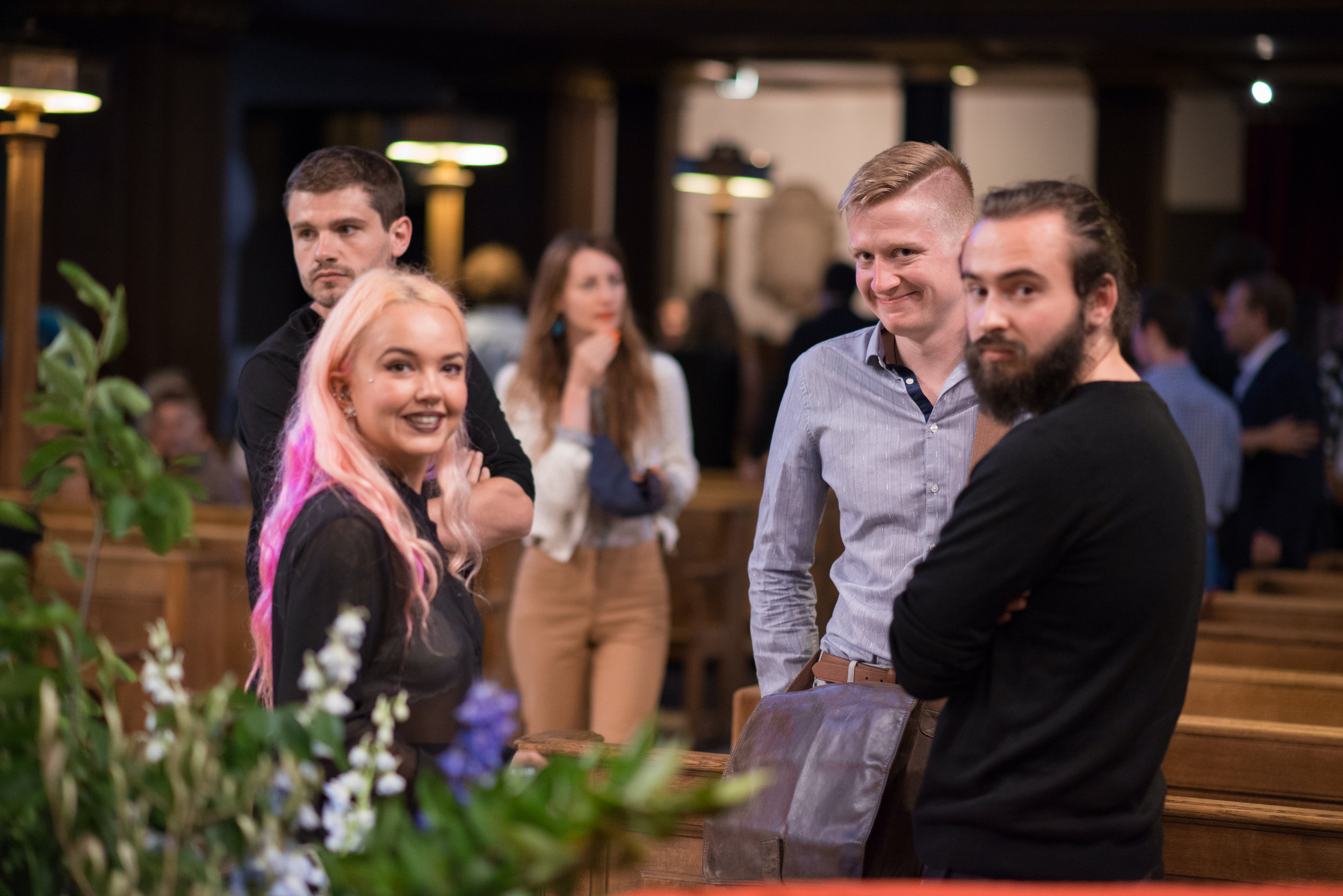
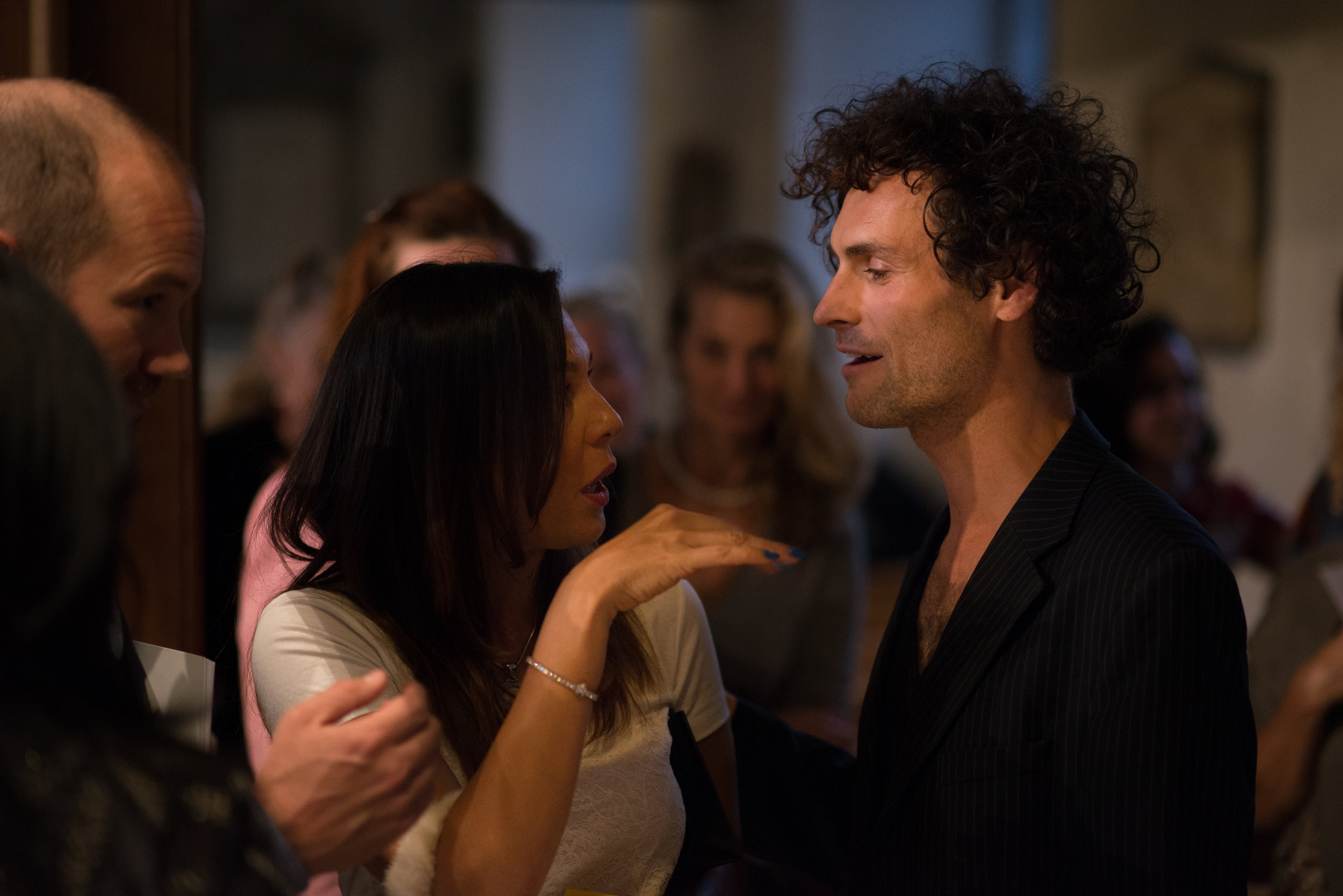

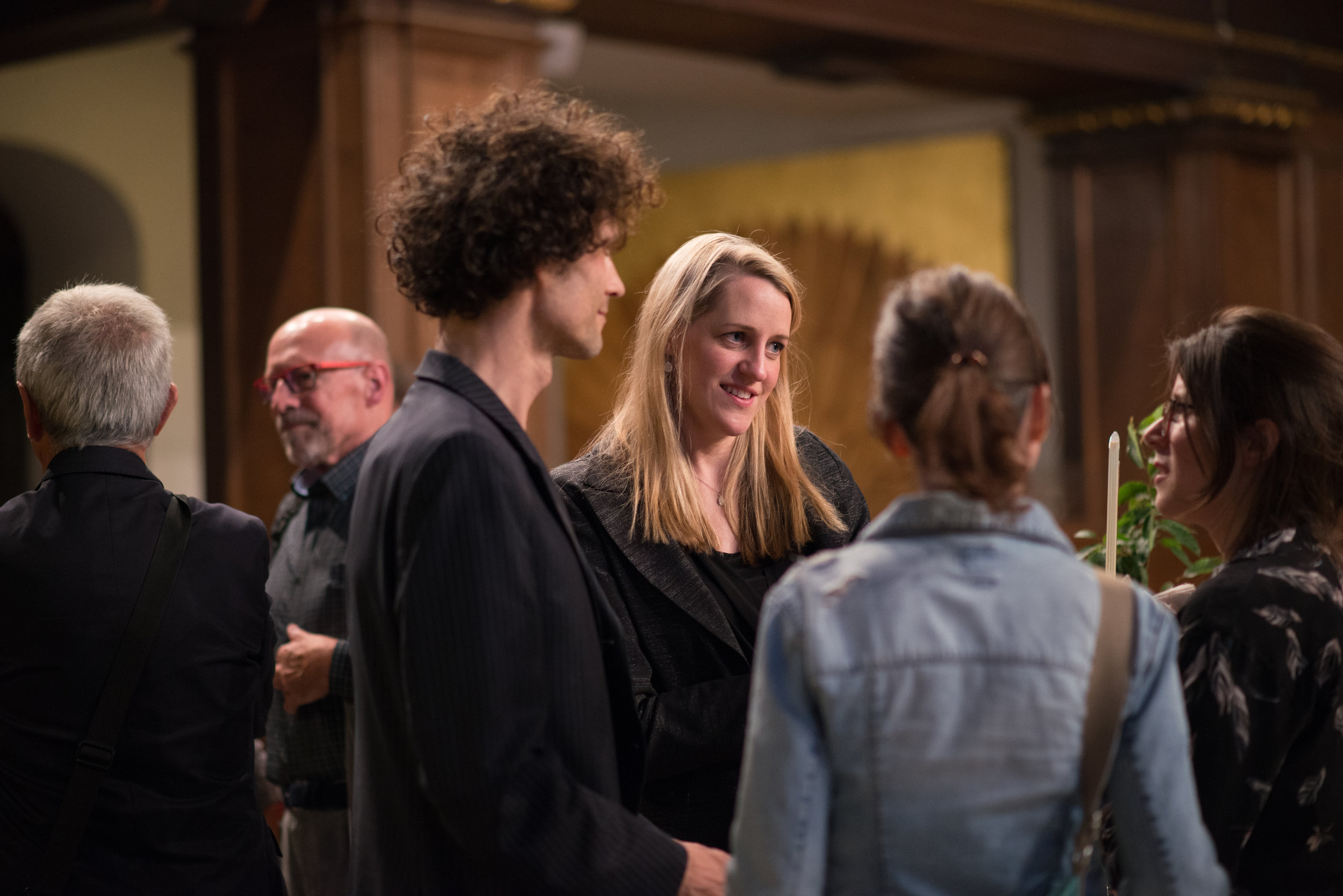
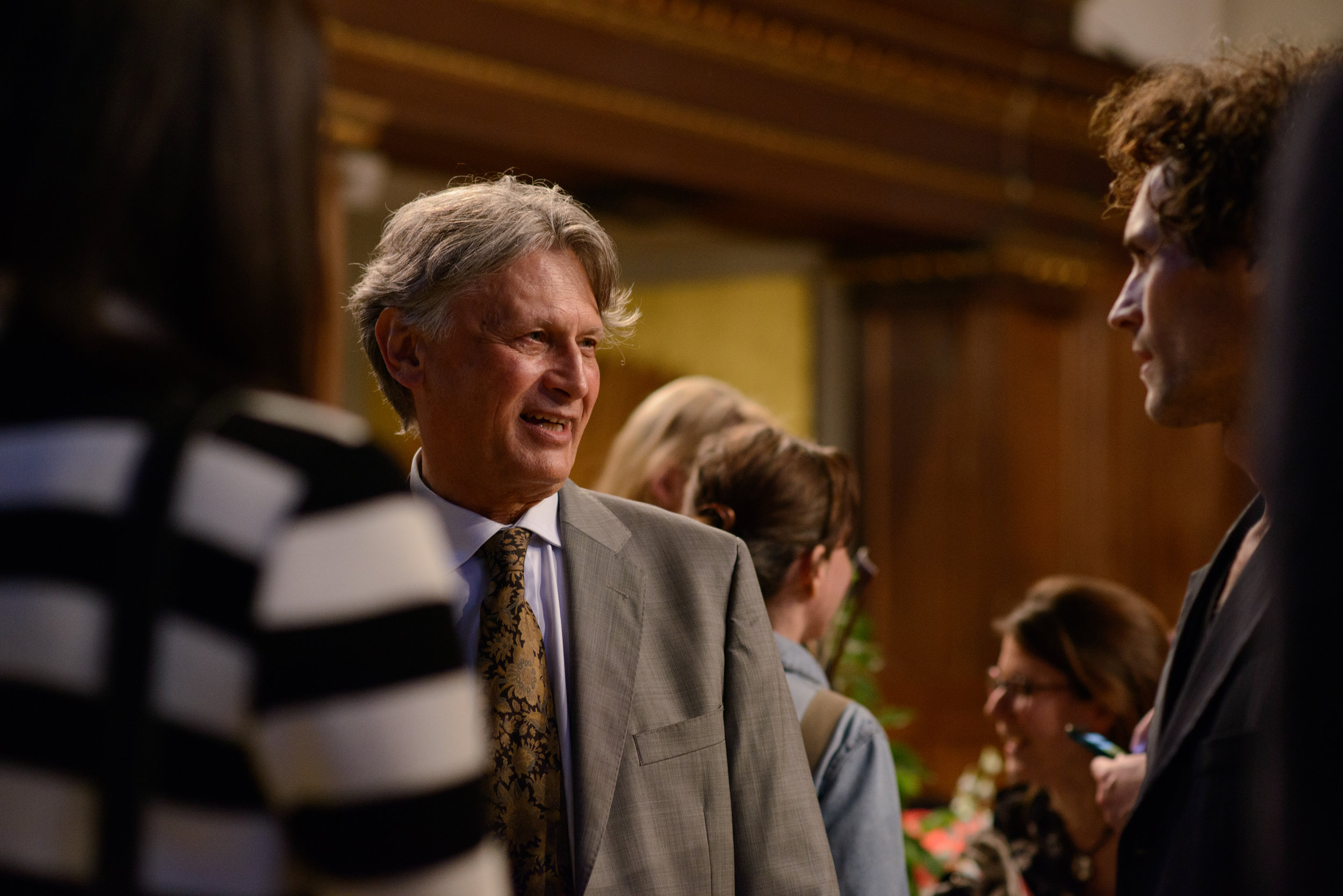
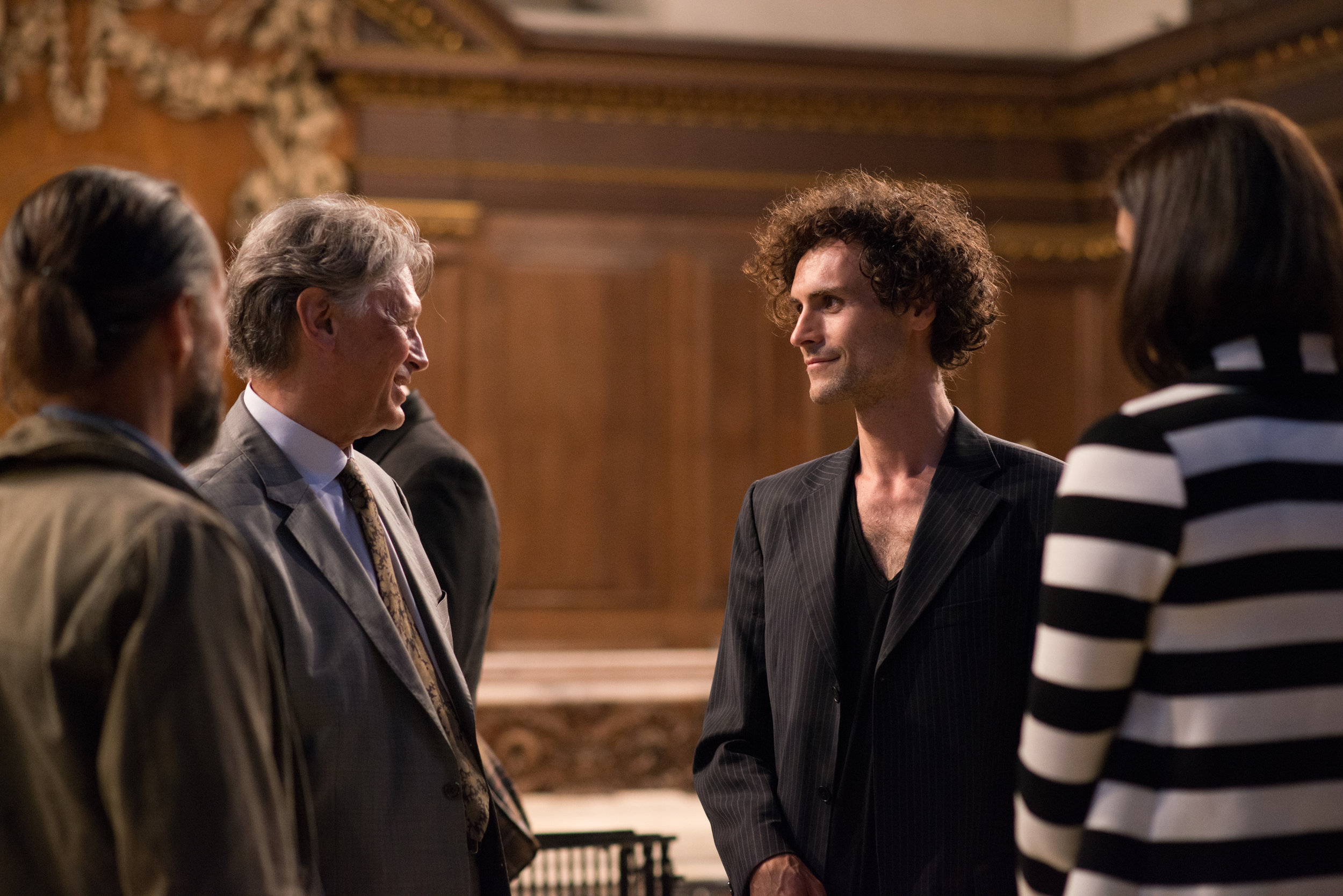
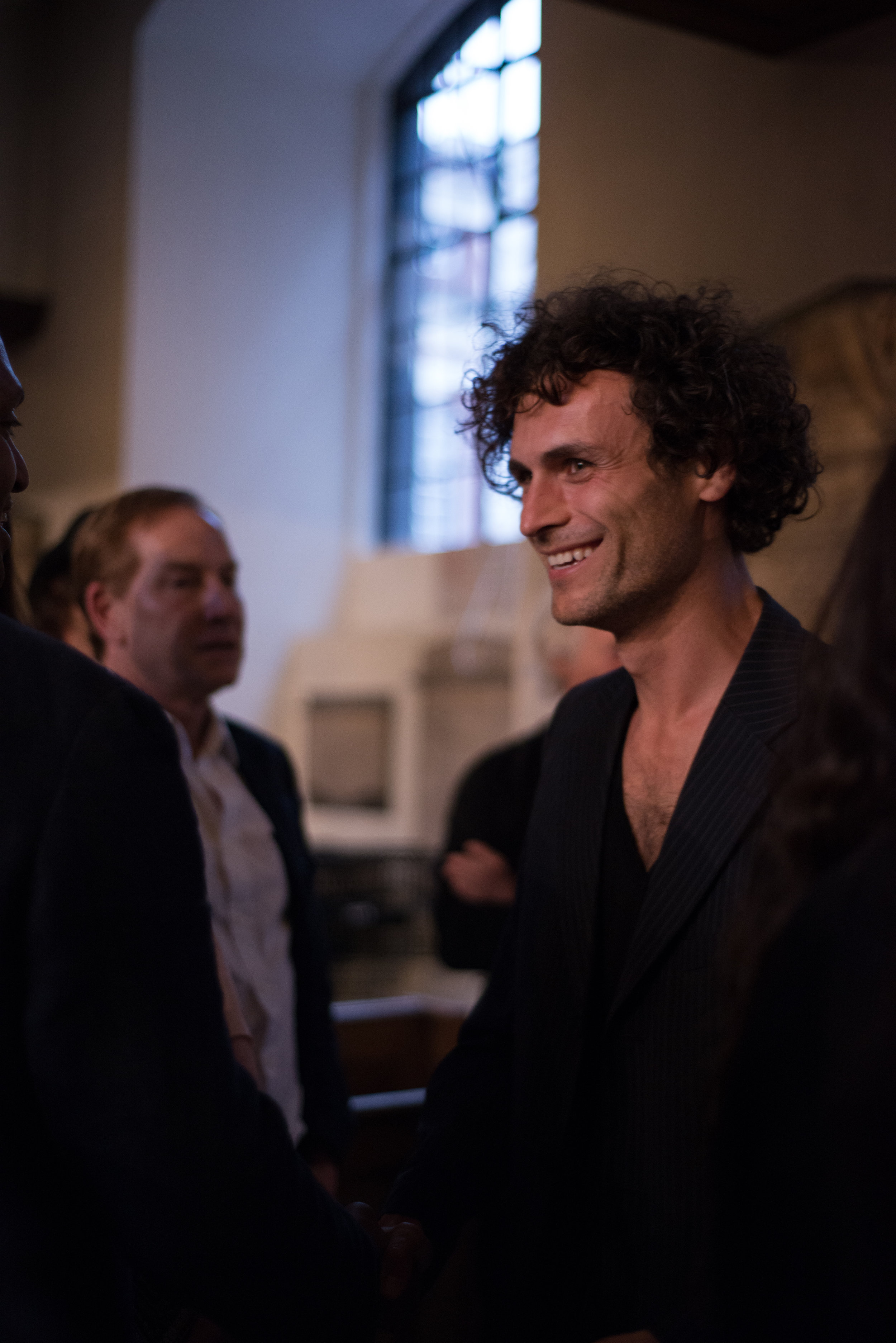
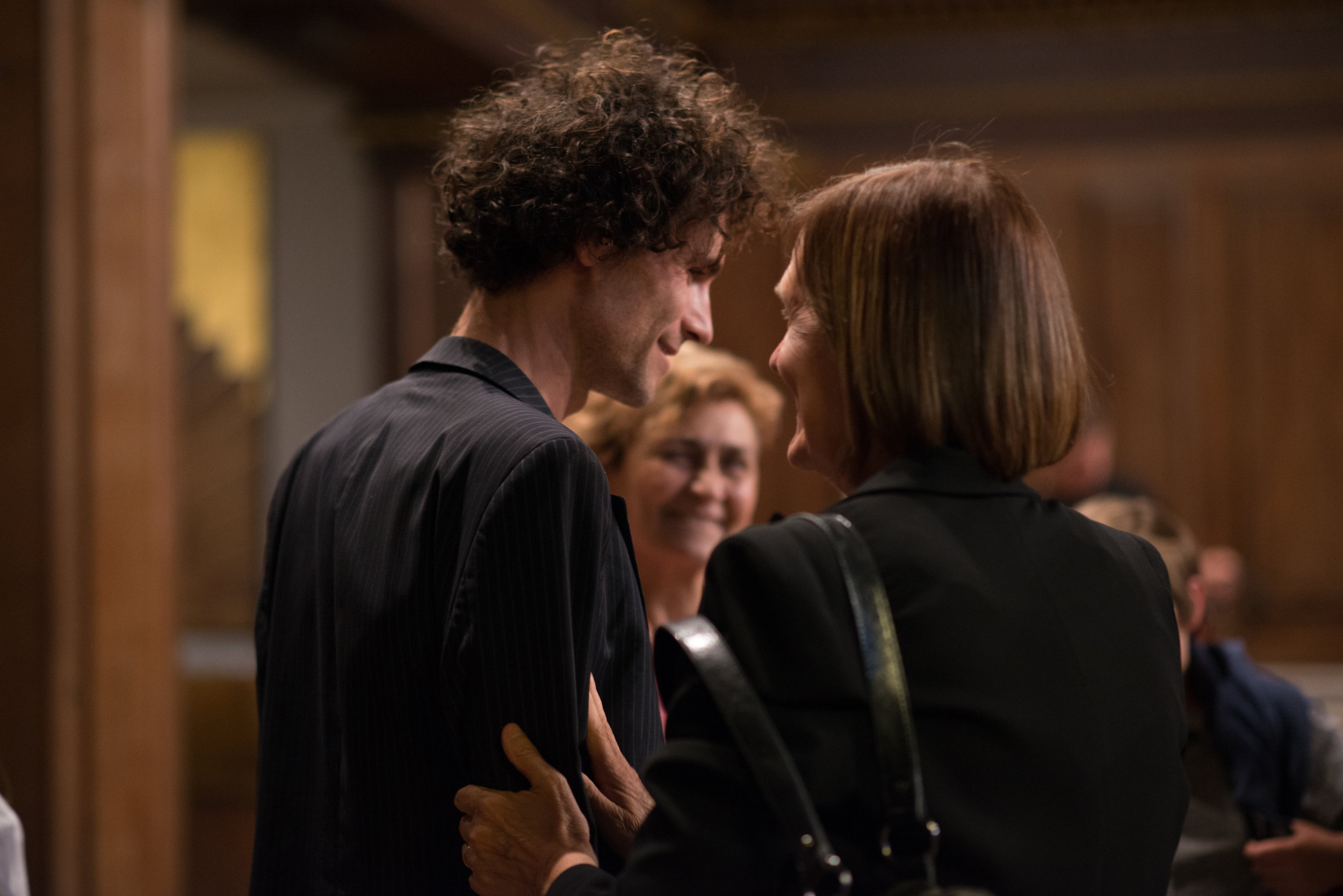
COWDRAY PARK gallery - 9th July 2016
